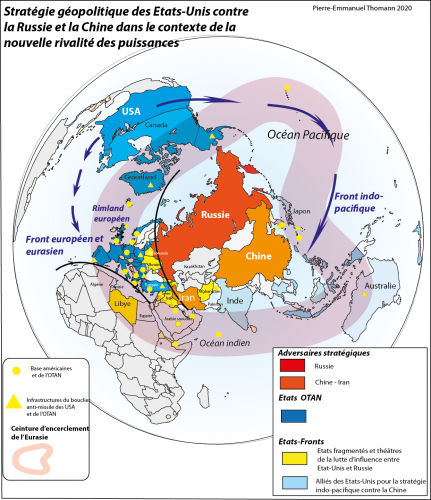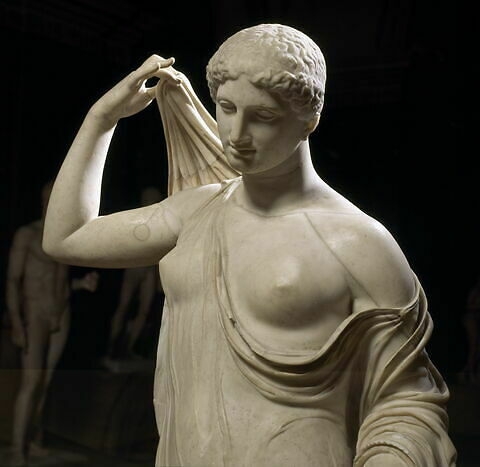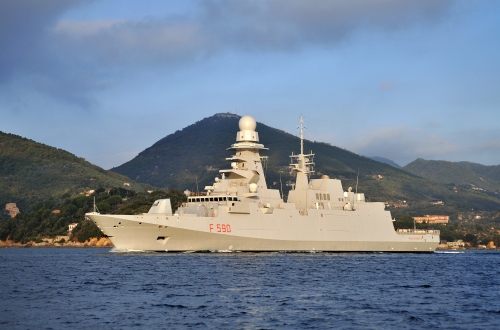jeudi, 30 septembre 2021
Les États-Unis cherchent à construire le QUAD dont personne ne veut

Les États-Unis cherchent à construire le QUAD dont personne ne veut
Salman Rafi Sheikh
Source: New Eastern Outlook & http://aurorasito.altervista.org/?p=20046
Si, pendant la guerre froide, les États-Unis ont divisé le monde entre le monde "libre", celui du capitalisme occidental, et le monde "proche" du communisme oriental pour se projeter comme le champion du monde "libre", la "guerre froide 2.0" utilise le même axiome pour désigner la Chine comme le meilleur exemple du monde "proche" que les pays du QUAD dirigés par les États-Unis doivent contenir pour établir l'Indo-Pacifique "libre".
Bien que Biden ait été catégorique lorsqu'il a affirmé, dans son discours à l'Assemblée générale des Nations unies, que les États-Unis ne souhaitaient pas une nouvelle guerre froide, l'alignement anti-chinois qu'ils cherchent à construire et à militariser par des accords tels que l'AUKUS, récemment révélé, indique une attitude globale sous-tendue par la compétition pour le pouvoir mondial qui a caractérisé la guerre froide. En blâmant la Chine sur un ton agressif, les États-Unis, sous la houlette de M. Biden, semblent concevoir un langage pour communiquer avec l'ANASE/l'Asie du Sud-Est et obtenir leur soutien contre la Chine en tant qu'alliés des États-Unis. La déclaration commune publiée par l'alliance QUAD indique que les pays membres s'engagent en faveur d'"une région qui constitue le fondement de notre sécurité et de notre prospérité communes, un Indo-Pacifique libre et ouvert, mais aussi "inclusif et résilient", ajoutant qu'"ensemble, nous nous engageons à nouveau à promouvoir un ordre libre, ouvert et fondé sur des règles, ancré dans le droit international et exempt de coercition, afin de renforcer la sécurité et la prospérité dans l'Indo-Pacifique et au-delà". S'adressant spécifiquement à l'ANASE, la déclaration indique que "nous réaffirmons notre soutien ferme à l'unité et à la centralité de l'ANASE et aux perspectives de l'ANASE sur l'Indo-Pacifique, et soulignons notre volonté de travailler avec l'ANASE et ses États membres, le cœur de la région Indo-Pacifique, de manière pratique et inclusive". Bien que la déclaration ne mentionne pas la Chine, l'accent mis par l'alliance QUAD sur l'Asie du Sud-Est montre comment le groupe cherche à faire contrepoids à la Chine plus directement qu'il ne l'a fait jusqu'à présent.
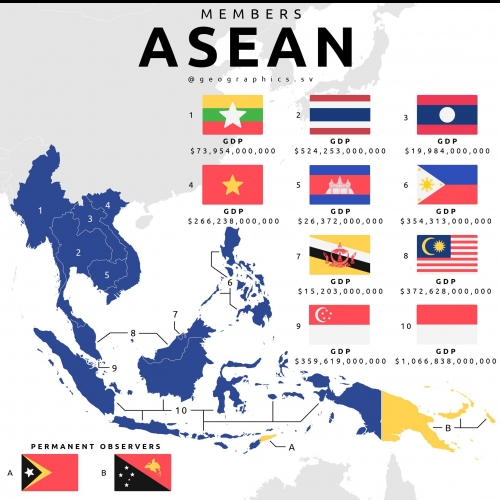
Plus de rhétorique que d'action
Toutefois, si l'on examine de plus près le QUAD, il apparaît clairement que la première réunion soi-disant "historique" des dirigeants n'a donné lieu qu'à de vagues déclarations et engagements. L'absence de mesures concrètes ne fait pas que maintenir la QUAD en tant que groupe sans unité stratégique interne, mais montre également comment les pays membres, même s'ils sont préoccupés par la Chine, continuent d'éviter de prendre le train en marche des États-Unis pour résoudre leurs problèmes avec la Chine. La seule mesure concrète que l'on trouve dans la déclaration est que QUAD s'est lancé dans la "Quad Fellowship", un programme éducatif qui "fournira 100 bourses d'études supérieures à des étudiants de premier plan en sciences, technologie, ingénierie et mathématiques dans nos quatre pays".
Au-delà de cette fraternité, un regard même superficiel sur la déclaration montre un engagement rhétorique de ces pays à prendre des mesures à l'avenir. Pour l'instant, la QUAD est rapidement entrée en hibernation, car la plupart de ses membres ne partagent pas l'impératif américain de développer une politique étrangère pour s'ancrer dans le monde après l'humiliante défaite en Afghanistan. Par conséquent, il n'y a pas beaucoup d'États heureux de laisser les États-Unis les forcer à conclure une alliance inutile. Par exemple, la réaction à l'AUKUS est indicative. L'Indonésie, que les Australiens décrivent comme leur plus important partenaire en matière de sécurité, a exprimé sa profonde inquiétude à propos de l'accord, déclarant que le pays est " profondément préoccupé par la poursuite de la course aux armements et la projection de puissance dans la région ".
Le Premier ministre malaisien Ismail Sabri Yaakob a déclaré au Premier ministre australien Scott Morrison que "AUKUS pourrait inciter d'autres puissances à agir de manière plus agressive, notamment dans la région de la mer de Chine méridionale". Le secrétaire à la défense nationale des Philippines, Delfin Lorenzana, a souligné la neutralité de son pays à l'égard de l'AUKUS, déclarant que Manille souhaite maintenir de bonnes relations bilatérales en matière de défense avec tous les pays de la région.
De même, le manque d'enthousiasme qui continue de caractériser l'alliance QUAD n'est pas seulement dû au fait que la plupart des pays ne veulent pas devenir des partenaires des États-Unis dans leur "guerre froide 2.0", mais aussi au fait que le manque de vision ne permet pas aux pays membres d'imaginer les avantages potentiels ou réels que le groupement pourrait leur offrir pour leurs intérêts nationaux spécifiques. Cela est dû en grande partie au fait que les États-Unis tentent d'imaginer et de mettre en œuvre une politique bipolaire à un moment où le monde est déjà multipolaire.
L'Union européenne adopte de plus en plus des politiques qui ne s'alignent pas sur celles des États-Unis. Elle a sa propre stratégie de coopération dans la région indo-pacifique, ce qui signifie que les pays de la région ont le choix entre de nombreuses options pour construire leurs ponts. Pour eux, les États-Unis ne sont pas la seule option.
Outre l'UE, l'ANASE dispose de ses propres mécanismes régionaux et d'accords bilatéraux solides avec la Chine pour résoudre toute question d'intérêt mutuel ou de conflit. Une autre raison importante du manque d'intérêt des pays membres de l'alliance QUAD est que le groupe n'a aucun plan pour s'engager économiquement avec l'Indo-Pacifique, et encore moins pour s'engager de manière crédible. Il met l'accent sur un Indo-Pacifique "libre" et sur une approche militariste, ce qui contraste fortement avec l'initiative "Belt & Road" (BRI) de la Chine et le partenariat économique global régional (RCEP), le plus grand accord commercial jamais signé dans l'histoire. L'approche militarisée des États-Unis, évidente dans l'AUKUS, n'est certainement pas un accord auquel l'ANASE sera heureuse de souscrire pour protéger ses intérêts, puisque, quelle que soit la nature de ses liens avec la Chine, elle n'est confrontée à aucune menace militaire chinoise. L'ANASE, ainsi que d'autres pays comme l'Inde, n'ont aucune raison de faire monter la température dans la région en s'alliant officiellement avec un groupe qui cherche justement à faire cela : militariser le conflit.
Salman Rafi Sheikh, chercheur-analyste des relations internationales et des affaires étrangères et intérieures du Pakistan, en exclusivité pour le magazine en ligne "New Eastern Outlook".
Traduction par Alessandro Lattanzio
17:53 Publié dans Actualité, Géopolitique | Lien permanent | Commentaires (0) | Tags : anase, asean, asie, affaires asiatiques, espace indo-pacifique, indo-pacifique, états-unis, quad, alliance quad, océan pacifique, politique internationale, géopolitique |  |
|  del.icio.us |
del.icio.us |  |
|  Digg |
Digg | ![]() Facebook
Facebook
Treize thèses sur la "Civilisation occidentale"
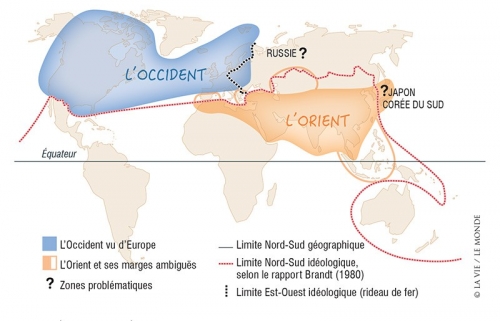
Raphael Machado:
Treize thèses sur la "Civilisation occidentale"
Ex: http://novaresistencia.org/
Sur les notions d'"Occident" et de "civilisation occidentale", il est important de reprendre et de synthétiser certains points qui, dans le giron organique-idéologique de la Nouvelle Résistance (et dans la perspective de la plupart des théoriciens dissidents actuels), sont considérés comme évidents et canoniques :
(1) La "civilisation occidentale" n'a aucun rapport avec la Grèce, Rome ou la période médiévale. C'est un terme qui a été utilisé, de manière quasi consensuelle, par des penseurs dissidents pour désigner, de manière très spécifique, la civilisation moderne, libérale, laïque et celle des Lumières. En ce sens, aujourd'hui, même le Japon fait partie de la civilisation occidentale.
(2) La civilisation occidentale a commencé en Europe, mais elle est anti-européenne, tout comme elle est anti-asiatique, anti-africaine, etc. L'essence de l'Occident est le déracinement. Le fait est que l'Europe occidentale, à un moment historique donné, a simplement réuni le degré d'aliénation spirituelle, le bagage technico-philosophique et les conditions matérielles nécessaires à la construction de ce que nous comprenons aujourd'hui comme la civilisation occidentale. Malgré cela, la civilisation occidentale n'a rien de spécifiquement européen.
(3) En ce sens, la civilisation occidentale est comme une maladie qui se propage à travers le monde, affectant les peuples de manière plus ou moins importante. Le Brésil, comme les autres pays d'Amérique latine, ne fait pas partie de la civilisation occidentale par essence, mais fait partie des régions périphériques occupées par la civilisation occidentale, dans lesquelles il existe encore un certain degré de tension entre les influences occidentales et nos propres influences civilisationnelles.
(4) Il est donc évident que l'anti-occidentalisme n'a rien à voir avec l'anti-européanisme. Au contraire, l'anti-occidentalisme est une condition nécessaire à tout européisme. Si une personne soutient la poursuite de l'occupation militaire de l'Allemagne et de l'Italie par les États-Unis, cette personne peut même être un occidentaliste, mais elle n'est logiquement pas un européiste. L'Occident et l'Europe sont des antithèses, et nous pouvons le voir dans la révolte des Gilets Jaunes en France.
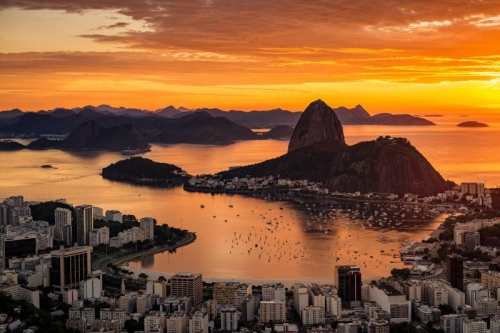
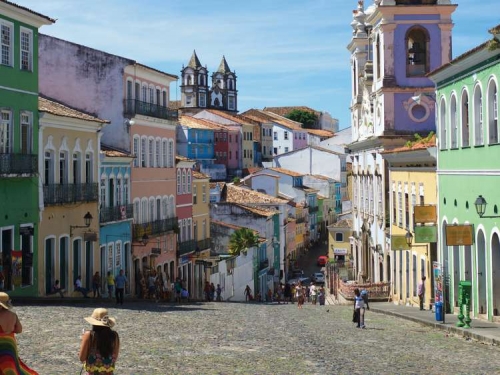
(5) Essentiellement, le Brésil fait partie d'une civilisation encore en formation, la civilisation latino-américaine, unie par le mythe d'une Nouvelle Rome. Le Brésil n'est pas européen, mais dans la mesure où l'européanité fait partie de son essence (avec les deux autres grandes influences, amérindienne et africaine), nier cette européanité, comme le fait la gauche, c'est nier la brésilianité. Au contraire, nous devrions célébrer cette européanité, comme nous célébrons déjà les autres sources et racines du Brésil.
(6) Si la gauche nie directement l'européanité, la droite cherche à remplacer l'européanité brésilienne (lusitanienne, ibérique, méditerranéenne, etc.) par un occidentalisme ultra-moderniste avec vernis anglo-saxon. Il s'agit de deux formes de négation : la négation de gauche est directe ; la négation de droite fonctionne comme une contrefaçon.
(7) Aujourd'hui, ce que nous appelons la civilisation occidentale est l'arrangement géopolitique-culturel qui exerce une hégémonie sur la planète. Le monde est unipolaire, même si cette unipolarité n'est pas stable. Pour les défenseurs des Lumières, de la modernité, du matérialisme et du libéralisme, cette situation (géopolitique) est positive et devrait être stabilisée et perpétuée jusqu'à ce que nous atteignions la fin de l'histoire (selon l'idéal de Francis Fukuyama).
(8) Mais pour ceux qui ne font pas partie de la catégorie ci-dessus, alors l'unipolarité est un problème et doit être combattue. Pour cela, il est nécessaire de soutenir toute forme de résistance contre cette hégémonie mondiale libérale. Une défaite de l'unipolarité à Madagascar est avantageuse pour nous au Brésil. Une défaite de l'unipolarité ici est avantageuse pour l'Estonie. Une défaite de l'unipolarité en Estonie est avantageuse pour le Yémen. Il ne semble pas difficile de comprendre ce raisonnement. La civilisation occidentale est l'expression culturelle du mondialisme. L'Occident, c'est le mondialisme. Et la contradiction entre le mondialisme et l'identité des peuples est la principale contradiction de notre époque.

(9) Trump possédait (et possède) un rôle dans l'aiguisement des contradictions de notre époque, qui conduira à l'effondrement de l'unipolarité. Ses tensions avec l'État profond ont en pratique conduit à plusieurs reculs par rapport aux positions avancées du pseudo-empire américain. Cela ne signifie pas et ne peut pas signifier, en aucun cas, une adhésion non critique au trumpisme. Chaque fois que Trump cède à l'État profond, il devrait être sévèrement critiqué pour avoir trahi les promesses faites à son électorat et au monde entier. Trump est un moment nécessaire dans le long processus de démantèlement de l'appareil mondialiste américain, mais il sera aussi dépassé.
(10) Toutes ces réflexions - nécessaires et vraies - ne sont possibles qu'à partir de la Quatrième théorie politique. C'est là que nous trouvons l'appareil théorique, conceptuel et intellectuel qui nous conduit à toutes ces conclusions.
(11) Dans ce scénario global, la voie du Brésil doit être construite en actualisant une certaine tradition politique du passé, significativement pertinente pour nous. Dans le cas du Brésil, la tradition politique la plus propice est le Trabalhismo, une idéologie qui a émergé du tronc de la troisième théorie politique. Le travaillisme doit être actualisé, ce qui signifie corriger ses erreurs et le relire du point de vue de la Quatrième théorie politique. Il n'y a pas d'autres options. Le résultat sera un nouveau programme, qui semblera "fasciste" pour les uns, "communiste" pour les autres, "nazi" pour certains, etc.
(12) Les affectations, les hystérismes et les purismes idéologiques par rapport à de tels constats ne sont rien d'autre que du sectarisme et du sentimentalisme, et celui qui ne le comprend pas ne possédera jamais les conditions d'un quelconque projet alternatif pour le Brésil. Il est inutile de répéter ad nauseam les erreurs historiques du travaillisme, puisque la NR a déjà procédé à une mise à jour organique du travaillisme à la lumière de la quatrième théorie politique : le travaillisme défendu par la NR est un travaillisme révisé et purifié de tous ses défauts - adapté aux défis de notre époque et ajusté à ce que nous appelons le nationalisme du XXIe siècle.
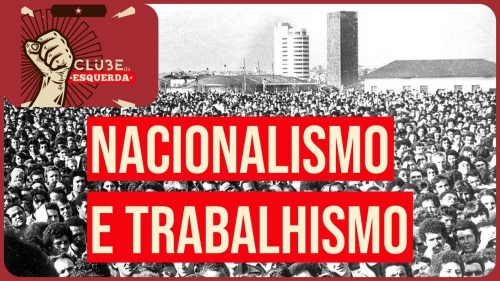
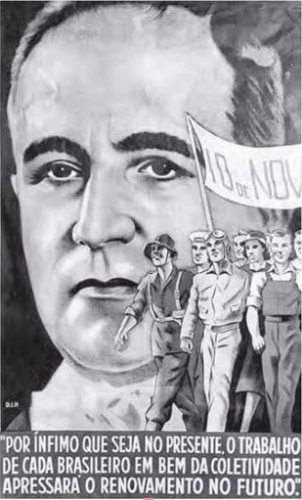
(13) Les objectifs du combattant patriotique et révolutionnaire brésilien (organiquement incarné dans le RN comme "parti national-révolutionnaire d'avant-garde"), pour être atteints et concrétisés, exigent la possession du Pouvoir. Nous avons identifié trois types de pouvoir : celui des armes, celui des positions politiques et celui de la culture. À cet égard, la NR a une stratégie réaliste et à long terme. Les autres organisations "nationalistes" ou pseudo-dissidentes, jusqu'à présent, ont l'auto-assistance, les mêmes et la nostalgie. Il me semble qu'il n'y a aucun doute sur ce qui est le mieux. Ainsi, il n'y a qu'une seule attitude possible (pour le patriote révolutionnaire brésilien) : soutenir la Nouvelle Résistance. L'unité d'une seule Organisation disciplinée surmonte le chaos de la multiplicité des groupements qui gravitent autour de l'ego de leurs dirigeants.
17:39 Publié dans Actualité, Définitions, Théorie politique | Lien permanent | Commentaires (0) | Tags : brésil, définition, théorie politique, travaillisme, civilisation occidentale, occidentalisme, occidentisme, politologie, sciences politiques, philosophie politique |  |
|  del.icio.us |
del.icio.us |  |
|  Digg |
Digg | ![]() Facebook
Facebook
Les relations transatlantiques au miroir de l'Afghanistan
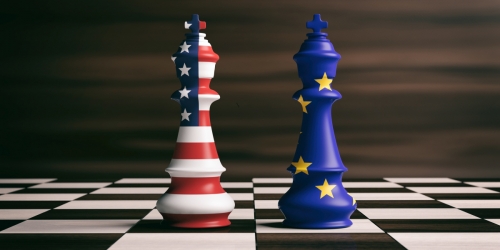
Les relations transatlantiques au miroir de l'Afghanistan
Sergey Yermakov
Ex: https://katehon.com/ru/article/transatlanticheskie-otnosheniya-v-zerkale-afganistana
Un mois après que les passions, liées au retrait manqué des troupes américaines et de celles de l'OTAN qui viennent de quitter l'Afghanistan, se soient apaisées à Washington et dans les capitales européennes, il est intéressant d'évaluer les conséquences du fiasco afghan sur les relations transatlantiques. Il convient de noter que la situation dans ce pays a évolué de manière inattendue et trop rapide et cela, dans un sens négatif pour les Américains et l'OTAN. Le retrait des troupes restantes et l'évacuation des civils de Kaboul s'apparentaient davantage à une fuite. Cela a causé d'énormes dommages à l'image des États-Unis et a réactivé les sources cachées de tendances centrifuges dans leurs relations avec leurs alliés.
En août dernier, les réunions d'urgence du Conseil de l'Atlantique Nord, du Comité militaire de l'OTAN et des ministres des Affaires étrangères de l'Alliance ont été principalement consacrées à l'adoption de mesures urgentes visant à garantir l'évacuation en toute sécurité du personnel de l'OTAN et des membres affiliés de l'Alliance, plutôt qu'à l'élaboration d'une position unifiée des Alliés sur la question de l'Afghanistan. Au départ, les experts occidentaux étaient assez sceptiques quant à la capacité de l'alliance à s'adapter rapidement aux nouvelles circonstances, en raison du choc et de la désorientation dans lesquels les forces de l'OTAN s'étaient retrouvées après la prise de contrôle éclair par les talibans.
Il convient de noter que les Européens ont tendance à considérer l'échec de la mission de l'OTAN en Afghanistan non seulement comme l'effondrement d'une seule opération, mais aussi comme un facteur qui aura de graves conséquences géopolitiques pour l'Europe et le monde, aggravant encore la crise des relations transatlantiques. C'est notamment la conclusion à laquelle est parvenu N. Loiseau, président de la sous-commission sécurité et défense du Parlement européen, qui estime que les récents développements devraient inciter l'Europe à renforcer son "autonomie stratégique" afin de garantir sa capacité à agir avec ses alliés (tels que les États-Unis) lorsque cela est possible, et indépendamment lorsque cela est nécessaire.
Pour sa part, D. Keating, senior fellow au European Center de l'Atlantic Council (USA) et correspondant à Bruxelles de France 24, note que les Européens ont été pris au dépourvu par la décision américaine de retirer rapidement les troupes d'Afghanistan sans avoir une compréhension réaliste de la vulnérabilité du régime politique de Kaboul. Selon lui, un certain nombre de pays européens, tels que le Royaume-Uni et l'Italie, ont été fortement irrités par le fait que l'administration Biden n'a pas tenu compte de leur avis sur la précipitation de ce retrait, après que leur opposition au retrait ait été ignorée lors du sommet de l'OTAN en juin. Selon l'évaluation de l'expert européen, le retrait rapide et en fait mal coordonné d'Afghanistan, qui a conduit à l'effondrement du leadership pro-occidental dans ce pays, renforcera le débat à Bruxelles sur l'"autonomie stratégique" européenne et la nécessité de développer une capacité de défense européenne indépendante. Ces actions américaines soulèvent également des questions sur l'engagement de l'Amérique à protéger ses alliés et sur la question de savoir si l'OTAN est réellement une alliance d'États souverains - ou simplement un protectorat militaire dans lequel les véritables décisions sont prises par Washington seul.
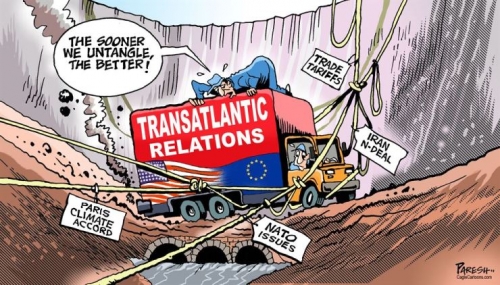
L'effondrement de la crédibilité de la politique étrangère américaine et des services de renseignement et militaires américains porte atteinte à l'autorité politique et morale de l'Occident dans son ensemble, déclare D. Schwarzer, directeur exécutif pour l'Europe et l'Eurasie à l'Open Society Foundations. Selon elle, l'exemple de l'Afghanistan démontre une trop grande dépendance des Européens à l'égard des États-Unis - et en même temps une trop faible prise en compte de leur point de vue à la Maison Blanche.
Dans le même temps, B. Masaes, ancien secrétaire d'État portugais aux affaires européennes, signale un grave problème pour l'Europe lié aux réfugiés d'Afghanistan. Selon ses évaluations, il existe un risque de nouvelles attaques terroristes contre l'Europe organisées à partir de ce pays. Masaes souligne également que la crise des réfugiés n'est qu'une partie de la destruction, voire de la désagrégation de l'ordre existant précipitée par les événements afghans. Selon lui, sous l'ancien président américain D. Trump, des doutes sont apparus sur l'engagement de l'Amérique envers ses alliés et ses engagements européens. Toutefois, l'analyste portugais estime que les événements afghans ont déjà jeté le doute sur la compétence américaine en tant que telle. Selon lui, la réponse ne peut être qu'une capacité européenne accrue à affronter seule un monde de plus en plus dangereux.
A son tour, M. Laschet, président de l'Union chrétienne-démocrate d'Allemagne et candidat à la chancellerie de centre-droit - a qualifié l'opération afghane de l'OTAN de "plus grand échec de l'alliance, qu'elle subit depuis sa fondation". Selon M. Laschet, une "analyse complète des erreurs" est nécessaire tant à Washington qu'à Bruxelles.
Les experts américains soutiennent de tout cœur l'avis de leurs collègues européens selon lequel les leçons de l'Afghanistan doivent être soigneusement étudiées. Par exemple, un analyste respecté du Centre d'études stratégiques et internationales de Washington, E. Cordesman, en parle dans son rapport. Cependant, il y a une nuance à apporter. Tout en admettant que l'absence de consultations complètes avec les partenaires de l'OTAN est inacceptable, l'analyste américain suggère néanmoins que l'Europe doit adopter une approche beaucoup plus réaliste de sa dépendance stratégique vis-à-vis des forces armées américaines. Par conséquent, les Européens devraient faire davantage pour améliorer leurs propres capacités militaires plutôt que de discuter du partage de la charge financière. Selon M. Cordesman, en réclamant une plus grande "autonomie stratégique", l'Europe devrait reconnaître qu'il n'existe pas aujourd'hui d'alternative européenne crédible à l'Alliance de l'Atlantique Nord. C'est pourquoi, selon lui, de nouvelles mesures sont nécessaires pour améliorer l'efficacité de l'OTAN et l'adapter aux nouveaux défis, plutôt que de détruire ce bloc, qui est pour l'instant irremplaçable.
Dans le même temps, l'analyste américain R. Ellehuys, qui a un temps dirigé le bureau de la politique européenne et des affaires de l'OTAN du département de la défense des États-Unis, estime qu'il est important de prêter attention à l'évaluation des conséquences négatives de la défaite afghane pour l'alliance. Il s'agit avant tout, selon elle, de saper la crédibilité de l'Alliance et d'accroître la menace terroriste qui pèse sur ses membres. Ellehuys et d'autres experts américains sont particulièrement préoccupés par la possibilité que les adversaires géopolitiques de l'OTAN utilisent le "syndrome afghan" pour discréditer et saper l'unité des alliés.
A cet égard, les experts occidentaux (par exemple, de l'Atlantic Council, de la RAND Corporation et d'autres) suggèrent à l'alliance de prendre des mesures urgentes d'information et de propagande permettant de justifier les actions américaines et de l'OTAN en Afghanistan, de calmer la société occidentale et de préserver l'unité des pays membres et la confiance dans l'organisation elle-même. Dans ces circonstances, par exemple, M.D. Williams, du Conseil atlantique, estime que dans la lutte pour la survie, le slogan moderne de l'OTAN devrait être l'appel "Pour la solidarité !" et non "Pour la sécurité !".
Dans le même temps, les experts américains faisant autorité estiment que les États-Unis doivent se préparer à une situation dans laquelle Washington devra compter non pas tant sur l'OTAN, mais plutôt sur une coalition de membres individuels intéressés de l'alliance qui représentent la plus grande valeur pour les Américains, pour résoudre leurs tâches stratégiques. L'application pratique de cette approche est visible dans la création de la nouvelle alliance militaro-politique entre les États-Unis, le Royaume-Uni et l'Australie, AUKUS.
L'Alliance de l'Atlantique Nord, estiment les analystes américains, a besoin d'une nouvelle approche de la planification des forces, fondée sur une évaluation réaliste des menaces, des plans et des budgets clairs. L'OTAN doit analyser activement l'évolution des capacités des trois superpuissances mondiales et introduire un régime de consultation sur la menace croissante que représente la Chine, plutôt que de se concentrer uniquement sur la Russie ou les menaces terroristes qui pèsent sur l'Europe.
Ainsi, l'approche ajustée des États-Unis vis-à-vis de l'Afghanistan, malgré l'échec de la "sortie discrète" envisagée du pays, suggère que la tâche de démêler le nœud afghan soit laissée à d'autres États, en comptant également sur le fait qu'il deviendra un problème pour les adversaires géopolitiques des États-Unis, la Russie et la Chine. Washington prévoit d'utiliser les ressources libérées en Afghanistan pour la compétition avec eux pour le leadership mondial.
17:03 Publié dans Actualité, Affaires européennes, Géopolitique | Lien permanent | Commentaires (0) | Tags : europe, affaires européennes, otan, atlantisme, alliance atlantique, états-unis, géopolitique, politique internationale, union européenne, afghanistan |  |
|  del.icio.us |
del.icio.us |  |
|  Digg |
Digg | ![]() Facebook
Facebook
mercredi, 29 septembre 2021
L'homme est obsolète
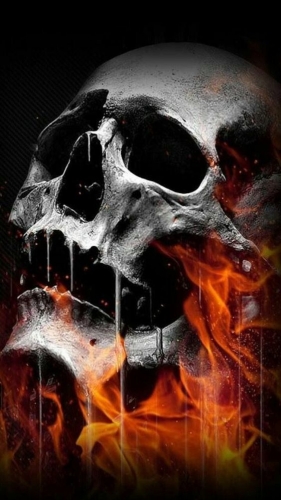
L'homme est obsolète
Carlo Gambescia
Ex: https://cargambesciametapolitics.altervista.org/luomo-e-antiquato/?fbclid=IwAR3VB5zpBJmInJasZpuPge6wsMyaHJOERDtmJ3mcSzo7eiI4UfJaV0vWb3s
Le titre est tiré d'un livre de Günther Anders, Die Antiquiertheit des Menschen, (= L'obsolescence de l'homme), philosophe allemand, pacifiste, figure culte de la gauche post-marxiste, mais néanmoins imprégnée d'utopisme négatif, cette même gauche, aujourd'hui au pouvoir, qui se "contente" (pour ainsi dire) de la transition écologique.
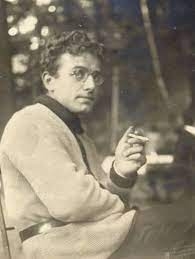


Une cause également épousée par les élites politiques libérales-socialistes (tout récemment, célébrée hier en Allemagne), un peu parce qu'elle est à la mode, un peu parce qu'elle est utile à la cause anticapitaliste. Et enfin par l'église populiste, incarnée par le pape François.
Anders a souligné l'insuffisance de l'homme par rapport à la technologie. Au cœur de sa philosophie, gravite l'idée d'un retour au monde pré-technologique et pré-industriel, pour équilibrer les comptes, entre l'humain et le non-humain (la technologie).
Ceci, comme nous l'avons dit, l'a rendu très populaire parmi les écologistes et les anticapitalistes, déclarés ou non. Ce qui explique aussi - c'est presque une blague - son divorce en 1937 d'avec Hannah Arendt, la "philosophe" par excellence, qui, si elle avait des défauts cognitifs, était coupable d'un excès de réalisme politique. Le contraire de son ex-mari : pessimiste oui, mais tourné vers le passé, vers le paradis pré-technologique perdu.
En réalité, l'homme est démodé pour une autre raison. Parce qu'il a toujours préféré croire plutôt que de comprendre. Il a donc besoin de croire, ou plutôt, si vous préférez, de "légendiser" la science et la technologie. Et, à son tour, de combattre ces derniers, au nom d'une sorte de retour à l'âge de pierre. Pour faire simple, il s'agit de passer de la légende B à la légende A. Si vous me permettez ce jeu de mots : du culte du Conseil supérieur de la santé aux cultes du soleil ou du dieu de la pluie.
Le fait est que la raison a un cours oscillant. Aujourd'hui encore, nous ne réalisons pas pleinement que deux à trois siècles de progrès technologique et scientifique, mais aussi de civilisation des bonnes manières, sont historiquement l'exception et non la règle. Ou en tout cas, un point culminant de la pensée humaine qui peut être suivi d'une chute verticale dans la direction opposée. En résumé, voilà comment les choses se présentent : les hauts et les bas de la pensée cognitive. Ça pourrait être le titre d'un livre. Probablement avec des ventes faibles...
Malheureusement, l'âge de raison, détesté par les droites les plus conservatrices et réactionnaires, a pour principal ennemi l'homme lui-même. Il remplace la raison par des légendes sur la raison, ouvrant ainsi des espaces sans fin aux ennemis de la raison et de la technologie, qui en est le prolongement naturel.
Prenons l'exemple de ce qui s'est passé ces deux dernières années. Un homme à l'ancienne, à tous les niveaux politiques (haut et bas), a cru à la légende de l'épidémie, pardon de la pandémie, et au pouvoir absolu, nous dirions salvateur, de la science médicale et de la science de l'organisation politique. Les conséquences sociales, économiques et culturelles désastreuses sont visibles pour tous.
La légende de l'épidémie semble désormais être remplacée par celle de la transition écologique. En bref, il n'y a rien à faire : les gens préfèrent encore croire plutôt que de comprendre. Le problème n'est pas la technologie, en tant que telle, mais le retard cognitif hoquetant de l'homme, qui - attention - peut le pousser à mettre la science au service de la réaction.
Après tout, en quoi consistait le discours d'Anders ? Dans la critique de la modernité, du point de vue d'un homme qui pourrait s'en passer en réduisant ses besoins.
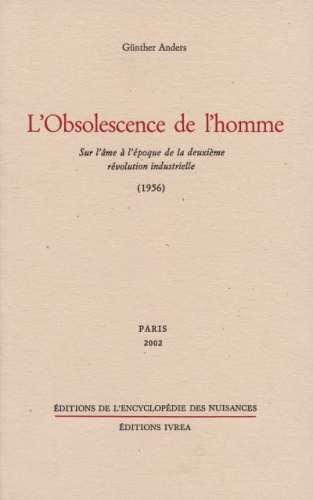
Tout cela n'est-il pas la transition écologique ? Bien sûr, pour adoucir une pilule amère, l'avenir est amplifié. Ici, cependant, ce n'est plus Anders qui parle, mais l'État, avec ses moyens extrêmement puissants. Excellent pour finir de plier les consciences sous la bannière "On sera tous plus libres après", "Quelques 'petits' sacrifices, etc...".
Bref, un avenir qui a un "cœur antique"... Le titre d'un livre de Carlo Levi, datant des années 1950, dans lequel il faisait l'éloge de l'Union soviétique en tant que gardienne des valeurs traditionnelles. Une pure absurdité utopique. Et pourtant, les gens continuent à "croire" à ces absurdités.
Y a-t-il une issue ? La droite est incapable de proposer une quelconque recette (hier, par exemple, nous avons lu un article dans lequel Veneziani faisait l'éloge de Saint Padre Pio, qui doit être en colère là-haut). La gauche libérale-socialiste fait un clin d'œil complaisant aux mouvements écologiques. Et les gens ordinaires "préoccupés" par "l'avenir de la planète" applaudissent, ou presque.
Oui, l'homme est obsolète.
Carlo Gambescia
11:38 Publié dans Actualité, Philosophie | Lien permanent | Commentaires (0) | Tags : carlo gambescia, obsolescence, philosophie, günther anders |  |
|  del.icio.us |
del.icio.us |  |
|  Digg |
Digg | ![]() Facebook
Facebook
Marx et le délire administratif à la française
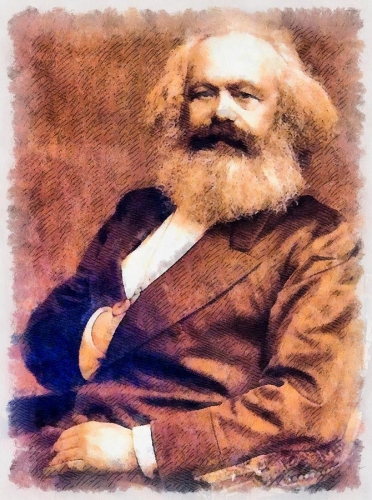
Marx et le délire administratif à la française
par Nicolas Bonnal
La dictature sanitaire est une aubaine pour notre administration traditionnellement tyrannique. Elle est aussi parfaitement acceptée par 80% ou plus de la population. Comprenons pourquoi car les causes sont anciennes. Tocqueville écrit déjà dans des lignes immortelles :
« Au-dessus de ceux-là s'élève un pouvoir immense et tutélaire, qui se charge seul d'assurer leur jouissance et de veiller sur leur sort. Il est absolu, détaillé, régulier, prévoyant et doux. Il ressemblerait à la puissance paternelle si, comme elle, il avait pour objet de préparer les hommes à l'âge viril; mais il ne cherche, au contraire, qu'à les fixer irrévocablement dans l'enfance; il aime que les citoyens se réjouissent, pourvu qu'ils ne songent qu'à se réjouir. Il travaille volontiers à leur bonheur; mais il veut en être l'unique agent et le seul arbitre; il pourvoit à leur sécurité, prévoit et assure leurs besoins, facilite leurs plaisirs, conduit leurs principales affaires, dirige leur industrie, règle leurs successions, divise leurs héritages, que ne peut-il leur ôter entièrement le trouble de penser et la peine de vivre ? »
En bon aristocrate libéral, Tocqueville accuse l’égalité :
« C'est ainsi que tous les jours il rend moins utile et plus rare l'emploi du libre arbitre; qu'il renferme l'action de la volonté dans un plus petit espace, et dérobe peu à peu à chaque citoyen jusqu'à l'usage de lui-même. L'égalité a préparé les hommes à toutes ces choses : elle les a disposés à les souffrir et souvent même à les regarder comme un bienfait. »
En réalité l’égalité est une conséquence et pas une cause ; elle est aussi un leurre pour tromper la masse ; on sait en plus que les élites au pouvoir sont moins égales que nous pour parler comme Orwell. C’est le pouvoir moderne, le minotaure de Bertrand de Jouvenel, qui a enflé comme la grenouille. Et Marx écrit quelques années seulement après Tocqueville, quand le bonapartisme a tout phagocyté en France terre de liberté et des droits de l’homme ; c’est dans le Dix-huit brumaire de Louis-Napoléon, le texte le plus jamais important jamais écrit sur la condition française :
« Ce pouvoir exécutif, avec son immense organisation bureaucratique et militaire, avec son mécanisme étatique complexe et artificiel, son armée de fonctionnaires d’un demi-million d’hommes et son autre armée de cinq cent mille soldats, effroyable corps parasite, qui recouvre comme d’une membrane le corps de la société française et en bouche tous les pores, se constitua à l’époque de la monarchie absolue, au déclin de la féodalité, qu’il aida à renverser. »

Apprécions cette expression de corps parasite : n’oublions que pour Marx (ce n’est pas pour rien que le maître libertarien Rothbard l’appréciait) rêve de la disparition de l’Etat. Et ajoutons que les corps parasites, hauts fonctionnaires, médecins vaccinateurs, journalistes 100% subventionnés et étatisés, profs socialistes de père en fils et autres butors de la police et de la gendarmerie s’en donnent à cœur joie en ce moment. On a cherché des Jean Moulin et on n’en a pas eu plus qu’en 1940 ; car ce fut cet étatisme (liberté, carrière, retraite) qui engendra notre soumission à Vichy.
Marx rappelle notre histoire moderne :
« La première Révolution française, qui se donna pour tâche de briser tous les pouvoirs indépendants, locaux, territoriaux, municipaux et provinciaux, pour créer l’unité bourgeoise absolue : la centralisation, mais, en même temps aussi, l’étendue, les attributs et l’appareil du pouvoir gouvernemental. Napoléon acheva de perfectionner ce mécanisme d’État. »
On arrive à la perfection sous la monarchie de Juillet (voyez mes textes sur Balzac et lisez son bref et génial Z. Marcas) :
« La monarchie légitime et la monarchie de Juillet ne firent qu’y ajouter une plus grande division du travail, croissant au fur et à mesure que la division du travail, à l’intérieur de la société bourgeoise, créait de nouveaux groupes d’intérêts, et, par conséquent, un nouveau matériel pour l’administration d’État. Chaque intérêt commun fut immédiatement détaché de la société, opposé à elle à titre d’intérêt supérieur, général, enlevé à l’initiative des membres de la société, transformé en objet de l’activité gouvernementale, depuis le pont, la maison d’école et la propriété communale du plus petit hameau jusqu’aux chemins de fer, aux biens nationaux et aux universités. »
Il n’y a rien de français en France en résumé. Tout est étatique. Et Marx observe tristement :
« Toutes les révolutions politiques n’ont fait que perfectionner cette machine, au lieu de la briser. Les partis qui luttèrent à tour de rôle pour le pouvoir considérèrent la conquête de cet immense édifice d’État comme la principale proie du vainqueur. »
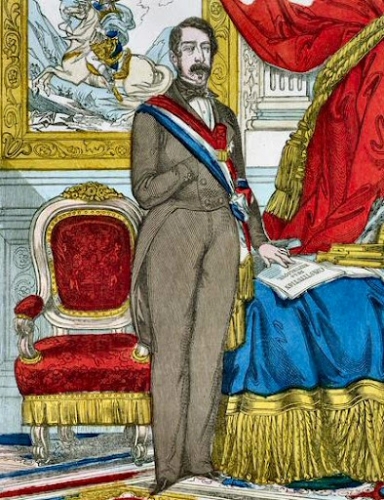
J’ai comparé il y a bientôt cinq ans Macron à Louis-Napoléon. C’est l’ère de l’hyper-présidence comme disait un imbécile de la télé. Marx écrit :
« Ce n’est que sous le second Bonaparte que l’État semble être devenu complètement indépendant. La machine d’État s’est si bien renforcée en face de la société bourgeoise qu’il lui suffit d’avoir à sa tête le chef de la société du 10 Décembre, chevalier de fortune venu de l’étranger, élevé sur le pavois par une soldatesque ivre, achetée avec de l’eau-de-vie et du saucisson, et à laquelle il lui faut constamment en jeter à nouveau. »
Et d’expliquer la tristesse française :
« C’est ce qui explique le morne désespoir, l’effroyable sentiment de découragement et d’humiliation qui oppresse la poitrine de la France et entrave sa respiration. Elle se sent comme déshonorée. »
Depuis on est descendu plus bas. Dans ses admirables et inépuisables Commentaires, Guy Debord écrit après avoir cité Marx :
« Voilà qui sonne tout de même un peu bucolique et, comme on dit, dépassé, puisque les spéculations de l’État d’aujourd’hui concernent plutôt les villes nouvelles et les autoroutes, la circulation souterraine et la production d’énergie électronucléaire, la recherche pétrolière et les ordinateurs, l’administration des banques et les centres socio-culturels, les modifications du « paysage audiovisuel » et les exportations clandestines d’armes, la promotion immobilière et l’industrie pharmaceutique, l’agroalimentaire et la gestion des hôpitaux, les crédits militaires et les fonds secrets du département, à toute heure grandissant, qui doit gérer les nombreux services de protection de la société. »
Debord prophétisait aussi une nouvelle élite. Elle est arrivée au pouvoir avec Macron. Et je me risque non pas à une prophétie mais à une simple observation : il ne partira pas. Macron ne partira pas, Macron ne quittera pas le pouvoir, pas plus que sa clique qui se régale aux affaires en dépeçant la France.
Et tant mieux si je me trompe.
Sources :
https://www.dedefensa.org/article/balzac-et-la-prophetie-...
http://classiques.uqac.ca/classiques/Marx_karl/18_brumain...
http://achard.info/debord/CommentairesSurLaSocieteDuSpect...
http://classiques.uqac.ca/classiques/De_tocqueville_alexi...
10:59 Publié dans Actualité, Philosophie | Lien permanent | Commentaires (0) | Tags : philosophie politique, philosophie, karl marx, nicolas bonnal, histoire, france, actualité |  |
|  del.icio.us |
del.icio.us |  |
|  Digg |
Digg | ![]() Facebook
Facebook
mardi, 28 septembre 2021
Comment la démographie influence-t-elle l'équilibre géopolitique des forces?

Comment la démographie influence-t-elle l'équilibre géopolitique des forces?
Andreas Minkofski
Ex: https://gegenstrom.org/wie-beeinflusst-demographie-die-geopolitischen-machtverhaeltnisse/
"Des pays comme le Nigeria pourraient devenir les grandes puissances de l'avenir" (Paul Morland)
Paul Morland [1] a écrit un livre intéressant, The Power of Demography [2], et a été approché à ce sujet par la Neue Zürcher Zeitung. Dans une interview, il a commenté les caractéristiques importantes du développement démographique pour expliquer comment ce dernier a façonné le cours de l'histoire.
Il souligne que tout observateur attentif peut constater que, dans les sociétés avancées de l'Occident actuel, des localités entières se transforment, un groupe de résidents produisant plus de descendants qu'un autre. C'est notamment le cas lorsque des immigrants se sont installés: ils ont réussi à modifier la composition de la population en peu de temps - une affirmation qui, toutefois, ne doit pas faire l'objet d'un débat dans les médias de masse, car sinon l'accusation de racisme serait immédiatement soulevée. Le fait est que lorsque des groupes de personnes vivent côte à côte, cela soulève également la question des "rapports de force politiques". Les minorités qui ont plus d'enfants font de l'ancienne majorité une minorité et l'évincent des zones qu'elle avait auparavant façonnées. L'auteur indique clairement qu'il s'agit d'un processus historique qui a toujours débouché sur un conflit.

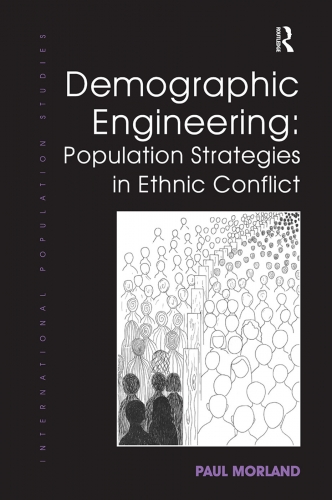
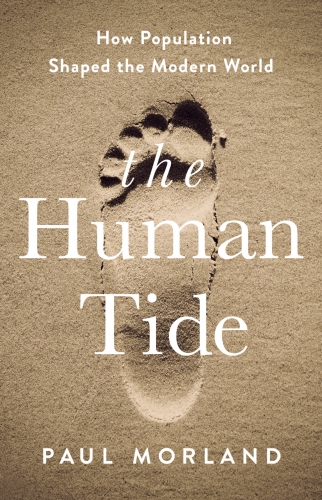
Il montre également que, dans le passé, l'augmentation de la population a souvent été assez difficile parce que des guerres et des famines dévastatrices ont limité et rendu plus difficile la croissance de la population. La modernisation, qui s'est accompagnée d'une explosion de la technologie depuis 1800, a jeté ces restrictions par-dessus bord. La mondialisation, avec sa révolution des transports, a permis d'importer des denrées alimentaires du monde entier à des prix avantageux. À partir de 1750, les famines massives qui sévissaient en Europe font partie du passé. Le progrès médical, qui a pénétré le monde entier avec la colonisation, a fait le reste. L'Afrique - et pas seulement l'Europe - doit donc à la science une baisse décisive de la mortalité infantile.
La population de l'Afrique a été multipliée par douze entre 1900 et aujourd'hui. Mais en Afrique, les femmes ont toujours autant d'enfants aujourd'hui qu'à l'époque, et cela est lié à la coutume, aux caractéristiques culturelles, aux conditions psychologiques. En Europe, en revanche, le taux de natalité est en baisse depuis des décennies en raison d'une adaptation de la population à une vie économique liée au stress (mot clé : néolibéralisme). En Afrique, par contre, on est encore loin d'un système à deux enfants. D'abord répandue en France après les guerres napoléoniennes, elle s'impose aujourd'hui dans toute l'Europe, jusqu'en Russie. Ces évolutions divergentes s'expliquent par la pauvreté et le manque de développement économique de ce que l'on appelle le tiers monde.
Ces observations sont en fait connues de tous les historiens qui veulent être pris au sérieux. Seule la population en général n'en sait pas grand-chose ou ne voit pas les liens. Ils ne connaissent rien de l'histoire de France ou du monde d'Honoré Balzac. Ils savent cependant que plus d'enfants signifie plus de soldats pour un État. Et une main-d'œuvre bon marché. Le point principal, à savoir qu'une population plus importante doit également être associée à la technologie et donc à un niveau de connaissance plus élevé de la population afin d'avoir un impact "POWER POLITIQUE" sur le monde, la plupart des gens de l'empire américain informel ne le savent pas. Ils ne voient jamais que la colonisation du monde par l'Europe n'a été possible qu'en raison d'une explosion démographique sur notre continent et qu'elle n'a été durable que parce que la TECHNOLOGIE a favorisé et renforcé ces développements. Vous ne pouvez jamais voir derrière les principaux moteurs de la politique pour expliquer pourquoi de nombreux conflits se sont terminés en faveur d'une puissance et non de l'autre. Pourquoi, par exemple, les Alliés ont-ils gagné la Première Guerre mondiale - après plus de quatre ans et demi. Cela n'était pas seulement dû aux mauvaises décisions des dirigeants des puissances centrales, mais peut s'expliquer tout simplement par le fait que les Alliés disposaient d'une supériorité démographique plusieurs fois supérieure et, en même temps, d'une technologie égale. La "Faim générale" a d'ailleurs donné le change aux puissances centrales.
Il n'est pas exclu que les États-Unis soient remplacés en tant que superpuissance dans les décennies à venir. Jetons un coup d'œil au passé: vers 1900, les États-Unis comptaient environ 90 millions d'habitants et l'Allemagne un peu plus de 60 millions. La Grande-Bretagne avait une population dans son empire de plus de 400 millions d'habitants et environ 45 millions d'habitants dans les îles britanniques. La population de la France était d'un peu moins de 40 millions d'habitants et celle de l'Italie d'environ 40 millions. La Russie en comptait environ 140 millions, l'Autriche-Hongrie environ 40 millions et l'Empire ottoman 18 millions. Aujourd'hui, c'est différent. La Turquie, bien que beaucoup plus petite en superficie, compte tout de même 80 millions d'habitants. La Russie d'aujourd'hui compte environ 145 millions d'habitants, l'Allemagne 82-83 millions et les États-Unis environ 320 millions. La Grande-Bretagne et la France environ 60 millions chacune. Et le POIDS que ces pays font peser politiquement sur la scène mondiale reflète également ces données démographiques [3]. Quelqu'un parmi la "fine intelligentsia" de l'empire américain informel sait-il seulement que la Syrie compte plus de 30 millions d'habitants et que l'ancien empire ottoman a subi proportionnellement plus de pertes humaines que l'Europe en 1915-1918? L'Égypte a fourni une armée de plusieurs millions de soldats aux Britanniques à l'époque, dont plus de 500.000 sont morts dans les batailles et de maladies. Aujourd'hui, la population y est passée à près de 99 millions d'habitants. Qu'est-ce que cela nous apprend sur la croissance démographique qui n'est pas contrôlée ?

Les MAJORITÉS naturelles de l'avenir sont principalement la Chine, l'Inde, l'Indonésie et peut-être une nouvelle entité politique en Afrique subsaharienne dirigée par le Nigeria. L'Europe n'a qu'une seule chance de s'affirmer - par une union AVEC la Russie. Le Brésil et les États-Unis sont condamnés à jouer en deuxième division - même si la population brésilienne connaît une croissance très rapide. Bien que la population y ait quadruplé au cours des 50 dernières années, cette croissance s'est considérablement ralentie dans un passé proche.
Voilà à quoi ressemblera le monde dans un avenir proche, dès que l'Afrique, l'Inde et la Chine auront techniquement rattrapé l'Occident. L'Orient redeviendra le centre du monde, avec le Moyen-Orient et, cette fois, avec l'ensemble de l'Afrique. Et il devrait être clair pour tout le monde que l'Occident essaie d'empêcher cela, même si cela n'est jamais ouvertement discuté. C'est pourquoi l'ensemble du discours est si confus et fallacieux. Ce n'est pas une coïncidence. La politique du pouvoir d'aujourd'hui exige que les gens restent gentiment en ligne. Et en même temps, c'est une des raisons pour lesquelles Merkel fait ce qu'elle fait et a fait et pourquoi les "flux de réfugiés" en Europe ne s'arrêteront jamais pour les prochaines générations. Parce que cela nécessiterait un changement complet de la "politique du pouvoir", en lien avec la "politique économique", c'est-à-dire une restructuration de la société loin des besoins des barons financiers prédateurs. Et les oligarques et les ploutocrates de ce monde, dont la base du pouvoir se trouve aux États-Unis, ne sont absolument pas prêts à le faire. Ils ne voient pas les dangers, ils ne voient que leurs profits. Il est donc hors de question pour eux de "repenser" l'économie et la société.
Il est donc important de garder à l'esprit que la croissance démographique est étroitement liée à trois facteurs : la culture et les coutumes d'une société, qui peuvent être influencées et changer sous la pression de l'extérieur. Les soins médicaux, l'enseignement supérieur et la prospérité économique entraînent généralement une baisse du taux de natalité, voire un effondrement de ce dernier au profit d'une croissance négative, car les enfants sont soudain considérés comme un investissement coûteux et, dans le même temps, on ne doit plus craindre de les perdre dans la petite enfance. En d'autres termes, un ou deux enfants sont "suffisants". Ces facteurs, mélangés dans le contexte d'un monde de sociétés qui avancent maintenant sur des voies différentes et à des vitesses différentes dans les événements contemporains, façonnent le changement historique mondial d'aujourd'hui. La question est de savoir comment intervenir ici pour équilibrer et interagir positivement afin d'éviter une catastrophe. Ceux qui croient, par exemple, qu'ils peuvent arrêter le "changement climatique" sans arrêter l'explosion démographique ne connaissent absolument rien de la planète Terre.
A propos de l'auteur :
Andreas Minkofski est un Canadien d'origine allemande qui vit avec sa femme Geneviève à Montréal, au Québec. Il est né en 1952, a étudié l'histoire, est agent immobilier et athlète de force. Il a publié le livre : "Otto von Bismarck et l'expansion coloniale allemande, 1884-1890" en français. Il travaille actuellement sur un autre livre intitulé : "Treize événements fondamentaux qui ont façonné l'Occident depuis 1347".
Notes et références
[1] https://www.nzz.ch/international/interview-laender-wie-nigeria-koennten-die-grossmaechte-der-zukunft-werden-ld.1639113?reduced=true
[2] Une grande partie de ce que j'explique ici n'est pas claire dans l'interview de Paul Morland au Neue Zürcher Zeitung, ni immédiatement apparente, ni même abordée. Mon objectif n'est pas de revenir sur ses principaux points. Je souhaite plutôt replacer une grande partie de ce qui a été dit ici dans une image globale. L'interview a déclenché cette réaction chez moi, et j'ai essayé de faire comprendre ce que nous devons nous demander : Où le voyage nous mène-t-il à l'avenir dans les circonstances actuelles ?
[3] Remarque : le fondateur du mouvement paneuropéen, Coudenhove-Kalergi, l'avait déjà compris en 1919, et c'était l'idée politique centrale qui, à ses yeux, justifiait et rendait nécessaire une union de l'Europe. Le fait qu'il soit né à Vienne et qu'il soit un Autrichien issu de la classe supérieure - son père était un ancien diplomate, sa mère une Japonaise - a certainement aussi aidé.....
12:50 Publié dans Définitions | Lien permanent | Commentaires (1) | Tags : définition, démographie |  |
|  del.icio.us |
del.icio.us |  |
|  Digg |
Digg | ![]() Facebook
Facebook
Tel était le vrai rêve de Dante

Tel était le vrai rêve de Dante
Hans Kelsen, dans "La théorie de l'État chez Dante", présente la grande et profonde utopie politique du Poète Suprême, partisan d'un empire universel fondé sur des racines chrétiennes.
par Andrea Muratore
Ex: https://www.ilgiornale.it/news/cultura/dante-politico-cos-sognava-limpero-universale-1974989.html
Le Dante politique : comment il a rêvé de l'empire universel
Dante Alighieri est l'un des plus grands représentants de la littérature mondiale de tous les temps et peut être défini, d'un point de vue culturel, comme le "père" de l'Italie moderne. Mais la figure du poète florentin transcende cette dimension nationale de base et, si l'on y regarde plus attentivement, il transcende également la dimension littéraire: Dante a été célébré au cours des siècles comme un homme doté d'un profond esprit théologique, même par des papes tels que Benoît XV, Paul VI et Benoît XVI, comme une icône de l'exilé à la recherche d'une patrie, comme un penseur prophétique et également comme un théoricien politique.
Et c'est précisément sur ce dernier front que l'on peut saisir pleinement l'élan de Dante vers l'universalité, étudié avec soin par l'un des plus grands théoriciens du droit du vingtième siècle, Hans Kelsen, qui avec La théorie de l'État chez Dante, publiée pour la première fois en 1905, a montré ses dons de savant capable d'unir le monde juridique à un large éventail de disciplines.
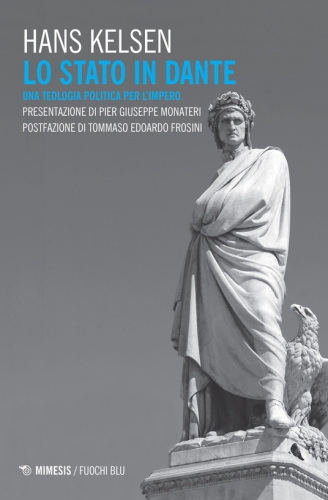
Kelsen, qui au moment de la publication de son essai monographique n'avait que 24 ans, relit dans cet essai le De Monarchia de Dante et sa vision articulée d'une théologie politique à la base d'un gouvernement global du monde dans le ciel duquel deux soleils, l'Empire universel et l'Église, devraient briller, dans la vision proposée par le Poète suprême.
Pour Dante, l'universalité est la solution aux problèmes de fragmentation politique de l'Europe de son temps, un principe régulateur qui permettrait l'ascension d'un prince, l'empereur, comme ordonnateur du besoin de cohésion du continent au nom de la voie royale vers l'unité au nom de l'œcuménisme catholique. Celui de Dante étudié par Kelsen est un empire plus "sacré" que "romain", fruit de ce que le savant autrichien né à Prague identifie comme une lex divina que le fils d'une Florence divisée, victime personnelle des schismes au sein de la même faction guelfe de la Commune, identifie comme visant inévitablement à la création d'une monarchie universelle. Kelsen note que chez Dante "le principe ordonnateur suprême est le principium unitatis. L'unité est en même temps un bien; en toutes choses, ce qui a plus d'unité en soi est meilleur. L'existence de l'unité est la racine de l'existence du bien. La multiplicité, par contre, est le mal; l'existence de la multiplicité est la source de l'existence du mal". Et l'ordre collectif garanti sur terre par l'Empire est considéré comme la meilleure des sociétés possibles dans laquelle les individus peuvent construire leur chemin personnel vers l'ordre céleste promu par la bonté divine.
 De ce point de vue, Dante est pleinement un enfant de son temps. Profondément et intimement chrétien, aligné sur les luttes politiques qui impliquaient l'Italie à l'époque, Dante a lu avec une lucidité critique le paradoxe d'une péninsule qui entendait être, décennie après décennie, toujours plus riche, plus opulente et pleine de potentiel par rapport au reste de l'Europe, mais qui, précisément à cause de cela, était aussi et surtout de plus en plus victime d'appétits croisés de la part des souverains étrangers, auxquels le poète suprême espérait que l'intervention d'un empereur remédierait.
De ce point de vue, Dante est pleinement un enfant de son temps. Profondément et intimement chrétien, aligné sur les luttes politiques qui impliquaient l'Italie à l'époque, Dante a lu avec une lucidité critique le paradoxe d'une péninsule qui entendait être, décennie après décennie, toujours plus riche, plus opulente et pleine de potentiel par rapport au reste de l'Europe, mais qui, précisément à cause de cela, était aussi et surtout de plus en plus victime d'appétits croisés de la part des souverains étrangers, auxquels le poète suprême espérait que l'intervention d'un empereur remédierait.
Et Kelsen observe avec les yeux du juriste la tension intrinsèque de sa pensée politique, soulignant dans l'œuvre littéraire de Dante la présence d'une volonté ordonnatrice désireuse de créer non seulement les fondements idéologiques, politiques et culturels de sa vision d'un empire catholique et universel, mais aussi les sources de droit capables de le gouverner. Un empereur au pouvoir direct sur ses sujets, légitimé par la présence d'un contre-pouvoir pastoral et œcuménique, non déifié et capable d'avoir l'ordre comme étoile polaire de son action était, selon Kelsen, la figure à laquelle pensait Dante, ayant probablement à l'esprit la possibilité d'une répétition de l'épopée de Frédéric II, mort quelques années avant sa naissance.
Sept cents ans plus tard, on ne peut manquer de souligner la profonde complexité de l'universalisme de Dante et la grande profondeur théologique et politique de la pensée du poète florentin, qui a tenté en vain de résister à la désintégration de l'Italie et de l'Europe en opposant des principes d'ordre et de régulation qui, à l'époque de la naissance des États-nations, semblaient dépassés, mais qui ont démontré la volonté de résister au désordre croissant qui s'amplifiait au niveau systémique. Et la complexité de l'universalisme de Dante est bien plus grande que celle des exemples actuels de doctrines politiques désireuses de se rendre palingénésiques en divisant clairement entre amis et ennemis, entre "Nous" et "Eux", entre submergés et sauvés, entre citoyens ayant des droits et citoyens rejetés pour être ensuite définitivement marginalisés. Les régimes totalitaires du vingtième siècle et le néolibéralisme, avec leur universalisme fondé sur des concepts simplistes et fallacieux, visent à diviser l'humanité en détruisant ses racines. Le potentiel de Dante tendait, au regard d'un univers eurocentrique, à les unir en se concentrant sur un principe clé de la matrice religieuse et d'une institution séculaire. Représentant la plus grande utopie de l'œuvre du Poète Suprême.
12:13 Publié dans Littérature, Théorie politique | Lien permanent | Commentaires (0) | Tags : dante, littérature, moyen-âge, littérature italienne, lettres, lettres italiennes, théorie politique, gibelinisme, sciences politiques, hans kelsen, politologie |  |
|  del.icio.us |
del.icio.us |  |
|  Digg |
Digg | ![]() Facebook
Facebook
Le port de Hambourg devient chinois. Le dernier cadeau de Frau Merkel à Pékin

Le port de Hambourg devient chinois. Le dernier cadeau de Frau Merkel à Pékin
Marco Valle
Ex: https://blog.ilgiornale.it/valle/2021/09/27/il-porto-damburgo-diventa-cinese-lultimo-regalo-di-frau-merkel-a-pechino/#disqus_thread
La République populaire de Chine a résisté à la pandémie mondiale sans trop de dommages (du moins en apparence) et poursuit son expansion économique, politique et militaire. Partout, vraiment partout. Même sur les mers. Pour la première fois de sa longue histoire - à l'exception de l'intermède du quinzième siècle avec les expéditions de l'amiral Zheng Hen - elle a créé une grande marine militaire et marchande, se transformant ainsi en une puissance maritime. Un objectif ambitieux et sans précédent, comme le rappelle Edward Sing Yue Chan, qui fait "partie intégrante du 'rêve chinois' de renouveau national". C'est l'un des principaux objectifs du président depuis son arrivée au pouvoir, comme il l'a réitéré en 2017 dans un discours aux commandants de la marine" (Limes, n° 10/ 2020).
L'essor thalassocratique et naval de la Chine repose sur un réseau efficace d'alliances et d'influence étendu de l'Asie du Sud à l'océan Indien. C'est la stratégie du "collier de perles", un long cordon de comptoirs et de relais dans lequel Pékin a englobé le Sri Lanka, la Birmanie, le Bangladesh, les Maldives, le Pakistan et, depuis 2017, Djibouti en Afrique, la première base militaire du Dragon hors du territoire national. Officiellement, cette installation (la première garnison militaire permanente de la République à l'étranger) est un point d'appui pour les navires et les équipages engagés dans des missions de lutte contre la piraterie.
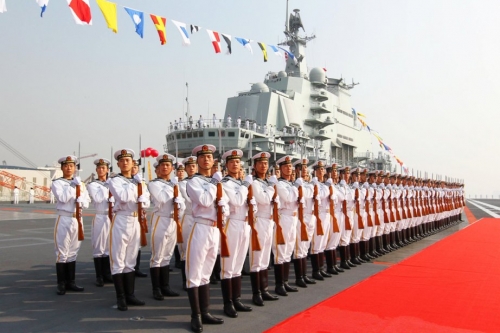
Depuis 2008, Pékin a déplacé plus de 70 unités, dont des destroyers, des frégates et des navires de ravitaillement, et maintient une force opérationnelle navale permanente devant Aden. En réalité, la base répond à des logiques plus larges. L'installation a une capacité d'accueil de dix mille personnes et représente une porte d'entrée sécurisée au cœur du continent ainsi qu'un bouclier efficace pour les innombrables intérêts chinois dans la petite république.
En 2018, les Chinois, juste devant leur base, ont inauguré un port multifonctionnel, le terminal à conteneurs de Doraleh, et une usine pétrolière (tous deux gérés par l'entreprise publique China Merchants Group) ; un an plus tard, le Djibouti Damerjog Industrial Development (DDID), une zone franche de 43 kilomètres carrés gérée exclusivement par trois entreprises chinoises (coût de 3,5 milliards de dollars), a été créé. Sous la direction de la Chine en janvier 2021 (virus ou pas...), Djibouti a clôturé l'accord entre Air Djibouti, Ethiopian Airlines et l'autorité portuaire nationale (DPFZA) pour la construction d'un nouvel aéroport, futur hub africain pour les marchandises chinoises (déchargées, bien sûr, par des navires chinois au port chinois de Doraleh).
Les Chinois possèdent désormais 77 % de la dette nationale, qu'ils utilisent pour programmer et rythmer le plan de développement Vision 2035, l'avenir de ce fragment de la Corne de l'Afrique. L'objectif, comme l'indique un document de la Banque de Chine, "est de transformer le pays, qui n'est plus un centre logistique régional, en un centre financier et un carrefour commercial mondial". En bref, un nouveau Dubaï en jaune.
L'investissement de Gibutan est en synergie avec l'enclave industrielle exempte de taxes dans la zone du canal de Suez - la zone économique et commerciale Chine-Égypte-Suez - et avec la gestion par Cosco (China Ocean Shipping Co., troisième compagnie maritime mondiale après Maersk et Msc) du terminal à conteneurs du canal de Suez, une plateforme entièrement chinoise. Un choix ciblé: depuis 2001, le volume de marchandises traversant le canal a fait de la Méditerranée le principal débouché de 19 % du trafic mondial; 56 % des marchandises empruntant la voie d'eau atteignent le cœur de l'Europe. Le calcul est simple.
Suez et Djibouti sont deux pièces centrales d'un grand projet. Laissez-nous vous expliquer. Les ports maritimes sont l'objectif prioritaire de Pékin: selon une étude du Centre for Strategic & International Studies, 46 ports africains ont été financés, conçus (et sont en cours de construction) ou gérés par des entités chinoises. Cet investissement vise à garantir un traitement prioritaire aux navires à moindre coût, assurant ainsi un avantage concurrentiel aux transporteurs chinois: acheminer des volumes croissants de marchandises vers les marchés européens dans les plus brefs délais. Il s'agit notamment des projets d'extension du port commercial de Lamu, au Kenya (pour un coût de 500 millions de dollars), et de la construction du port de Bagamoyo, en Tanzanie, avec un investissement estimé à 11 milliards de dollars et la coparticipation de la Tanzanie, de la Chine et d'Oman: situé à seulement 50 kilomètres au nord de Dar es Salaam et opérationnel à partir de 2022, Bagamoyo deviendra le plus grand port d'Afrique de l'Est.

À son tour, la conquête douce de l'Afrique est imbriquée dans l'initiative Belt and Road (BRI), la "nouvelle route de la soie", une formidable offensive politique et commerciale qui concerne actuellement plus de 80 nations et s'apprête à investir toute l'Europe. C'est un projet articulé avec des investissements massifs et une planification efficace avec un objectif clair: nos économies, nos souverainetés.
Le point de départ est 2010, lorsque Cosco rachète le Pirée, le principal port de la Grèce, à un prix avantageux. L'Union européenne et l'Allemagne, trop occupées à vampiriser la Grèce, s'en sont moquées et ont donné leur accord. La concession aux Chinois de deux jetées était prévue pour 35 ans, et Cosco devait payer un milliard d'euros au total. Mais la valeur économique de l'opération devait être de 4,3 milliards au total, compte tenu des accords de répartition des bénéfices et des investissements que l'entreprise publique du Dragon s'est engagée à réaliser. L'appétit venant en mangeant, Cosco a racheté cet été 67% de l'ensemble de l'Autorité portuaire, prenant ainsi possession jusqu'en 2052 de la totalité de la structure, opérant depuis lors en tant qu'opérateur de terminal mais aussi en tant que concessionnaire, client et fournisseur de lui-même. Le Pirée est ainsi devenu la première véritable brique BRI européenne, une porte d'entrée de l'expansion commerciale et industrielle asiatique en Europe, avec des investissements massifs dans les terminaux mais aussi dans la logistique, la réparation navale et le tourisme.
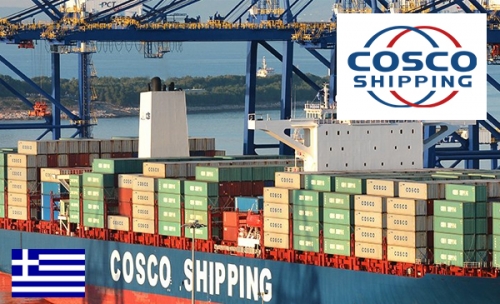
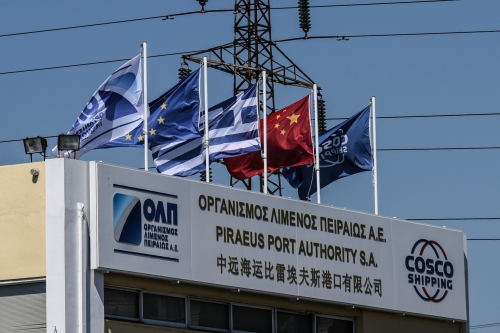
Le résultat ? Une excellente affaire, comme le confirment les chiffres: en 2009, le Pirée a traité moins de 700.000 Teu (unité de mesure des conteneurs de 20 pieds). En 2014, il en a traité 3,6 millions, en 2019, il est passé à 4,9 millions. "En 2010, souligne Alessandro Panaro, directeur de l'Observatoire du trafic maritime de Srm Intesa Sanpaolo, le Pirée n'était pas du tout compétitif, Valence faisait quatre fois ses conteneurs, Tanger Med en faisait déjà deux millions, Port Saïd trois et demi tandis que le port grec n'arrivait pas à en faire un. Depuis l'arrivée du colosse chinois, il est devenu le deuxième port de la Méditerranée et déplace aujourd'hui plus de cinq millions de Teu". Selon un rapport du Srm, en 2020, l'ensemble du système portuaire italien a transporté un peu moins de 10,7 millions de Teu...
Après le Pirée - désormais le pivot de la pénétration jaune en Europe, pour se connecter par train à Belgrade et Budapest - la Cosco a acquis d'importantes participations dans les ports de Kumport (Turquie), Ashod (Israël), Tangeri (Maroc), Cherchell (Algérie), Salonicco (Grèce), Valence et Bilbao (Espagne), Gyynia (Pologne), Rotterdam (Pays-Bas), Zeebrugge et Anvers (Belgique), Vado Ligure (Italie), acquérant ainsi le contrôle de 10% du mouvement conteneurisé du Vieux Continent ; un autre géant public basé à Pékin, China Merchant Port, détient une part minoritaire de Marseille et opère en tant qu'opérateur de terminaux ferroviaires à Venlo, Moerdijk et Amsterdam aux Pays-Bas, Willebroek en Belgique et Duisburg en Allemagne. C'est le plus grand port intermodal (fluvial) du monde, capable de traiter vingt mille navires et vingt-cinq mille trains par an, une cathédrale de la logistique intégrée.
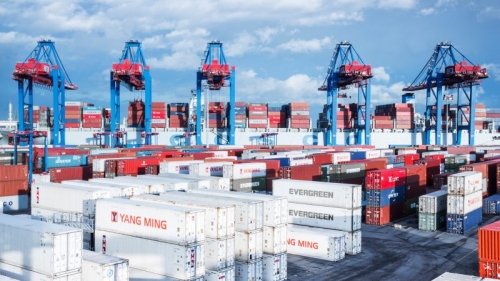
Mais ce n'est pas tout. Ces jours-ci, Cosco a conclu (dernier cadeau d'Angela Merkel à Pékin ?) l'accord pour le troisième port le plus important de l'UE, Hambourg: la société, par l'intermédiaire de sa filiale Grand Dragon, a conclu l'accord avec l'opérateur de terminal allemand Hhla pour reprendre 35% d'un des trois terminaux, le Tollerort (Ctt), au prix de 65 millions d'euros, en plus de reprendre 35 millions de dettes de Ctt avec Hhla. Bien qu'il s'agisse de la plus petite installation du port allemand, elle transporte environ 9,2 millions de TEU chaque année. Pas mal pour une entreprise qui émane directement de l'organe administratif suprême, le Conseil d'État, et donc du Parti communiste chinois.
La nouvelle a évidemment animé le débat électoral allemand (contribuant à l'effondrement de la CDU) et inquiété les bureaucrates de Bruxelles. L'accélération à Hambourg a pris au dépourvu la commissaire chargée de la lutte contre les ententes, Margrethe Vestager, qui a présenté au printemps dernier un "bouclier" communautaire pour défendre les entreprises européennes contre les rachats par des acteurs étrangers subventionnés par leur État d'origine, et a obtenu son approbation. Sur le papier, le signal envoyé à Pékin est clair : les entreprises qui reçoivent plus de 50 millions d'euros de subventions étrangères et qui cherchent à acquérir des actifs dans l'UE d'une valeur supérieure à 500 millions d'euros ou à participer à des marchés publics d'une valeur minimale de 250 millions d'euros devront notifier la transaction à Bruxelles et obtenir son approbation.
"Lorsque vous ouvrez votre maison à des invités, vous attendez d'eux qu'ils respectent les règles de la maison. Cela doit également s'appliquer au marché intérieur", a souligné Mme Vestager. Nous attendons maintenant que la loi soit approuvée par le Conseil et le Parlement de l'UE. Avant qu'il ne soit trop tard.
11:46 Publié dans Actualité, Affaires européennes, Economie | Lien permanent | Commentaires (0) | Tags : hambourg, le pirée, europe, affaires européennes, allemagne, grèce, afrique, djibouti, chine, affaires africaines, ports, installations portuaires |  |
|  del.icio.us |
del.icio.us |  |
|  Digg |
Digg | ![]() Facebook
Facebook
Novorossiya : le nom de l'avenir
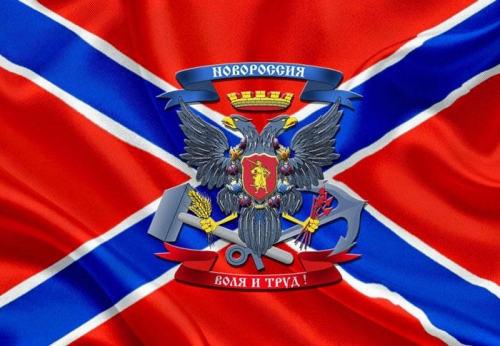
Novorossiya: la solution de l'avenir
Alexandre Douguine
Je suis profondément convaincu que la formule dite du "quatuor normand", composé de la Russie, de l'Allemagne, de la France et de l'Ukraine pour résoudre la situation dans les anciens territoires de l'Ukraine orientale, est une impasse. Cela a permis d'aplanir la situation pendant un certain temps, mais cela n'a pas résolu et ne pouvait pas résoudre le problème. En outre, Kiev a tenté à plusieurs reprises de mettre la Crimée à l'ordre du jour, ce qui compromet définitivement la possibilité même de toute discussion.
La Russie ne discute pas de la Crimée - c'est la position stricte et sans ambiguïté de Moscou, qu'elle n'abandonnera en aucun cas.
Mais ce n'est même pas là que réside la question. Le statu quo dans le Donbass est totalement insatisfaisant, que ce soit pour Kiev ou pour le Donbass lui-même. Pour Kiev, le Donbass, c'est l'Ukraine, mais pour le Donbass lui-même, l'Ukraine en ses frontières officielles a cessé d'exister depuis longtemps. Tant que la Russie est derrière le Donbass, ce "non" repose sur des assises sérieuses, égales au poids stratégique de la Russie elle-même.
Étant donné que les forces mondialistes et extrémistes sont toujours au pouvoir à Kiev et qu'elles ont commus un gâchis terrible avec le soulèvement naziste de Maidan et avec le début des opérations punitives contre la population russophone, il n'y aura pas de progrès de ce côté-là non plus. Bien sûr, les puissances européennes seraient heureuses de se retirer du problème, car personne ne souhaite entrer dans une confrontation brutale avec Moscou, mais la position globale consolidée de l'Occident et de l'OTAN dans le soutien à la junte de Kiev ne peut être remise en question. C'est la raison pour laquelle ils soutiennent la formule du "quatuor normand" en mode couvé. Cette formule ne peut pas s'éteindre complètement, mais elle n'a aucune chance de s'enflammer vraiment.
À mon avis, il est temps de se préparer, au moins théoriquement, au prochain cycle de l'histoire. Le Donbass ne reviendra jamais à l'Ukraine. Mais même l'indépendance de ce Donbass ou sa réunification à la Russie dans ses frontières actuelles ne résoudra rien non plus. Oui, les malheureux doivent enfin avoir l'occasion de vivre normalement comme des êtres humains. Mais le Donbass n'est qu'une partie de la Novorossiya. Et libérer un territoire, en laissant tout le reste à un régime néo-naziste où même la langue russe ne fait plus partie des langues officielles, serait une demi-mesure pas trop différente de ce que nous avons maintenant. Tôt ou tard, Moscou devra vraiment s'occuper de la Novorossiya.
Il faut tenir compte de l'affaiblissement spectaculaire des États-Unis - la fuite honteuse hors d'Afghanistan en est un bon exemple. La situation politique en Ukraine s'effiloche peu à peu, et tous les espoirs associés à Zelensky se sont progressivement effondrés - et ne pouvaient d'ailleurs que s'effondrer. Aucune de ses promesses aux masses, le misérable comédien n'a pu les tenir. En 2024, sa situation sera clairement désespérée.
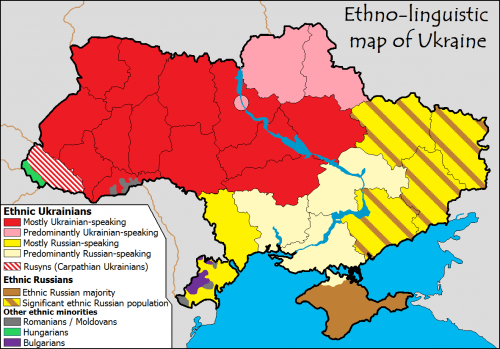
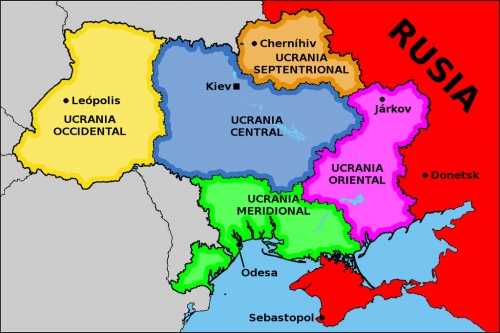
En attendant, la Russie doit se préparer à une percée stratégique. Si l'Ukraine ne peut pas être au moins neutre, elle ne devrait pas l'être du tout. Ce que je veux dire, c'est qu'à sa place, il devrait y avoir deux États confédérés - l'Ouest et l'Est. Et ce sera comme en Belgique. Deux peuples - deux territoires, deux langues. La Novorossia peut conclure un accord historique avec l'Ukraine - une sorte d'union - comme l'union de Krevsky ou de Lublin. Et c'est seulement après cela que la formule que "quatuor normand" pourra être convoquée. Ce n'est qu'alors que nous aurons vraiment quelque chose à discuter avec Kiev.
Il est inutile de s'indigner de ce qui se passe en Ukraine. La ligne choisie par les médias russes à l'égard des personnes véritablement fraternelles de la Petite Russie est très peu attrayante. Dans toute famille, le parent le plus proche et le plus cher peut devenir fou, boire jusqu'à la mort ou devenir invalide. Ce n'est pas drôle du tout. C'est un malheur. Il faut soigner un parent, et non pas lui faire honte.
Et seule l'idée d'une Novorossiya peut guérir notre cher frère slave. D'Odessa à Kharkov. Et que l'ukrainien y soit la langue officielle. Au même titre que le russe. Et tous les Slaves de l'Est, et non seulement les Slaves de l'Est, et non les Slaves en général, vivront dans ce bel État merveilleux de façon heureuse et amicale. Il ne s'agit pas de l'économie, ni du gaz, ni du fait que la population ukrainienne fuit le pays et que bientôt il n'y aura même plus personne pour regarder les émissions humoristiques et russophobes. C'est une question de principe. Kiev avait une chance historique de construire un État pour deux nations - comme l'a fait la Belgique. Là-bas, il y a des Wallons, et à côté d'eux, des Flamands. Et tous ensemble, ce sont les Belges. Mais si les Wallons exigeaient que les Flamands deviennent wallons et parlent français (ou vice versa), la Belgique disparaîtrait en un instant. Mais Kiev a raté cette occasion d'un bon confédéralisme. Irrévocablement. Et continue de le rater encore et encore.
D'où la réponse : nous reviendrons aux négociations après la mise en œuvre du projet Novorossiya.
Et ensuite nous parlerons. Sous n'importe quelle formule. Même dans sous la formule du quatuor normand.
11:22 Publié dans Actualité, Affaires européennes | Lien permanent | Commentaires (0) | Tags : alexandre douguine, actualité, europe, ukraine, novorossiya, affaires européennes, russie, donbass |  |
|  del.icio.us |
del.icio.us |  |
|  Digg |
Digg | ![]() Facebook
Facebook
lundi, 27 septembre 2021
Progressisme permissif et intolérant
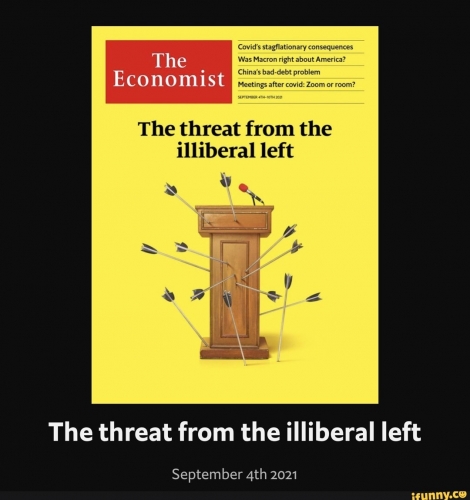
Progressisme permissif et intolérant
par Marcello Veneziani
Source : Marcello Veneziani & https://www.ariannaeditrice.it/articoli/il-progressismo-permissivo-e-intollerante
Il a fallu l'article de couverture de The Economist sur le danger de la "gauche illibérale" pour réveiller la gauche italienne de son sommeil dogmatique et présomptueux. Pendant des années, nous avons souligné et dénoncé le tournant libéral de la gauche issue du communisme et du socialisme, qui coïncidait avec la dérive néo-bourgeoise et néo-capitaliste. Mais depuis quelque temps, quelque chose se passe aux confins de cette gauche libérale: pour le dire dans le même langage anglo-américain, l'aspect radical s'accentue et les obligations et les interdictions, la censure et la suppression, les restrictions sérieuses aux espaces de liberté reprennent vigeur. La gauche semble de plus en plus une maison de l'intolérance, entre totems et tabous, interdits et intouchables.
D'un côté, la gauche marche aux côtés de la société néo-bourgeoise et néo-capitaliste, fait l'éloge de la mondialisation, se place résolument dans le camp de l'establishment, est la garde rouge du pouvoir économique, bureaucratique, judiciaire, médiatique et intellectuel. Et elle fait campagne pour une société permissive, de plus en plus individualiste et globale. Mais d'un autre côté, l'âme radicale se réveille elle aussi, et les batailles pour le libéralisme et les libérations de tous acabits sont flanquées de batailles correctives et punitives pour ramener la société dans les canons rigides du politiquement correct, de la culture du cachet et de la pensée uniforme.

Le spectacle de cette schizophrénie et de cette volte-face de la gauche, libérale dans la sphère privée et radicale dans la sphère publique, tout à la fois permissive et intolérante, est là pour tous et ne concerne pas seulement la gauche italienne et la direction de Letta.
C'est un processus généralisé qui donne lieu aujourd'hui à des crises internes de rejet. D'une part, il y a la dissidence de certains intellectuels et philosophes de "gauche" contre le régime des restrictions sanitaires imposé pour la pandémie, avec les cas les plus évidents d'Agamben, Cacciari, Barbero; et, d'autre part, le malaise des intellectuels et des observateurs de gauche face à ce courant dément, intolérant et puritain de la cancel culture, qui s'est répandu des États-Unis à l'Europe - de Noam Chomsky à Federico Rampini - sur cette vague jacobine de censure et de destruction, d'omertà et d'hystérie gendériste, qui s'est abattue sur l'histoire, la tradition et la culture de l'Occident et sur les relations sociales et sexuelles. Il y a deux façons de violer la culture et l'histoire: l'actualiser par la force ou l'effacer, la nier. Les deux voies sont fréquentes, omniprésentes, voire dominantes aujourd'hui.
Le Festival de philosophie de Modène était consacré au thème de la liberté, et il est à la fois inutile et ennuyeux de constater que le défilé était réservé à la même troupe de personnages, sans voix dissonantes si elles ne sont pas dans cette ligne de pensée; et en plus avec l'auto-congratulation par laquelle le Festival a honoré les quotas roses. Deux critères qui rendent déjà grotesque et incohérent le thème auquel il était dédié: la liberté mais seulement jusqu'à un certain point, la liberté sous surveillance, sans dissidence et avec hommage à la rhétorique du genre.

Mais quelle est la relation entre la culture progressiste et la liberté ? Les spécialistes de la liberté de ces dernières décennies, d'Isaiah Berlin à Ralf Dahrendorf en passant par Norberto Bobbio, ont fait la distinction entre la liberté de et la liberté pour, c'est-à-dire entre la liberté négative, en tant que non-empêchement, caractéristique du libéralisme, et la liberté positive, qui est plutôt liée à l'émancipation, à la justice sociale et à l'égalité. La position qui découle de Nietzsche, qui a posé une autre question, est: la liberté pour quoi faire ? C'est-à-dire que la liberté, sa qualité, sa dignité, se mesure à l'usage que l'on en fait et à la manière dont on vit. L'implication est que la liberté n'est pas la même pour tous, mais que les différents degrés et les différences doivent être reconnus et qu'elle ne peut aboutir à l'égalité et à l'homologation.
Historiquement, l'idée de liberté à gauche, dans le monde progressiste, antifasciste et marxiste, a coïncidé avec l'idée de libération. La libération des peuples et des individus du joug de la tradition, des hiérarchies sociales et de classe, des régimes autoritaires, répressifs ou même bourgeois, ou comme on l'appelait autrefois la "démocratie formelle". Dans la gauche classique, la liberté individuelle était subordonnée à la libération des masses, le collectif prévalait sur le personnel, la classe sur l'individu.
Et aujourd'hui ? Aujourd'hui, il y a la schizophrénie que nous avons notée précédemment: c'est-à-dire que la libération individuelle par rapport à la nature, au sexe, à la tradition, à la sphère privée, est couplée à la coercition sociale sur les jugements historiques, politiques, idéologiques et sanitaires. Nous avons ici la tunique de Nessus, le lit de Procuste, bref, un régime de restriction et d'intolérance.
Les politiques économiques de la gauche reflètent l'oscillation entre ces deux pôles: d'une part, il y a la conversion de la gauche au marché libre, au secteur privé, au capital, mais d'autre part, il reste l'idée punitive de frapper et de taxer les sources de richesse, les activités entrepreneuriales, la libre entreprise, les actifs, les maisons. C'est là un capitalisme hybride et contradictoire, avec des intermittences dangereuses. Il n'existe actuellement aucune expérience politique significative qui ait été couronnée de succès à cet égard. Et il n'existe aucun régime progressiste connu de coercition et de libération qui bénéficie d'un réel et large consensus populaire.
A tout cela s'ajoute l'utilisation intolérante de l'antifascisme pour censurer tout opposant, pour le maintenir dans la claque, dans laquelle se manifeste le paradoxe de la dérive illibertaire au nom de la liberté elle-même: un abus qui ramène artificiellement à la vie des expériences historiquement défuntes depuis plusieurs décennies, afin de disqualifier les opposants; il sert à frapper la liberté d'opinion et la diversité du jugement historique et à soumettre la vérité et la réalité au moralisme et au sectarisme idéologique. En bref, la gauche d'aujourd'hui montre qu'il est possible d'être tout à la fois permissif et intolérant, de marcher pour la libération et d'être ensuite des ennemis de la liberté. C'est le bipensiero orwellien, le double-thought, ou la double vérité, la double-truth, l'antichambre des nouveaux totalitarismes.
16:59 Publié dans Actualité, Philosophie | Lien permanent | Commentaires (0) | Tags : actualité, totalitarisme, intolérance, philosophie, progressisme |  |
|  del.icio.us |
del.icio.us |  |
|  Digg |
Digg | ![]() Facebook
Facebook
L'Amérique est en recul. Il est temps de passer à l'offensive

L'Amérique est en recul. Il est temps de passer à l'offensive
Alexander Douguine
L'hégémon se ratatine et recule partout!
Les élections en Russie sont terminées. Et c'est une bonne chose. Nous pouvons maintenant revenir aux affaires étrangères. C'est la politique étrangère qui compte vraiment. Et dans cette politique étrangère, un changement extrêmement significatif et important est en plein essor.
Le monde unipolaire s'effondre sous nos yeux. Il est sur une trajectoire descendante depuis un certain temps (depuis le 11 septembre), mais c'est en cette année clé 2021, au milieu de l'interminable crise sanitaire du Covid, que se sont produits certains événements symboliques, rendant irréversible la fin de l'unipolarité.
Déjà, Trump acceptait implicitement un ordre multipolaire, en insistant uniquement sur un statut spécial pour les États-Unis. C'était un programme parfaitement rationnel et responsable. Mais Trump a été renversé. Et cela a été perpétré par des partisans fanatiques du même mondialisme que celui que Trump combattait chez lui.
Avec le soutien des mondialistes, Biden est parvenu au pouvoir et a annoncé la grande réinitialisation. Il faisait référence à un retour aux années 90, années "dorées" (pour les mondialistes et les libéraux). La mondialisation a eu quelques problèmes, ont-ils dit, mais nous allons maintenant les régler rapidement, remettre à leur place tous les prétendants à la multipolarité et continuer à régner sur l'humanité, en l'entraînant de plus en plus profondément dans un programme insensé - presque ouvertement satanique.
Biden est intervenu et Kiev a envoyé des troupes dans le Donbass, démontrant ainsi sa détermination à "assiéger les Russes". Mais dès que Moscou a effectué des manœuvres innocentes sur son propre territoire, Washington a fait marche arrière. Nous ne parlons pas de Kiev, ce n'est pas un sujet. La grande réinitialisation a été reportée.
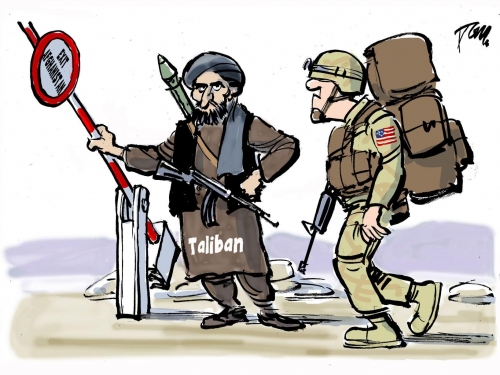
Et puis vient la fuite honteuse des États-Unis d'Afghanistan, alors qu'après 20 ans d'occupation brutale, les Américains n'ont même pas eu le temps d'emballer correctement leurs affaires (y compris leurs équipements militaires) et de renvoyer décemment leurs collaborateurs. Vers la fin, Biden tire un missile sur une voiture avec des enfants et s'en vante encore. Même Psaki a pâli devant les absurdités qu'elle a dû exprimer. L'Afghanistan est un embarras total pour l'Amérique.
Et dans la foulée, pour montrer qu'il est encore "wow", le pathétique et sénile Joe proclame l'axe anglo-saxon AUKUS, en scellant des traités avec l'Australie et en rayant d'un trait de plume les fournitures militaires françaises et italiennes (d'ailleurs, on l'oublie souvent) sur lesquelles Paris et Rome comptaient beaucoup, il détruit ainsi la cohésion de l'OTAN. En réponse, le rappel sans précédent de l'ambassadeur de France à Washington s'ensuivit. Si l'UE comprend l'enjeu de tout cela, c'est que les autorités américaines ont tout simplement perdu la tête.
Voyons maintenant ce qui se passe aux États-Unis mêmes.
Tout d'abord, Biden agit dans un contexte où l'on sait que la moitié de la population le déteste (pour une élection volée et une dictature libérale intolérante) et que tout ce qu'il fait est accueilli avec hostilité. Et dès qu'il commet une erreur - comme en Afghanistan et en Australie, sans parler de la situation totalement foireuse avec les migrants à la frontière sud des États-Unis, non seulement il commet une faute, mais il se fourvoie de manière répétée et démontrable - ses adversaires s'en emparent immédiatement, la font exploser, et commencent déjà à préparer la destitution.
Mais c'est la moitié du problème. Les mondialistes eux-mêmes qui soutiennent Biden sont divisés en droitiers et gauchistes, en faucons néoconservateurs et en ultra-démocrates avec un programme d'idéologie LGBT et de "marxisme culturel". Les néoconservateurs sont furieux du retrait de l'Afghanistan et des promesses de M. Biden de retirer les troupes du Moyen-Orient, en particulier de la Syrie et de l'Irak. En plus de sa lâcheté flagrante en Ukraine, Biden a déjà fait de son mieux pour s'aliéner la moitié de l'élite qui le soutient - les faucons.
Il semblerait que ce soit la gauche mondialiste qui devrait se réjouir. Oui, ils ont été globalement indulgents envers le retrait des troupes d'Afghanistan, mais personne aux États-Unis n'ose justifier la manière dont cela a été fait.
Mais Biden s'est ensuite souvenu des néoconservateurs et a créé, pour les amadouer, une nouvelle alliance stratégique anglo-saxonne, AUKUS (Australie, Royaume-Uni, États-Unis), écartant sans ménagement l'Europe. Il le fait sous l'égide de la guerre imminente avec la Chine dans le Pacifique. C'est là que les mondialistes de gauche se sont indignés. L'UE n'a rien contre la Chine du tout, et les mondialistes de gauche aux États-Unis essaient même d'utiliser le décollage économique de la Chine dans leurs stratégies. Pourtant, Biden l'ignore et crée AUKUS. Un tel coup porté à l'OTAN, avec en toile de fond le renforcement de la souveraineté de la Russie et du même Cathay, l'indépendance croissante de la Turquie, de l'Iran, du Pakistan, ainsi que de certains pays arabes et africains (une série de coups d'État en Afrique est également un phénomène très intéressant, nécessitant une évaluation géopolitique) - n'aboutit qu'à un affaiblissement brutal de l'élite libérale mondiale, divisée sous leurs yeux le long de la ligne - Anglo-Saxons/Européens et autres "alliés" oubliés.
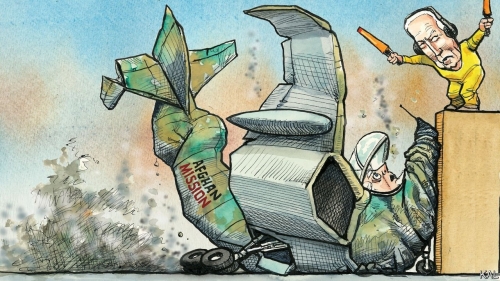
Biden a déjà réussi à frustrer la droite et la gauche mondialistes de cette manière, au milieu d'un bras de fer incessant avec les Trumpistes, qui se sont retrouvés dans une position d'opposition fermement réprimée. Lorsque Biden joue les faucons et se rapproche des néocons, il porte un coup au CFR (les mondialistes de gauche). Quand, au contraire, il essaie d'être une colombe, les mondialistes de droite entrent dans une colère noire. Si Joe Biden n'est pas un parfait perdant dans cette situation, alors qu'est-il ?
Cette situation est unique. Jamais, au cours des dernières décennies, la politique américaine n'a été aussi contradictoire, incohérente et carrément vouée à l'échec. C'est la chose la plus importante à retenir. L'Amérique est plus faible que jamais. Et c'est ce dont nous devons tirer parti. Trump s'est attelé à retirer la mondialisation de l'ordre du jour et à se concentrer sur les questions américaines, de manière consciente et responsable. Et il a négocié durement sur chaque question avec les représentants de la multipolarité croissante. Biden, paradoxalement, s'est révélé encore plus utile aux pôles multipolaires - il est tout simplement en train de détruire rapidement l'Amérique, et plus le mondialisme agonise, plus l'humanité voit clairement la faiblesse de quelqu'un qui prétendait encore récemment être le leader incontesté. Pour être réaliste (c'est-à-dire un peu cynique), mieux vaut un ennemi faible et impuissant comme Biden qu'un partenaire rationnel et conscient de lui-même comme Trump. Bien sûr, Biden est le mal absolu et un échec épique pour les États-Unis. Mais pour tous les autres... eh bien, eh bien, eh bien. Il y a quelque chose que nous commençons à aimer chez le vieux Joe...

C'est ce dont la Russie devrait profiter activement en ce moment. Le déclin rapide de l'hégémonie mondiale américaine libère de vastes possibilités dans le monde entier - des territoires, des pays, des nations, des civilisations entières. Par inertie, certains pourraient craindre l'alliance anglo-saxonne, en disant que la Grande-Bretagne revient, qu'ils vont maintenant s'allier aux États-Unis et aux pays du Commonwealth et restaurer leur emprise coloniale. (Nous parlerons du projet QUAD, plus sérieux, dans un autre article.) Qui va le restaurer ? La Grande-Bretagne n'est plus un véritable sujet de l'historie en cours depuis longtemps. Il n'y a pas grand-chose à dire sur l'Australie. D'ailleurs, la présence financière et même démographique de la Chine dans le Pacifique est déjà un facteur gigantesque aujourd'hui. L'hégémonie se réduit et recule partout. Il y a là une chance pour un grand projet continental de Lisbonne à Vladivostok (dans l'esprit de Thiriart et de Poutine), pour une alliance eurasienne russo-chinoise, pour un nouveau cycle dans les relations entre la Russie et le monde islamique, et pour une avancée en Afrique et en Amérique latine.
L'Amérique est en recul. Nous devons passer à l'offensive.
Cela nécessite une stratégie, une détermination, une volonté, une concentration des forces. Et ce qui est essentiel, c'est que cela nécessite une idéologie. La grande géopolitique exige de grandes idées. À l'heure actuelle - tant qu'il y aura un idiot au pouvoir aux États-Unis - la Russie a une chance historique non seulement de rendre la multipolarité irréversible, mais aussi d'étendre de manière spectaculaire son influence à l'échelle mondiale. L'hégémonie disparaît. Oui, c'est un dragon blessé, et il peut encore frapper fort et douloureusement. Mais il est à l'agonie. Nous devons donc faire attention aux douleurs fantômes de l'impérialisme, mais nous devons aussi garder la tête haute. Nous devons nous préparer à une contre-offensive. Tant que les choses sont telles qu'elles sont, c'est notre chance historique. Ce serait un crime de le manquer. Notre Empire est tombé en 1991. Aujourd'hui, c'est leur tour. Et il est de notre devoir de revenir dans l'histoire en tant qu'entité géopolitique pleinement souveraine et indépendante.
tg-Nezigar (@russica2)
16:38 Publié dans Actualité, Géopolitique | Lien permanent | Commentaires (0) | Tags : joe biden, actualité, géopolitique, politique internationale, états-unis, russie, multipolarité, alexandre douguine |  |
|  del.icio.us |
del.icio.us |  |
|  Digg |
Digg | ![]() Facebook
Facebook
Gifle anglo-saxonne à Macron et solitude géopolitique de la France

Gifle anglo-saxonne à Macron et solitude géopolitique de la France
Ex: http://www.elespiadigital.com/
La France subit les conséquences de sa plus grande défaite en politique étrangère depuis un quart de siècle, une défaite qui pourrait affecter la campagne électorale de Macron. Nous parlons du refus de l'Australie d'honorer le plus gros contrat avec la France ("le contrat du siècle", comme l'ont appelé les médias français) pour la construction de 12 nouveaux sous-marins de classe "Attack", qui a été finalement signé, après de longues et difficiles négociations, mais s'est retrouvé annulé en 48 heures au bénéfice des États-Unis et du Royaume-Uni. L'Australie a brusquement changé d'avis et a préféré les États-Unis à la France.
Dès le processus de négociation, la France, représentée par la société Naval Group, a assumé des coûts importants dans le projet, répondant ainsi aux souhaits des Australiens, mais la société américaine Lockheed Martin, qui a finalement obtenu le contrat, n'a reçu aucune demande de l'Australie. Le contrat perdu par la France s'élevait à 90 milliards de dollars, mais le montant du contrat avec la Grande-Bretagne et/ou les États-Unis est inconnu. Apparemment, il ne s'agit pas d'argent, mais de géopolitique.
Aujourd'hui, les Français commentent ce qui s'est passé en termes de "faux amis", de "coups de poignard dans le dos", de "coup de Trafalgar", en référence à la défaite de la France lors de la bataille de Trafalgar face à la Grande-Bretagne en 1805. Macron a même rappelé les ambassadeurs français en Australie et aux États-Unis pour des consultations afin de montrer son extrême ressentiment.
Le président français Macron a reçu une gifle de la part de l'alliance américano-britannique, déjà la deuxième ces dernières années, si l'on se souvient que lors d'une réunion dans la rue, un jeune homme a soudainement donné un coup de poing à Macron. L'incident a ensuite été étouffé, mais aujourd'hui, Macron se retrouve dans une position des plus humiliantes. Pour la culture politique française, compte tenu de son ambition, c'est prohibitif et douloureux.

Le fait est que Macron a beaucoup investi dans ces négociations avec l'Australie : argent, temps, émotions, énergie. Il mettait tout à son actif et espérait passer triomphalement les élections. Depuis 2019, la commune de Cherbourg-en-Cotentin, où se trouve la base navale, accueille une partie du projet. Une école bilingue y a déjà été construite pour les enfants des Australiens venus s'entraîner sur la base, et deux artistes australiens ont été chargés de peindre le mur du poste de police avec des motifs aborigènes australiens.
Aujourd'hui, non seulement tous ces efforts ont été vains, mais les habitants de la commune sont privés du revenu attendu. Pour eux, cette situation, selon les médias français, est un séisme socio-économique. Macron est désormais perçu comme un homme politique faible, incapable de tenir ses promesses et de protéger ses citoyens et les intérêts nationaux de la France. Il a été humilié devant le monde entier, de surcroît d'une manière assez rude.
Les États-Unis sont convaincus que cela renforcera les arguments des adversaires de Macron et lui créera des problèmes, même si cela n'affectera pas le résultat de l'élection. Il est vrai que les Français vont désormais voter non pas pour les triomphalistes, mais pour les défaitistes. Maintenant, personne ne se souviendra que l'accord avec l'Australie a été élaboré par le prédécesseur de Macron, Hollande.
Le contrat a connu des difficultés, mais M. Macron a rencontré personnellement le Premier ministre australien Scott Morrison après le sommet du G7 à Londres, et les médias français ont ensuite écrit que "le contrat du siècle avait été sauvé". Macron aurait dû avoir un triomphe et aura en fin de compte une défaite.
On peut dire que la France a renoué avec le boomerang des Mistral. C'est elle qui a annulé le contrat avec la Russie pour les porte-hélicoptères déjà payés et construits. Cela a également été fait à la demande des États-Unis, mais il est incompréhensible que l'histoire n'ait rien appris aux Français. Quelle raison avaient-ils de croire que la Grande-Bretagne permettrait de telles actions au bénéfice de la France dans son fief ? Surtout si l'on considère qu'après le Brexit, les relations déjà difficiles entre la France et la Grande-Bretagne se sont encore détériorées.
Cette situation est particulièrement offensante pour Macron parce qu'il avait initialement soutenu les États-Unis contre le gazoduc germano-russe Nord Stream 2, ce qui a été fait de manière plus douce, sans pression polonaise, mais de manière diplomatique et sans équivoque. Macron a soutenu la Grande-Bretagne dans l'affaire des Skripals, dans le scandale du dopage, dans l'histoire de l'empoisonnement de Navalny, dans le problème de l'Ukraine. La France a été à l'avant-garde des alliés anglo-saxons sur des questions politiques de grande importance pour les États-Unis en Europe de l'Est.
Pour Macron, qui a servilement joué les utilités, la double souffrance n'est pas seulement le refus de l'Australie en soi, mais la façon dont il a été roulé dans la farine. En deux jours seulement, les fruits à long terme des efforts français ont complètement disparu. Dans le même temps, certains médias et partis politiques australiens vantent les mérites de la France.
La France aurait dû comprendre qu'elle ne pouvait pas prévenir et neutraliser les risques politiques dans ce contrat. Il ne s'agit pas d'argent, ou plutôt, il ne s'agit pas seulement d'argent. Nous parlons de géopolitique majeure, plus précisément de l'influence factuelle de la France dans la région Indo-Pacifique, qui est inacceptable pour la Grande-Bretagne et les États-Unis.
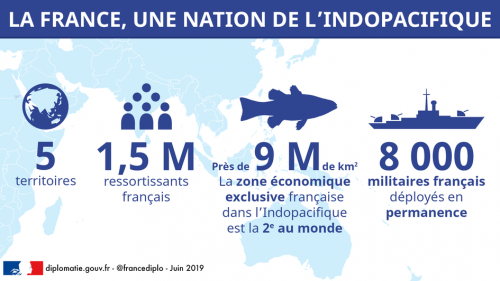
En effet, selon la stratégie française dans les océans Indien et Pacifique, c'est là que se trouve 93% de la zone économique exclusive de la France. Cette zone abrite 1,5 million de citoyens français et 8 000 soldats français. La France revendique le statut de puissance non seulement européenne mais aussi africaine. Selon les experts, individuellement, tous les territoires de la présence française en Afrique n'ont pas de poids, mais tous ensemble, ils en ont.
Le problème est que l'Australie participe à une coalition américano-britannique contre la Chine, tout en maintenant des liens avec la France. L'échec de l'accord sur les sous-marins n'affectera pas ces liens. Les deux pays n'ont aucun intérêt à ce que les relations se détériorent. Mais la position de la France devient maintenant très difficile.
La France a toujours revendiqué une politique indépendante, tout en reconnaissant que c'était une illusion, étant donné son inclusion dans la sphère d'influence américaine. Washington prend en charge ces ambitions françaises et permet même parfois de les satisfaire dans une certaine mesure. Mais la France ne s'est jamais trop laissée aller et a bien compris sa place et son rôle dans le monde. Aujourd'hui, la France se retrouve non pas isolée, mais seule.
Son scepticisme (ndlr: germanophobe et beneluxophobe, hostilité rabique et haineuse à l'égard des "Boches de l'Est et du Nord", ainsi qu'aux "rats hollandais" selon Edith Cresson) à l'égard de Nord Stream 2 n'a pas renforcé sa position vis-à-vis de l'Allemagne. Avec la Russie aussi, il n'y a pas la liberté de manœuvre qui serait souhaitable pour Paris: Moscou n'oubliera pas tous les coups de poignard français. La Chine tient également compte (et rancune) de la volonté française de s'imposer en participant à des alliances anti-chinoises. Les relations avec la Grande-Bretagne sont compliquées; sans les États-Unis, elles ne sont pas réglementées. Aujourd'hui, les États-Unis ont fait preuve de mépris envers la France, sans se soucier de "sauver la face" du président français (qui se retrouve gros-Jean comme devant).
Dans sa hâte ambitieuse, la France s'est soudainement retrouvée seule. En même temps, elle a un conflit avec la Turquie, qu'elle ne peut pas résoudre sans les États-Unis et la Grande-Bretagne. Quel était l'intérêt de s'engager dans une relation sur une question majeure d'importance militaire et géopolitique dans une sphère complètement contrôlée par les Anglo-Saxons ?
Sur quoi étaient fondés les espoirs de succès et de vigilance passive des États-Unis et de la Grande-Bretagne - sur le fait qu'en échange d'une rhétorique contre la Russie et la Chine, ils permettraient à la France de renforcer son budget naval et de continuer à accumuler du pouvoir géopolitique ? La France avait toujours fait preuve jadis de la plus grande rationalité et du plus grand pragmatisme dans les négociations. Qu'est-il arrivé à la diplomatie française sous la misérable houlette du banquier Macron ?
D'une manière ou d'une autre, la France a subi une défaite écrasante en matière de politique étrangère, et il n'y a aucun pays qui n'en profitera pas d'une manière ou d'une autre. Cela se traduira par de nombreuses petites décisions et étapes, mais toutes seront très sensibles pour la France. Quelque part, les intérêts de la France seront ignorés plus ouvertement qu'auparavant, quelque part, des conditions plus strictes lui seront proposées.
La France doit sortir de sa solitude en prenant des mesures décisives à l'égard des adversaires des États-Unis et de la Grande-Bretagne, mais elle n'est pas libre pour de telles actions. Les États-Unis comprennent que Macron s'énerve, souffle et puis se calmera. La France est trop dépendante des États-Unis pour se permettre une opposition même minime.
Mais dans l'UE, la France devra redorer son blason. La question est de savoir si l'Allemagne laissera à la France l'espace nécessaire après tout ce qui s'est passé. Quoi qu'il en soit, les relations entre la France et les États-Unis ont tourné au vinaigre et, connaissant la rancœur des Français, il ne fait aucun doute que Macron ne l'oubliera pas et ne pardonnera pas. Il n'osera pas se venger des États-Unis, mais avec Londres, Paris sera désormais encore plus à couteaux tirés.
La Russie et la Chine regarderont avec intérêt Macron soigner une autre blessure, mais il aura encore une chance de se rétablir. La France cherchera un motif de vengeance. Les boomerangs d'Australie reviendront sur Londres.
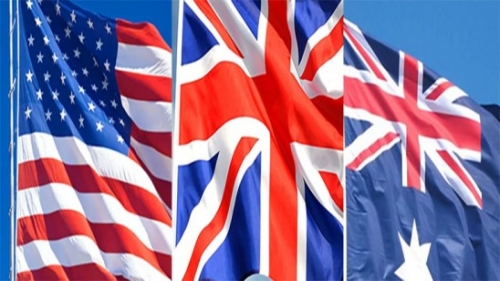
Analyse : Une nouvelle Triple Alliance est-elle en gestation ?
Vladimir Terekhov*
L'inauguration de l'AUKUS, une nouvelle configuration géopolitique comprenant l'Australie, le Royaume-Uni et les États-Unis (l'acronyme vient des lettres initiales des pays participants), a été l'un des développements les plus remarquables de la politique mondiale de ces dernières semaines.
Pour l'instant, il est difficile d'évaluer la nature d'une telle démarche. Il ne s'agit vraisemblablement pas d'un nouveau bloc militaire et politique, car les trois nations sont déjà liées par des engagements de défense mutuelle de longue date, un fait que la Maison Blanche n'a pas hésité à mentionner dans sa déclaration à ce sujet. La dernière phrase de ce document sur ces engagements indiquait notamment : "Nous nous engageons à nouveau dans cette vision".
À l'exception du paragraphe citant les plans visant à fournir huit sous-marins à l'Australie, le document est extrêmement médiocre et rappelle les discours de Mikhaïl Gorbatchev, toujours prêt à "intensifier et approfondir" ce qu'il juge nécessaire. Selon la déclaration, l'AUKUS est créé pour "renforcer le partenariat de sécurité trilatéral".
Toutefois, si l'objectif principal de ce pacte est de faire de l'Australie la première puissance régionale capable de contenir la Chine, cette démarche ne fait qu'ajouter à la confusion entourant la position politique du gouvernement australien vis-à-vis de la Chine, qui a presque toujours semblé être un désastre auto-infligé. Si cette hypothèse est vraie, ce cours commence à avoir l'air carrément suicidaire. La Chine a déjà prévenu que l'acquisition par l'Australie d'une flotte de sous-marins nucléaires pourrait faire de ce pays une cible pour une attaque nucléaire chinoise.
Toutefois, dans son ensemble, le projet AUKUS annoncé donne l'impression d'être improvisé et mal conçu, ce qui reflète son développement hâtif et, apparemment, les efforts déployés pour le dissimuler (aux concurrents ?). En outre, certains pensent qu'AUKUS pourrait avoir un impact négatif sur l'initiative QUAD, un autre projet que ses participants ont désespérément tenté de sauver de 15 ans d'oubli au Japon, qui ne savait apparemment rien du développement d'AUKUS. Plus important encore, l'Inde ne l'a pas fait non plus, ce qui signifie que la moitié des membres de QUAD ont été laissés dans l'ignorance.
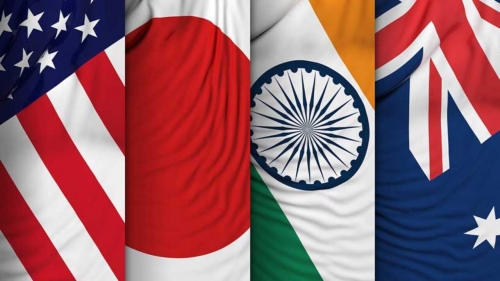
Jusqu'à présent, il semble que la principale raison derrière AUKUS était l'argent: ou, pour être précis, une somme forfaitaire exorbitante de 56 milliards d'euros, que l'Australie, un pays anglo-saxon, a "pour une raison ou une autre" décidé de donner en 2017 à des concurrents du monde anglo-saxon, les Français. À l'époque, la France a remporté un appel d'offres (les principaux concurrents étaient les Japonais) pour la construction de 12 sous-marins modernes à moteur diesel. Cette somme couvre non seulement les coûts de construction des sous-marins eux-mêmes, mais aussi le développement des infrastructures et la formation des équipages.
Il semble que l'Australie ait "reçu un ordre d'en haut", un entrepreneur de la défense d'un autre pays anglo-saxon, à savoir les États-Unis. "Vous en aurez plus pour votre argent. Vous aurez nos sous-marins à propulsion nucléaire". Mais qu'en est-il des appels d'offres "fondés sur des règles" ? La réponse est très simple: les "règles" sont un concept que les autres doivent respecter, pas nous.
Il n'est pas étonnant que le ministre français des affaires étrangères, Jean-Yves Le Drian, ait été furieux après avoir appris la formation de l'AUKUS et son objectif (il a été tenu secret pour les principaux alliés). Il y a une explication tout à fait naturelle (et pas seulement sous-marine) à tout cela. La première réunion des ministres des affaires étrangères et de la défense français et australiens (le "format 2 + 2") vient d'avoir lieu (le 30 août de cette année). Il s'est conclu par la déclaration d'un "partenariat stratégique renforcé".

En d'autres termes, les relations bilatérales se déroulent sans encombre selon les grandes lignes tracées lors de la visite du président français Emmanuel Macron en Australie en mai 2018. Jean-Yves Le Drian lui-même a été directement impliqué dans le succès de l'appel d'offres susmentionné. Et voilà "le coup de poignard dans le dos". Il semble que le gouvernement de Scott Morrison était de connivence avec ses "partenaires stratégiques" au moment même où ils négociaient.
Quelle trahison, l'enfer de la politique étrangère !
La réponse française a été sévère, Paris rappelant ses ambassadeurs aux États-Unis (un geste sans précédent dans les relations diplomatiques entre alliés de l'OTAN) et en Australie. Pendant ce temps, le Royaume-Uni a échappé à la colère de la France, cette dernière estimant que Londres n'avait fait que "suivre aveuglément" les autres participants à l'AUKUS ("que peut-on attendre d'autre de ces simplets, vous savez?").
Compte tenu de la manière dont le parlement britannique a débattu de la question de la participation de la Grande-Bretagne à ce projet, Londres semble avoir adhéré au pacte plus ou moins dans ce sens. Apparemment, le processus de décision au Royaume-Uni est aussi chaotique qu'à Washington.
À quoi ressemble la politique chinoise de Londres? D'une part, plusieurs navires de la Royal Navy, menés par le porte-avions HMS Queen Elizabeth, viennent d'arriver au Japon pour participer à des exercices multilatéraux (avec un agenda anti-chinois évident) dans la région d'Okinawa. Pendant ce temps, Londres pointe du doigt Pékin.

À cet égard, il convient de noter qu'Elizabeth "Liz" Truss, qui supervisait auparavant le commerce international, a été nommée ministre britannique des affaires étrangères. Elle a notamment mis en œuvre le volet commercial et économique de la politique globale du Royaume-Uni consistant à "s'incliner" vers la région indo-pacifique. Au demeurant, il est entendu que dans sa précédente publication, Elizabeth Truss préconisait le développement des relations avec Moscou.
Mais, dans l'ensemble, il semble que le projet AUKUS ait été développé dans la précipitation, sans tenir compte des conséquences possibles d'un projet aussi mal conçu. Les autorités responsables ont-elles vraiment été prises par surprise et n'ont-elles pas saisi les ramifications évidentes que le projet impliquait ? Car de tels projets ont tendance à se développer selon leur logique interne, ce qui surprend leurs auteurs.
En même temps, définir AUKUS comme une nouvelle "Triple Alliance" ravive quelques souvenirs désagréables en termes d'histoire. C'est la signature secrète de la "Triple Alliance" de 1882 entre l'Allemagne, l'Autriche-Hongrie et l'Italie qui s'est avérée être un jalon historique, une date qui a marqué le début du somnambulisme de dirigeants européens qui les ont conduit inexorablement vers la Première Guerre mondiale, qui a entraîné de très graves conséquences pour l'humanité dans son ensemble, tant pour les vainqueurs que pour les vaincus.
Quant à la Russie, s'il ne faut pas exagérer l'importance d'AUKUS, le projet doit être analysé, car les déclarations écrites et orales ne suffisent pas à apporter beaucoup de clarté. Nous avons besoin d'au moins quelques détails qui n'apparaissent nulle part.
Du point de vue le plus élémentaire, ces événements reflètent l'urgence croissante de renforcer l'alliance sino-russe qui (ce point doit être souligné) ne doit être dirigée contre personne. En d'autres termes, il doit être entièrement défensif.
Entre-temps, il est nécessaire de chercher à établir des contacts avec les factions américaines qui favorisent la résolution des problèmes intérieurs (la question clé ici est probablement de contrôler la situation à l'intérieur du pays), de diminuer l'implication de Washington dans les conflits de politique étrangère dans le monde, et de forger des liens avec la Russie et la Chine. Ces pays ne sont pas intéressés par l'effondrement de cette puissance mondiale encore prédominante. La question de l'arsenal nucléaire américain et du contrôle des armements constitue à elle seule un énorme problème.
Il est nécessaire de rivaliser pour l'influence en Allemagne (avec la France comme concurrent), en Inde et même au Japon. La Russie et la Chine ont leurs propres pierres d'achoppement dans leurs relations avec chacune de ces puissances. Mais il existe des ouvertures qui ne semblent pas totalement déraisonnables. Cela dit, Moscou et Pékin devront faire preuve de souplesse et de patience dans leurs relations avec ces États.
* Expert ès-questions de l'aire Asie-Pacifique.
00:21 Publié dans Actualité, Affaires européennes, Géopolitique | Lien permanent | Commentaires (0) | Tags : aukus, géopolitique, politique internationale, france, europe, affaires européennes, aire indo-pacifique, océan pacifique |  |
|  del.icio.us |
del.icio.us |  |
|  Digg |
Digg | ![]() Facebook
Facebook
L'affaire des sous-marins australiens: We All Live in a "Biden" Submarine
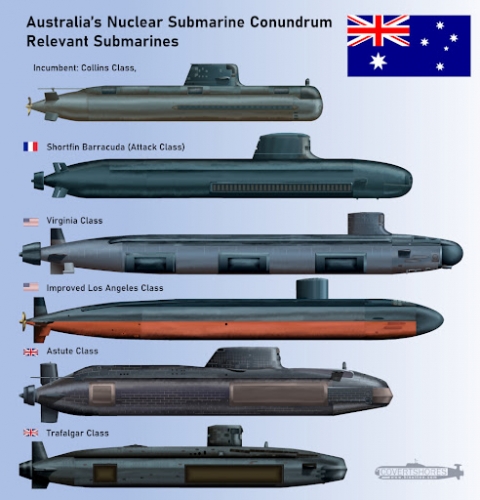
Café Noir N.34
L'affaire des sous-marins australiens: We All Live in a "Biden" Submarine
00:06 Publié dans Actualité, Affaires européennes, Géopolitique | Lien permanent | Commentaires (0) | Tags : europe, affaires européennes, sous-marins, aukus, australie, france, océan pacifique |  |
|  del.icio.us |
del.icio.us |  |
|  Digg |
Digg | ![]() Facebook
Facebook
dimanche, 26 septembre 2021
Russie, territoire libre de l'Europe
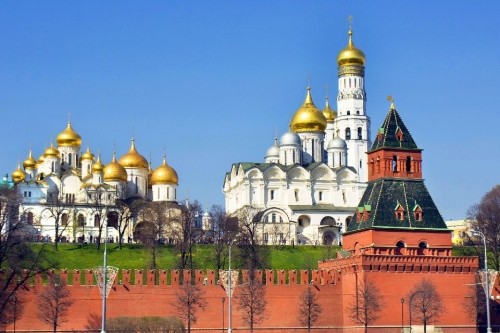
Russie, territoire libre de l'Europe
Par Claudio Mutti
Ex: https://www.eurasia-rivista.com/la-russia-territorio-libero-deuropa/#
L'année 2022 marquera à la fois le centenaire de la naissance et le trentième anniversaire de la mort de Jean Thiriart (1922-1922), un "géopoliticien militant" [1] dont ma revue Eurasia s'est occupé à plusieurs reprises, rendant accessible au public italien de nombreux articles publiés par lui dans des périodiques aujourd'hui pratiquement introuvables [2]. Défenseur acharné et infatigable, dans une Europe divisée entre le bloc atlantique et le bloc euro-soviétique, de la nécessité historique de "construire une grande Patrie: l'Europe unitaire, puissante, communautaire" [3], Thiriart en indique en 1964 les dimensions géographiques et démographiques: "Dans le cadre d'une géopolitique et d'une civilisation communes (...) l'Europe unitaire et communautaire s'étend de Brest à Bucarest. (...) Contre les 414 millions d'Européens, il y a 180 millions d'habitants des États-Unis et 210 millions d'habitants de l'URSS" [4].
Conçu comme une troisième force souveraine et armée, indépendante de Washington et de Moscou, l'"empire de 400 millions d'hommes", envisagé par Thiriart, devait établir une relation de coexistence avec l'URSS basée sur des conditions précises: "Une coexistence pacifique avec l'URSS ne sera pas possible tant que toutes nos provinces orientales n'auront pas retrouvé leur indépendance. La proximité pacifique avec l'URSS commencera le jour où l'URSS retournera dans les frontières de 1938. Mais pas avant: toute forme de coexistence qui pourrait impliquer la division de l'Europe n'est qu'une tromperie" [5].
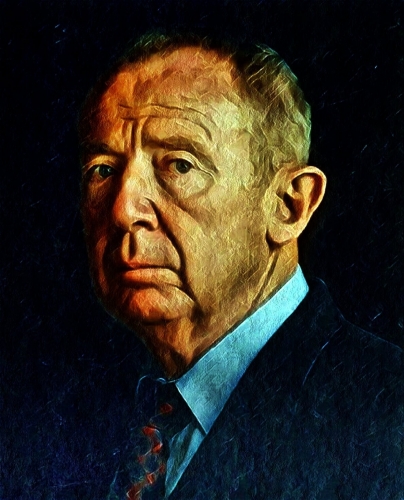
Selon Thiriart, la coexistence pacifique entre l'Europe et l'URSS trouverait son aboutissement le plus logique dans "un axe Brest-Vladivostok". (...) Si l'URSS veut garder la Sibérie, elle doit faire la paix avec l'Europe, avec l'Europe de Brest à Bucarest, je le répète. L'URSS n'a pas, et aura de moins en moins, la force de garder Varsovie et Budapest d'une part et Tchita et Khabarovsk d'autre part. Elle devra choisir, ou risquer de tout perdre. (...) L'acier produit dans la Ruhr pourrait très bien servir à défendre Vladivostok" [6].
L'axe Brest-Vladivostok théorisé à l'époque par Thiriart semblait avoir davantage le sens d'un accord visant à définir les zones d'influence respectives de l'Europe unie et de l'URSS, car " dans la première moitié des années 1960, Thiriart raisonne encore en termes de géopolitique "verticale" [7], ce qui le conduit à penser selon une logique plus "eurafricaine" qu'"eurasienne", c'est-à-dire à esquisser une extension de l'Europe du Nord au Sud et non d'Est en Ouest" [8].
Le scénario esquissé en 1964 a été développé par Thiriart au cours des années suivantes, de sorte qu'en 1982, il pouvait le définir ainsi: "Nous ne devons plus raisonner ou spéculer en termes de conflit entre l'URSS et nous-mêmes, mais en termes de rapprochement puis d'unification. (...) Nous devons aider l'URSS à se compléter dans la grande dimension continentale. Cela triplera la population soviétique qui, pour cette raison même, ne pourra plus être une puissance à "caractère russe" dominant. (...) Ce sera la physique de l'histoire qui obligera l'URSS à chercher des rivages sûrs: Reykjavik, Dublin, Cadix, Casablanca. Au-delà de ces limites, l'URSS n'aura jamais la tranquillité d'esprit et devra vivre dans une préparation militaire incessante. Et coûteuse" [9].
À cette époque, la vision géopolitique de Thiriart était devenue ouvertement eurasiste: "L'empire euro-soviétique - lit-on dans l'un de ses articles de 1987 - s'inscrit dans la dimension eurasienne" [10]. Ce concept a été réitéré par lui dans le long discours qu'il a prononcé à Moscou trois mois avant sa mort: "L'Empire européen - disait-il - est, par postulat, eurasien" [11].
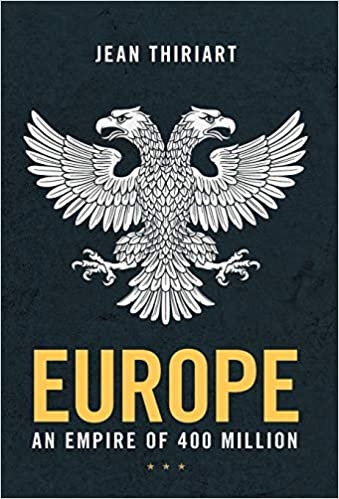
L'idée d'un "Empire euro-soviétique" a été formulée par Thiriart dans un livre écrit en 1984 et publié à titre posthume en 2018 (12). En 1984, il écrivit: "L'histoire donne aux Soviétiques l'héritage, le rôle, le destin qui, pendant un bref instant, avait été assigné au Reich: l'URSS est la principale puissance continentale en Europe, elle est le heartland des géopoliticiens. Mon discours actuel s'adresse aux chefs militaires de ce magnifique instrument qu'est l'armée soviétique, un instrument auquel manque une grande cause" [13]. Partant du constat que dans la mosaïque européenne composée d'États satellites des États-Unis et de l'URSS, le seul État véritablement indépendant, souverain et militairement fort était l'État soviétique, Thiriart attribuait à l'URSS un rôle similaire à ceux joués par le royaume de Sardaigne dans le processus d'unification italienne et par le royaume de Prusse dans le monde germanique ou, pour citer un parallèle historique plus ancien proposé par Thiriart lui-même, par le royaume de Macédoine en Grèce au IVe siècle avant J.-C.: "La situation de la Grèce en 350 av.J.C., morcelée en cités-états rivales et divisée entre les deux puissances de l'époque, la Perse et la Macédoine, présente une analogie évidente avec la situation de l'Europe occidentale actuelle, divisée en petits et faibles États territoriaux (Italie, France, Angleterre, Allemagne fédérale) soumis aux deux superpuissances" [14].
Par conséquent, tout comme il y avait un parti pro-macédonien à Athènes, il aurait été opportun de créer en Europe occidentale un parti révolutionnaire qui collaborerait avec l'Union soviétique; ce parti, en plus de se libérer des entraves idéologiques du dogmatisme marxiste incapacitant, aurait dû éviter toute tentation d'établir l'hégémonie russe sur l'Europe, sinon son entreprise aurait inévitablement échoué, tout comme la tentative de Napoléon d'établir l'hégémonie française sur le continent avait échoué. "Il ne s'agit pas, précise Thiriart, de préférer un protectorat russe à un protectorat américain. Non. Il s'agit de faire découvrir aux Soviétiques, qui n'en sont probablement pas conscients, le rôle qu'ils pourraient jouer: s'élargir en s'identifiant à l'ensemble de l'Europe. Tout comme la Prusse, en s'agrandissant, est devenue l'Empire allemand. L'URSS est la dernière puissance européenne indépendante disposant d'une force militaire importante. Il manque d'intelligence historique" [15].
* * *
L'URSS n'existe plus depuis trente ans. Pourtant, la Fédération de Russie, avec son immense territoire qui s'étend de la Crimée à Vladivostok, est aujourd'hui, comme l'URSS en 1984, le seul État véritablement indépendant et souverain dans une Europe qui est au contraire divisée en une multitude de petits États soumis à l'hégémonie de Washington.
En fait, le seul territoire européen qui n'est pas occupé par des bases militaires américaines ou de l'OTAN est le territoire russe. La seule armée qui n'est pas intégrée à une organisation militaire hégémonisée par les États-Unis d'Amérique est celle de la Fédération de Russie. La seule capitale européenne qui n'a pas à demander la permission aux États-Unis et à leur rendre des comptes est Moscou. Et même sur le plan spirituel et éthique, seule la Russie défend ces valeurs, héritage de la civilisation européenne authentique comme de toute civilisation normale, qui sont la cible de l'offensive massive déclenchée par les barbares de l'Occident "contre les fondements de toutes les religions du monde et contre le code génétique des civilisations, dans le but de renverser tous les obstacles sur la route du libéralisme". Ce sont les mots du ministre russe des affaires étrangères, Sergei Lavrov, qui, dans une analyse parue dans le magazine russe Russia in Global Affairs, a dénoncé le danger mortel de la "guerre menée contre le génome humain, contre toute éthique et contre la nature"[16].
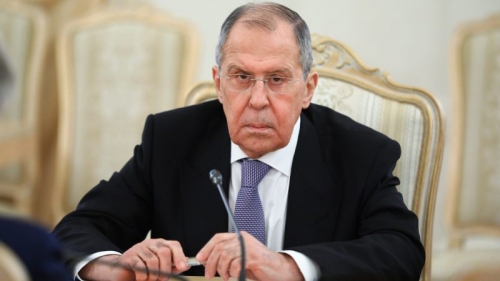
Dans une Europe désormais incapable d'imaginer la possibilité et la légitimité d'un régime politique autre que le régime démocratique qui lui a été imposé dans les deux phases successives de 1945 et 1989, seule la classe dirigeante russe se montre consciente du fait que la démocratie n'est en aucun cas le seul ordre possible, valable indistinctement partout sur la terre, indépendamment des spécificités ethniques, culturelles et religieuses. Par exemple, commentant l'intervention américaine en Afghanistan, Sergueï Lavrov a déclaré : "La conclusion la plus importante est probablement que l'on ne doit apprendre à personne à vivre, et encore moins le forcer à vivre"; et il a rappelé les cas de l'Irak, de la Libye et de la Syrie, où "les Américains voulaient que chacun vive comme eux le voulaient" [17].
Quelques jours plus tôt, le 20 août 2021, Vladimir Poutine avait donné une semblable leçon de réalisme politique à une Europe acculée face au "Moloch de l'universel" - pour reprendre l'expression d'un philosophe admiré et lu par le président russe, Vissarion G. Belinskij (1811-1848). Poutine a déclaré : "Vous ne pouvez pas imposer votre mode de vie aux autres peuples, car ils ont leurs propres traditions. C'est la leçon à tirer de ce qui s'est passé en Afghanistan. Désormais, la norme sera le respect des différences, car on ne peut pas exporter la démocratie, qu'on le veuille ou non" [18].
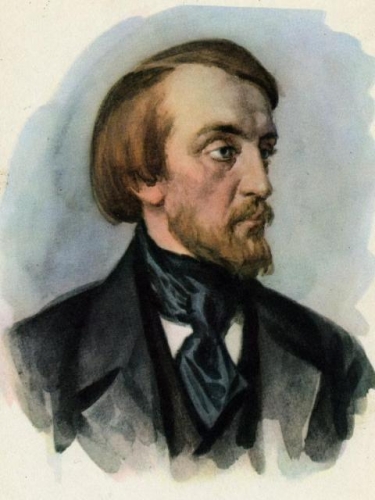
La circonstance dans laquelle Poutine a prononcé ces mots, fut une conférence de presse avec la chancelière allemande, où il a pu rappeler à certains les paroles visionnaires de Dostoïevski: "L'Allemagne a besoin de nous plus que nous ne le pensons". Et il n'a pas besoin de nous seulement pour une alliance politique temporaire, mais pour une alliance éternelle. L'idée d'une Allemagne réunifiée est grande et majestueuse et plonge ses racines dans la nuit des temps. (...) Deux grands peuples, donc, sont destinés à changer la face de ce monde" [19].
Aujourd'hui, ce n'est pas seulement l'Allemagne qui a besoin de la Russie, mais toute l'Europe, qui est désormais proche du point critique que Dostoïevski avait prévu lorsqu'il prédisait que "toutes les grandes puissances de l'Europe finiront par être anéanties, pour la simple raison qu'elles seront usées et subverties par les tendances démocratiques" [20] et que la Russie n'aurait qu'à attendre "le moment où la civilisation européenne atteindra son dernier souffle, pour reprendre ses idéaux et ses objectifs" [21].
Il est certain que la situation actuelle n'incite pas la Russie à envisager, ne serait-ce que comme une possibilité théorique, d'assumer le rôle de puissance agrégatrice en Europe. Cependant, si Moscou manque encore de ce que Jean Thiriart appelait "l'intelligence historique" nécessaire pour concevoir le grand dessein de la libération de l'Europe de l'occupation américaine et de la construction d'une superpuissance impériale entre l'Atlantique et le Pacifique, les conditions objectives auxquelles la Russie devra faire face dans les prochaines années favoriseront probablement la naissance d'une telle intelligence.
NOTES:
[1] Cette définition (cfr. “Eurasia” 2/2018, p. 13) a été choisie pour donner un titre à l'édition italienne de l'unique biographie de Jean Thiriart: Yannick Sauveur, Jean Thiriart, il geopolitico militante, Edizioni all’insegna del Veltro, Parma 2021. Edition française: Qui suis-je ? Thiriart, Éditions Pardès, Grez-sur-Loing 2016. On lira aussi l'entretien que Sauveur a accordé à Robert Steuckers: Yannick Sauveur, biografo di Jean Thiriart, “Eurasia”, 4/2017, pp. 199-206.
[2] Praga, l’URSS e l’Europa, 1/2012; Criminale nocività del piccolo nazionalismo: Sud Tirolo e Cipro, 2/2013; La geopolitica, l’Impero, l’Europa, 1/2014; L’Europa fino a Vladivostok (prima parte), 4/2015; L’Europa fino agli Urali: un suicidio!, 2/2016; Intervista a Jean Thiriart (di Gene H. Hogberg), 2/2016; La NATO: strumento di servitù, 2/2017; Illusioni nazionaliste, 3/2017; L’Europa fino a Vladivostok (seconda parte), 4/2017; Esiste un “buon popolo” americano?, 1/2018; Carteggio col generale Perón, 1/2018; USA: un impero di mercanti, 2/2018; L’Occidente contro l’Europa, 3/2018; Dalla “Grande Europa” all’Europa più grande, 3/2018; L’imperialismo d’integrazione e gli Stati unitari, 4/2019; La stella polare della politica americana, 1/2019; Il vero pericolo tedesco, 2/2019; Il fallimento dell’impero britannico, 3/2019; Nazioni fittizie e nazionalismi illusori, 4/2019; Gli Arabi e l’Europa, 2/2020; Il mito europeo contro le utopie europee, 4/2020; La NATO: strumento di servitù, 1/2021; La pace americana: la pace dei cimiteri, 3/2021; La Russia in permanente stato d’assedio, 4/2021.
[3] Jean Thiriart, Un empire de 400 millions d’hommes: l’Europe, Bruxelles 1964. Trad. it. de Massimo Costanzo: Un impero di 400 milioni di uomini: l’Europa, Giovanni Volpe, Roma 1965, p. 19. Trad. it. de Giuseppe Spezzaferro: L’Europa: un impero di 400 milioni di uomini, Avatar, Dublino, 2011.
[4] Jean Thiriart, Un impero di 400 milioni di uomini: l’Europa, cit., pp. 17-18.
[5] Jean Thiriart, Un impero di 400 milioni di uomini: l’Europa, cit., p. 21.
[6] Jean Thiriart, Un impero di 400 milioni di uomini: l’Europa, cit., pp. 26-29.
[7] Sur les concepts de géopolitique "verticale" et de géopolitique "horizontale", voir les observations critiques développées par Carlo Terracciano en rapport avec la géopolitique "verticale" d'Alexandre Douguine: C. Terracciano, Europa-Russia-Eurasia: una geopolitica “orizzontale”, “Eurasia”, 2/2005, pp. 181-197.
[8] Lorenzo Disogra, L’Europa come rivoluzione. Pensiero e azione di Jean Thiriart, Préface de Franco Cardini, Edizioni all’insegna del Veltro, Parma 2020, p. 30.
[9] Jean Thiriart, Entretien accordé à Bernardo Gil Mugurza [rectius: Mugarza] (1982), in: AA. VV., Le prophète de la grande Europe, Jean Thiriart, Ars Magna 2018, p. 349.
[10] Jean Thiriart, La Turquie, la Méditerranée et l’Europe, “Conscience européenne”, n. 18, luglio 1987.
[11] Le long article L’Europe jusqu’à Vladivostok, diffusé en traduction russe par le périodique "Dyeïnn" puis publié en français dans le numéro 9 de “Nationalisme et République” en septembre 1992, est tiré du texte de la conférence de presse tenue par Thiriart à Moscou, le 18 août de la même année. La traduction italienne en est parue dans Eurasia: la première partie dans le n°4/2013 (pp. 177-183), la seconde partie dans le n° 4/2017 (pp. 131-145).
[12] Jean Thiriart, L’Empire euro-soviétique de Vladivostok à Dublin, Préface de Yannick Sauveur, Éditions de la Plus Grande Europe, Lyon-Bruxelles-Moscou 2018; trad. it. de C. Mutti: L’Impero euro-sovietico da Vladivostok a Dublino, Yannick Sauveur éditeur, Edizioni all’insegna del Veltro, Parma 2018.
[13] Jean Thiriart, L’Impero Euro-sovietico da Vladivostok a Dublino, cit., p. 204.
[14] Jean Thiriart, L’Impero Euro-sovietico da Vladivostok a Dublino, cit., p. 190.
[15] Jean Thiriart, L’Impero Euro-sovietico da Vladivostok a Dublino, cit., p. 191.
[16] L’Occidente sta conducendo una guerra contro tutte le religioni e il codice genetico umano, afferma il diplomatico russo, https://strategika51.org, 30 giugno 2021.
[17] Lavrov su campagna militare Usa in Afghanistan: “non insegnate a nessuno come vivere”, Sputnik Italia, 25 agosto 2021.
[18] ANSA, Mosca, 20 agosto 2021.
[19] F. Dostoevskij, Diary of a writer, London 1949, vol. II, pp. 912-913.
[20] F. Dostoevskij, Diary of a writer, cit., vol. I, p. 296.
[21] F. Dostoevskij, Kriticeskie stat’i, in Sobranie sočinenij, Pietroburgo, 1894-1895, vol. IX, p. 25.
09:47 Publié dans Actualité, Affaires européennes, Géopolitique | Lien permanent | Commentaires (0) | Tags : jean thiriart, géopolitique, politique internationale, europe, affaires européennes, russie, union soviétique |  |
|  del.icio.us |
del.icio.us |  |
|  Digg |
Digg | ![]() Facebook
Facebook
Précisions sur l'AUKUS
09:15 Publié dans Actualité, Affaires européennes, Géopolitique | Lien permanent | Commentaires (0) | Tags : géopolitique, affaires européennes, affaires asiatiques, europe, asie, aukus, australie, royaume-uni, états-unis, espace indo-pacifique, politique internationale |  |
|  del.icio.us |
del.icio.us |  |
|  Digg |
Digg | ![]() Facebook
Facebook
Le Temple de Vénus Génitrice (Venus Genetrix)
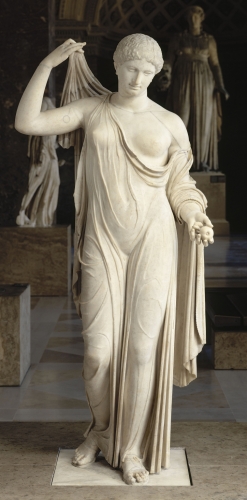
Le Temple de Vénus Génitrice (Venus Genetrix)
TEMPLUM VENERIS GENETRICIS (26 septembre)
Ex: https://www.romanoimpero.com/2019/09/templum-veneris-genetricis-26-settembre.html
La construction du temple de Venus Genetrix (Vénus Mère) avait été une promesse et un vœu de Jules César à Vénus lors de la bataille de Pharsale, livrée et gagnée en 48 avant J.-C. contre son adversaire Pompée le Grand.
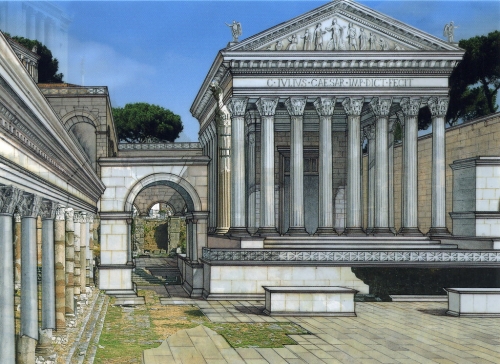
Le terme "Genitrice" faisait allusion à l'ascendance mythique de César à travers Iulus (c'est-à-dire Ascanius), géniteur de la gens Iulia, et fils d'Énée, lui-même fils de la déesse Vénus. Mais la Déesse était aussi la génitrice de tout le monde vivant, animal et végétal.
César pensait d'abord dédier le temple à la "Venus Vincitrix", comme celui construit par son rival Pompée au sommet de son théâtre, mais il changea d'avis et opta pour la Genitrix. Le temple de la déesse fut ainsi construit et inauguré en 46 avant J.-C. sur la place du Forum de César, vers la montée menant au Capitole, dont il occupait toute l'extrémité nord-ouest.
Le temple, avec la magnifique place qui le précède, est l'un des rares bâtiments que César a réussi à inaugurer avant son assassinat.
Un passage de Suétone (70 - 122) rappelle comment un jour César a reçu le Sénat, ignorant toutes les normes de l'étiquette républicaine, assis au milieu du podium du temple, comme une divinité vivante. Mais l'anecdote n'est pas crédible, notamment parce que le Sénat ne se réunissait que dans des lieux consacrés à cet effet, généralement dans la Curie, qui se trouvait dans le forum romain.
Les cérémonies du Nouvel An du Sénat se déroulaient dans le temple de Jupiter Optimus Maximus, tandis que les réunions sur les questions de guerre avaient lieu dans le temple de Bellona.
Il n'est pas exclu que l'anecdote ait été compilée pour plaire à l'empereur Hadrien, sous lequel Suétone a servi, qui voulait que son gouvernement soit considéré comme meilleur que celui de ses prédécesseurs, et aimait donc les anecdotes défavorables sur les empereurs précédents.
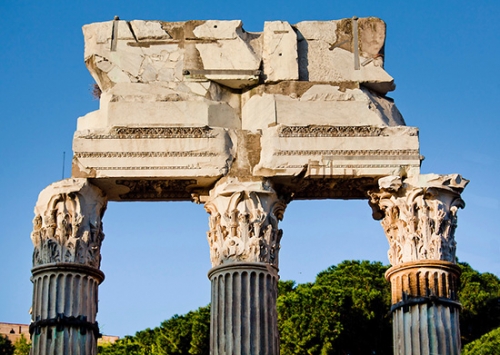
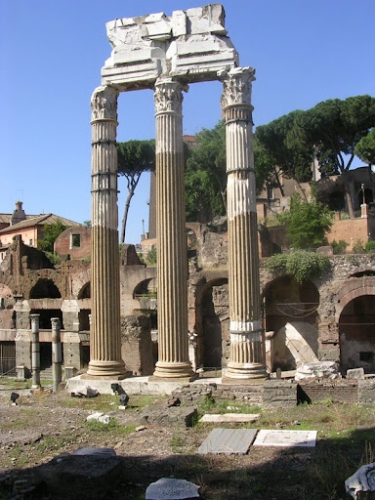
VESTIGES DU TEMPLE DE VENUS GENETRIX - FORUM DE CÉSAR
FAMIANO NARDINI
Templum Veneris Genetricis
Comme l'ancien Forum devenait étroit et ne pouvait être agrandi sans provoquer grande ruine pour les temples et les bâtiments qui l'entouraient, César en construisit un autre à proximité et presque joint à celui-ci : "Non quidem rerum venalium", écrit Appien dans la deuxième des Guerres civiles, "sed ad lites aut negotia convenientium".
Il raconte également que César y a fait construire un magnifique temple à Vénus Génitrice avec une célèbre image de cette déesse envoyée par Cléopâtre, à côté de laquelle se trouvait une effigie de Cléopâtre. Dans la 2e édition des Guerres civiles, ledit auteur écrit "Ad Dea latus effigiem Cleopatrae statuit quae hodieque juarta visitur".
Auquel il a ajouté un somptueux Atrium, le déclarant Forum. L'Atrium, donc, a été ajouté au Temple et est la Basilique dans laquelle il a été tenu, qui, plus que la place devant elle, a été appelé le Forum. Il ne semble pas étrange que l'Atrium et la Basilique y soient une seule et même chose, puisque l'Atrium était une grande salle divisée par des colonnes, comme je l'ai déjà démontré, et que les anciennes Basiliques des Gentils n'avaient pas une forme différente de celle des premières Églises chrétiennes, comme le démontre Donati, avec l'exemple de Saint-Jean de Latran, Saint-Paul, Sainte-Marie-Majeure et d'autres, de sorte que, à partir des compartiments de nos anciennes Églises, nous pouvons nous rappeler la forme des Basiliques et des Forums des Gentils et conclure que les Atriums n'y étaient pas différents.
Mais revenons pour parler du Forum de César dans son intégralité. De Dione il est dit dans lib 48 pulchrius romanus Suetonius, 26, de César: "Forum de manubiis inchoavit cujus area super II S millies constititit" et est confirmé par Pline, 15, lib 36. Son emplacement est dit être entre San Lorenzo in Miranda et le Temple de la Paix, mais comment cela peut-il être, si non seulement le Temple de la Paix, mais aussi San Lorenzo in Miranda et d'autres bâtiments plus proches que San Lorenzo du grand Forum et du Capitole appartenaient à la quatrième région, et le Forum de César est compté par Victor et Rufus, comme nous le lisons dans Anastase plusieurs fois.
Au milieu du Forum, devant le temple de Vénus, se trouvait une statue équestre de César lui-même, en bronze doré, à l'effigie de son merveilleux cheval, qui, impatient d'avoir sur lui d'autres que César, avait les ongles taillés en forme de dents humaines.
C'est ce qu'écrivent Suétone (61 César) et Pline dans le livre 42, 8. Ce cheval de bronze, sous la forme du Bucéphale d'Alexandre, œuvre de Lysippe, avait déjà été donné à Alexandre et ensuite transporté par César sur son Forum, où il fit d'abord ajuster les griffes à celles du sien, comme Donati nous l'apprend de ce qu'écrit Statius dans le premier des Selves, quand il parle du cheval de Domitien au v 84; "Cedat equus Latiae qui contra Templa Diones Caesarei stat sede Fori Quem tradere cs ausus Pellaeo Lysippe Duci mox Caesaris ora Aurata cervice tulit".
Devant le même temple de Vénus, Pline 4, livre 35, il y avait les superbes peintures d'Ajax et de Médée. Parmi les autres statues, dont il était orné, il y en avait une de César, armée d'un blason évoqué par d'autres, dont Pline 5, 34. Ayant dédié au même César un casque de perles britanniques et six bijoux. Pline écrit, livre 35, et 1,37: "Il y avait une Colonne Rostrata de Quintilien, lib 1 c 7, et nous en donne connaissance; "Ut latinis veteribus D plurimis in verbis ultimam adjectam quod manifestum est etiam ex Columna rostrata qua est Julio better C Duellio in Foro posita".
VENUS GENETRIX
RECONSTRUCTIONS
Le temple fut endommagé par l'incendie du Capitole en 80 et dut être reconstruit sur les mêmes fondations sous le règne de Trajan (53-117), après la démolition de la sellette de la colline entre le Capitole et le Quirinal pour l'érection du Forum de Trajan, sellette sur la pente de laquelle se trouvait le temple.
Elle fut donc à nouveau consacrée, comme le rapportent les Fasti Ostiensi, le 12 mai 113, le jour même de l'inauguration de la colonne de Trajan. Le temple subit un nouvel incendie sous l'empereur Carinus (257-285) en 283, tandis que sous Dioclétien (244-313) il a dû être restauré, en incorporant les colonnes de la façade dans un mur de briques.
Il était ensuite relié par des arcs, toujours en maçonnerie recouverte de marbre, pour des raisons de stabilité, aux structures latérales de la Basilique Argentaria, le portique à piliers qui flanquait le temple de Vénus Génitrice.
Dans l'abside se trouvait la statue de Vénus Genetrix, œuvre du sculpteur néo-attique Arcesilaus. A l'intérieur du temple, de nombreuses œuvres d'art, connues en partie grâce aux sources :
- statue de Vénus
- statue de César
- statue en bronze doré de Cléopâtre,
- deux tableaux de Timomachus de Byzance (Médée et Ajax, que César a payé quatre-vingts talents),
- six collections de pierres précieuses sculptées,
- une cuirasse décorée de perles de Britannia.
Cette invocation a été gravée sur un mur à Pompéi :
"Je te salue, ô... nôtre. Sans cesse je vous prie, ô ma dame; par Vénus physique je vous implore de ne pas me rejeter. (Signature) Se souvenir de moi".
Les amoureux ou ceux qui espéraient le devenir se tournaient vers Vénus pour gagner le cœur de quelqu'un, pour recevoir le don de la beauté ou pour être vif dans les relations sexuelles afin de plaire à leur partenaire.
Ils priaient aussi pour retrouver un amour perdu, ou pour bien garder un amour présent.
"Parent de la lignée d'Énée, étoiles fluides du ciel tu rends populeuse la mer, car toute espèce d'être vivant naît de toi et, levé, contemple la lumière du soleil: toi, déesse, toi que les vents fuient, toi et ton industrieux avancement fait jaillir les fleurs, pour toi le ciel brille d'une clarté diffuse."
(Lucretius, De Rerum Natura, Livre I).
LE FESTIN
Elle était célébrée le Saturni Dies, le jour de la cérémonie, ante diem VI Kalendas Octobres. Elle commençait tôt le matin par la lustration du temple par les prêtres flaminiens avec leurs accompagnateurs (camilli) qui les aidaient dans leur tâche.
Puis il y eut un sacrifice d'herbes odorantes et d'encens en l'honneur de Venus Genitrix avec des chants et des invocations, suivi de la reconstitution de Jules César, désormais déifié, sur la statue duquel on plaça des guirlandes de myrte, sacrées pour la déesse.
Puis la procession commence avec les prêtres, les jeunes filles enguirlandées qui chantent et répandent des pétales de rose, et enfin la statue de Vénus portée par les hommes, qui fait le tour des temples qui lui sont liés, comme Saturne, Mars et Mercure et aussi Cupidon, étant encore plus enguirlandée à l'entrée de chacun de ses temples, avant de retourner dans son propre temple.
Parfois, les adorateurs sur le chemin lui donnaient des écharpes ou des manteaux de soie qui étaient placés sur ses bras ou à ses pieds. Ou bien ils lui plaçaient des colliers autour du cou, des bracelets et même des bagues en or et en argent.
Aucun animal n'était sacrifié à la déesse, mais des branches de myrte, des roses et des pommes lui étaient offertes, et souvent, lors des processions, des colombes blanches étaient lâchées dans le ciel en son nom. À la maison, on organisait des banquets, on versait du vin et on préparait des friandises appelées milloi (en forme de vagin) avec des fruits secs et du miel.
Dans la nuit suivant le jour de la fête, les rapports sexuels pour avoir des enfants, pour renforcer l'amour, mais aussi la chance pour atteindre le succès, étaient de bon augure. La Déesse aimait ceux qui pratiquaient l'art de l'amour, comme elle-même ne cessait de le faire.
BIBLIOGRAPHIE:
- Giuseppe Lugli - Il restauro del tempio di Venere e Roma, in Pan - 1935 -
- Antonio Muñoz - Il tempio di Venere e Roma, in Capitolium - 1935 -
- Filippo Coarelli - Guida archeologica di Roma - Arnoldo Mondadori Editore - Verona - 1984 -
- Andrea Barattolo - Sulla decorazione delle celle del tempio di Venere e Roma all'epoca di Adriano - in Bullettino della Commissione Archeologica Comunale di Roma - 1974-75 -
- Alessandro Cassatella e Stefania Panella - Restituzione dell'impianto adrianeo del Tempio di Venere e Roma - in Archeologia Laziale - Consiglio Nazionale delle Ricerche - 1990 .
09:07 Publié dans archéologie, Traditions | Lien permanent | Commentaires (0) | Tags : venus genitrix, traditions, traditionalisme, rome antique, antiquité romaine, archéologie |  |
|  del.icio.us |
del.icio.us |  |
|  Digg |
Digg | ![]() Facebook
Facebook
La revue de presse de CD - 26 septembre 2021

La revue de presse de CD
26 septembre 2021
ALLEMAGNE
Industrie 4.0 : les ambitions dévorantes de l’Allemagne
Avec le programme « Industrie 4.0 », l’État allemand soutient la numérisation et l’automatisation de ses chaines de production afin de renforcer la compétitivité de son industrie. Ce projet d’ampleur s’accompagne d’une offensive politique à l’échelle européenne, où Berlin propose de construire une « souveraineté numérique » face à la Chine et aux États-Unis. Cette stratégie sert pourtant d’avantage les intérêts de l’économie allemande que ceux de ses partenaires.
Le Vent Se Lève
https://lvsl.fr/la-numerisation-et-la-concurrence-entre-l...
CHINE
La longue marche des marques chinoises vers les marchés occidentaux
Les entreprises chinoises ont accentué leurs investissements sur les marchés internationaux ces dix dernières années. Malgré la crise mondiale engendrée par la pandémie de la Covid-19, les investissements directs étrangers (IDE) chinois continuent de se développer à un rythme stable. Selon les chiffres officiels récents, ces IDE chinois se sont élevés à 672,19 milliards de RMB (100,74 milliards de dollars) sur la période allant de janvier à juillet 2021, ce qui représente une hausse de 25,5 % en glissement annuel. Durant cette période, les investisseurs chinois ont réalisé des investissements directs non financiers au sein de 4 454 entreprises réparties dans 161 pays.
latribune.fr
https://www.latribune.fr/opinions/tribunes/la-longue-marc...
L’étrange querelle entre Soros et BlackRock à propos de la Chine
Une étrange guerre, par mots interposés, a éclaté ces derniers jours dans les pages des médias financiers entre le milliardaire George Soros, spécialiste des fonds spéculatifs et des révolutions de couleurs, et le gigantesque groupe d’investissement BlackRock. Le motif de cette dispute est la décision du PDG de BlackRock, Larry Fink, d’ouvrir le premier fonds commun de placement étranger en Chine, sans doute pour attirer l’épargne de la nouvelle population chinoise à revenu moyen.
Le Saker francophone
https://lesakerfrancophone.fr/letrange-querelle-entre-sor...
DÉSINFORMATION
Fdesouche et l’affaire du “fichier” : entretien avec Pierre Sautarel
Accusé par l’extrême gauche de fichage politique — accusations immédiatement relayées par des médias de premier ordre -, le site Fdesouche est de nouveau à la une de l’actualité. En cause : un tableau Excel, reprenant un certain nombre de données publiques sur des personnalités publiques. De quoi s’agit-il ? L’Ojim est allé demander des explications à son principal animateur, Pierre Sautarel, auquel nous donnons la parole ci-dessous.
OJIM
https://www.ojim.fr/fdesouche-et-laffaire-du-fichier-entr...
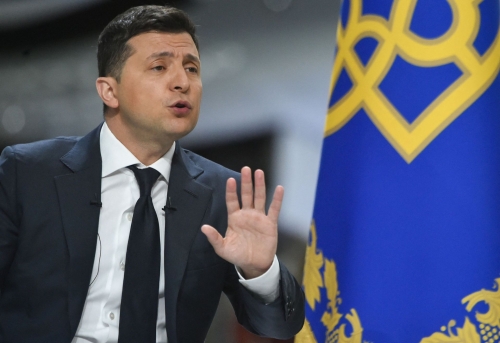
Ukraine : Zelensky bloque un site web d’opposition
En février, il y avait eu le cas de trois chaînes de télévision. Aujourd’hui, les sanctions imposées par le président Zelensky ont touché le site d’information « strana.ua ». Les juristes critiquent l’absence de base juridique.
les-crises.fr
https://www.les-crises.fr/ukraine-zelensky-bloque-un-site...
Comment le photographe Jonas Bendiksen a dupé « Visa pour l'image » pour dénoncer les fake news
Un reportage monté de toutes pièces dans une ville précisément connue pour sa production de « fake news » : la mise en abyme était osée. C’est pourtant l’entreprise insensée à laquelle un photographe norvégien s’est livré pour dénoncer les dangers de la désinformation. Son sujet a même été présenté au festival de photojournalisme Visa pour l’image… Et les professionnels du secteur n’y ont vu que du feu.
Marianne
https://www.marianne.net/culture/comment-le-photographe-j...
Déplacement à Marseille : l’Élysée encadre les journalistes et bride l’information
L’accréditation des journalistes pour couvrir un événement officiel est une pratique ancienne. Tout comme celle du « pool », qui consiste à autoriser la présence d’un nombre très réduit de journalistes, ensuite chargés de « partager » les éléments recueillis (sons, images…) avec leurs collègues des autres rédactions. Communiqué du SNJ-CGT.
Acrimed
https://www.acrimed.org/Deplacement-a-Marseille-l-Elysee-...
ÉTATS-UNIS
Briser l’Empire signifie rompre avec les Saoudiens
Dire que l’Arabie saoudite a été le pivot des objectifs de la politique étrangère américaine au Moyen-Orient et en Asie centrale est un euphémisme. Pendant plus de cinquante ans, les Saoudiens ont contribué à soutenir la politique étrangère américaine en exportant leur pétrole dans le monde entier et en ne recevant que des dollars en retour.
Le Saker francophone
https://lesakerfrancophone.fr/briser-lempire-signifie-rom...
FRANCE
Sous-marins australiens : une rupture liée à la Nouvelle-Calédonie?
Dans ce dossier de rupture de contrat des sous- marins australiens sous la pression de Washington et Londres, la France est doublement fragilisée. Elle tient le rôle de l’arroseur arrosé et surtout personne ne peut croire en sa volonté dans cette région d’assurer dans la continuité son rôle de puissance majeure. La nouvelle alliance anglo-saxonne doute de la solidité française.
Polémia
https://www.polemia.com/sous-marins-australiens-une-ruptu...

Start-up nation : Comment la « France-entreprise » de Macron est devenue un régime autoritaire
En devenant président, Emmanuel Macron a promis de transformer la France en une « start-up nation ». Mais en imitant le système hiérarchique des entreprises, son gouvernement est devenu profondément autoritaire, soumettant les institutions démocratiques à la tyrannie du patron.
Les-crises.fr
https://www.les-crises.fr/start-up-nation-comment-la-fran...
Drame chez LR ! La « droite » ne peut officiellement soutenir son candidat naturel, Macron
Les candidats de la droite s’alignent, de fait, pour un poste de Premier ministre d’un gouvernement Macron, déterminé par le score honorable d’une droite centriste au premier tour de l’élection. Un(e) chef de gouvernement LR succéderait, ainsi, en toute logique, à un premier Premier ministre LR qui en son temps a bien incarné la macronie ; nous parlons, bien évidemment, d’Édouard Philippe qui vient de renouveler son allégeance au candidat Macron.
Polemia
https://www.polemia.com/drame-chez-lr-la-droite-ne-peut-o...
GAFAM
ProtonMail mis sous pression par la France
L’État français a forcé l’entreprise ProtonMail à révéler l’adresse IP d’un militant écologique au nom de la lutte antiterroriste. Pour en comprendre l’importance, il faut rappeler qu’une adresse IP permet au gouvernement de remonter au domicile de l’internaute, brisant ainsi son anonymat.
Contrepoints
https://www.contrepoints.org/2021/09/18/405968-protonmail...
Impact environnemental du numérique : les internautes peu enclins à changer leurs habitudes
Cloud, vidéo à la demande, réseaux sociaux, webconférence, 5G, intelligence artificielle, blockchain, cryptomonnaies, Internet des objets… Ces technologies, outils et pratiques créent des opportunités de marché sans précédent pour les entreprises, et colonisent le quotidien des individus. Mais derrière ces évolutions « digitales » et « virtuelles » se cache un monde moins connu fait de serveurs, d’immenses bâtiments climatisés 24h/24, de câbles et autres relais qui consomment plus de 4 % de la consommation mondiale d’énergie primaire.
The Conversation
https://theconversation.com/impact-environnemental-du-num...
Grenouillages d’Abou Dhabi : E. Snowden appelle à la vigilance face à ExpressVPN
Souvent classée parmi les meilleurs fournisseurs de VPN, l’entreprise ExpressVPN a reconnu avoir été au courant – et ce dès le début de leur collaboration –, de la participation de l’un de ses cadres à un programme d’espionnage des Émirats arabes unis (EAU) employant des anciens agents du renseignement US. Malgré la condamnation dudit cadre par la justice américaine, ExpressVPN a déclaré lui maintenir sa confiance.
Perspectives med
https://www.perspectivesmed.com/grenouillages-dabou-dhabi...
GÉOPOLITIQUE
« Les États-Unis de Biden pensent d’abord aux intérêts américains… Et la France de Macron ? »
Une interview de Catherine Galactéros, géopolitilogue et directrice du cabinet Géopragma
Boulevard Voltaire
https://www.bvoltaire.fr/les-etats-unis-de-biden-pensent-...
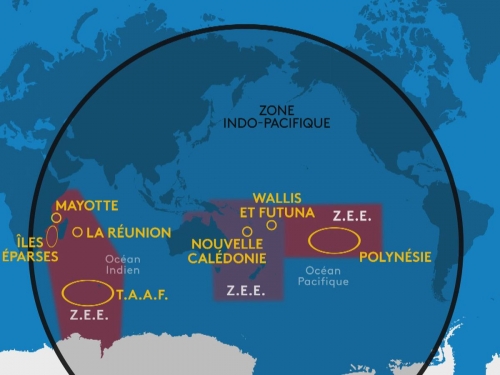
Le dilemme français de l’Indo-Pacifique
En mai 2018, lors d’une visite en Australie, Emmanuel Macron présente les contours de la stratégie indo-pacifique de la France. Il est alors question « d’espace inclusif et ouvert » et d’« Asie multipolaire ». Derrière le président de la République qui prononce son discours sur la base militaire de Garden Island, un hélicoptère d’attaque Tigre australien le regarde. Comme un sombre présage de l’avenir du partenariat stratégique passé entre Paris et Canberra dès 2012 : les Australiens ne sont pas satisfaits du félin à voilure tournante franco-allemand et ne se privent pas pour le répéter. Ses coûts d’exploitation seraient exorbitants, son taux de disponibilité faible. En janvier 2021, la nouvelle tombe : les Australiens remplaceront les Tigre par des Apache américains.
Géopragma
https://geopragma.fr/le-dilemme-francais-de-lindo-pacifiq...
ISRAËL
Le Mossad aurait abattu Mohsen Fakhrizadeh à l’aide d’un « robot tueur »
Le 27 novembre 2020, un assassinat revêtant une importance géopolitique majeure au Moyen-Orient s’est produit en Iran. Soutenu par les États-Unis, le Mossad, l’une des agences de renseignements israéliennes, a ôté la vie au scientifique nucléaire Mohsen Fakhrizadeh. Pour y parvenir, ils ont eu recours à une méthode qui risque de changer le visage de la guerre et de l’espionnage, rapporte le New York Times.
Le Siècle digital
https://siecledigital.fr/2021/09/21/iran-assassinat-arme-...

RÉFLEXION
Les voleurs de vélos : les Verts et « l’électromobilité »
Il y a écolo et écolo. La preuve dans cet article qui a le mérite de la clarté. Extrait : « Le vélo électrique est le symbole d’un double retournement technologiste : celui du vieux biclou, et celui de l’écologie. Cinquante ans après les premières manifs à vélo contre le tout-bagnole, la ministre de l’environnement Barbara Pompili, une Verte de Picardie, nous assure en effet qu’acheter un vélo électro-nucléaire, c’est ‘’choisir l’écologie’’. Ainsi Porsche choisit l’écologie en commercialisant un vélo à batterie lithium-uranium à 7 000 €. Ou comment faire de la bicyclette un engin de luxe, high tech, qui bousille la planète. Une tromperie que les industriels des années 70 n’auraient pas rêvé de voir propagée par les écologistes eux-mêmes. »
PMO
https://www.piecesetmaindoeuvre.com/IMG/pdf/voleurs_de_ve...
« La ligne politique d’une maison d’édition, c’est sa ligne éditoriale » – Entretien avec Thierry Discepolo
Thierry Discepolo appartient au collectif à l’origine des éditions Agone, qu’il a fondées en 1997 à partir de la revue éponyme lancée sept ans plus tôt à Marseille. Cette maison a contribué au renouveau du paysage intellectuel critique après la glaciation des années 1970-1980 dont nous parlait, lors d’un précédent entretien, Nicolas Vieillescazes des éditions Amsterdam. L’héritage des Lumières, l’histoire populaire ou encore la critique des médias sont les thèmes majeurs qui orientent leur catalogue et traduisent une ligne éditoriale attachée à donner des outils à un projet politique d’émancipation. Auteur de La Trahison des éditeurs, Thierry Discepolo livre également un portrait du monde de l’édition pris entre la logique du capital et les vicissitudes de l’indépendance.
Le Vent Se Lève
https://lvsl.fr/la-ligne-politique-dune-maison-dedition-c...
RUSSIE
Horizon 2036, ou la relance plébiscitaire du système politique russe
L’année 2021 marque-t-elle un durcissement de l’autoritarisme en Russie ? La condamnation d’Alexeï Navalny à deux ans et demi de prison et son incarcération ont été très sévèrement jugées en Occident.
Conflits
https://www.revueconflits.com/horizon-2036-ou-la-relance-...

SANTÉ
Ces ARS qui mettent au pas la médecine par temps de covid
Ah les Agences Régionales de Santé… Jusqu’alors risée de la profession, les voilà portées au rang de généraux de bataille par quelques inconscients. Cette confrérie de technocrates s’en est donné à cœur joie au cours de l’épidémie, la huitième depuis 1895. Ont-ils seulement conscience des précédentes ? Chacune d’elle a duré deux années et rien n’interdit de penser qu’il n’en sera pas de même pour celle-ci.
Contrepoints
https://www.contrepoints.org/2021/09/22/405873-ces-ars-qu...
TERRORISME
Livre – Terrorisme : les affres de la vengeance
Le terrorisme comme vengeance intégrale, tel est le fond de l’analyse profonde et stimulante de Myriam Benraad, un angle rarement utilisé. Pour comprendre les raisons de cette carence, il importe en premier lieu de souligner que la vengeance n’est pas nécessairement une violence. Lorsqu’elle l’est, encore faut-il identifier à quels types et à quelles catégories de violence elle se réfère exactement.
Conflits
https://www.revueconflits.com/livre-terrorisme-les-affres...
00:28 Publié dans Actualité, Affaires européennes | Lien permanent | Commentaires (0) | Tags : actualité, france, europe, affaires européennes, journaux, presse, médias |  |
|  del.icio.us |
del.icio.us |  |
|  Digg |
Digg | ![]() Facebook
Facebook
samedi, 25 septembre 2021
Première règle de la bataille culturelle: savoir lire l'ennemi
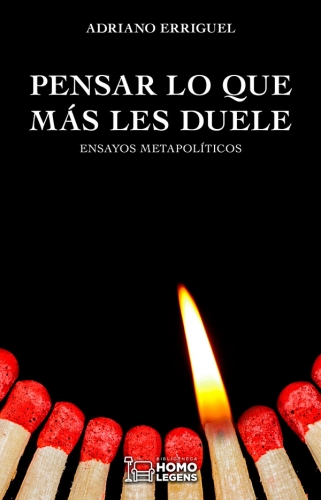
Première règle de la bataille culturelle: savoir lire l'ennemi
Par Enrique García-Máiquez
Ex: https://revistacentinela.es/primera-regla-de-la-batalla-cultural-saber-leer-al-enemigo/
Lorsque l'on termine la lecture de cet essai, on se demande comment il est possible qu'il ne soit pas davantage salué. On peut peut-être arguer qu'il s'agit d'un livre rare, écrit par un auteur mystérieux et publié par une maison d'édition naissante en une année inhabituelle ; mais toutes ces choses ne devraient-elles pas être des raisons pour qu'il suscite davantage de curiosité ?
Commençons par le commencement: le titre a du punch. Il promet et, bien que nous soyons dans le domaine de la politique, il tient ses promesses. Pensar lo que más lo que les más duele (Penser à ce qui les blesse le plus) donne trois fois plus de résultats. Adriano Erriguel (né au Mexique à une date indéterminée - il y a plus de quarante ans -, avocat et politologue) pense avec une prose d'une grande vigueur, et frappe, en effet, là où cela fait le plus mal à trois idéologies. Il est également à la hauteur lorsqu'il déclare: "L'histoire des idées - l'exploration de leurs métamorphoses et de leurs contrecoups inattendus - peut être plus passionnante que le meilleur roman d'aventure".
Coup n° 1
Pour commencer, elle nuit au populisme de gauche, qu'elle démasque. Depuis mai 68, le courant qui a triomphé (le "68 libertaire", par opposition au "68 léniniste" et au "68 antisystème") est celui qui fait le travail du "néolibéralisme invisible". Ils se prennent pour des révolutionnaires, mais ils ne sont que les marionnettes efficaces de la ploutocratie. "La gauche postmoderne est "libertaire", mais le néolibéralisme aussi", comme le montrent les multiples confluences et l'enthousiasme généreux avec lequel les grandes banques subventionnent les mouvements politiques et les penseurs de gauche ainsi que la publicité des grandes entreprises. Adriano Erriguel l'explique avec une profusion de données historiques et d'autorités philosophiques et politiques qui la dénonçaient déjà à l'époque (Michel Clouscard, Pasolini, Régis Debray, Maxime Oullet...). Sa connaissance de la pensée française, trop souvent négligée à notre époque par le poids de l'anglosphère, est impressionnante. Erriguel fait preuve d'une extraordinaire capacité à résumer et à expliquer les essais pertinents. Ainsi, Pensar lo que más lo que les más duele devient en outre une bibliothèque portable de la pensée politique actuelle. En particulier, il utilise habilement la critique d'auteurs marxistes, parmi lesquels l'Espagnol Daniel Bernabé (photo, ci-dessous), pour décaper le prétendu marxisme de la gauche individualiste, narcissique et donc néolibérale de notre époque.

Coup n° 2
Ce qui nous amène à la deuxième douleur infligée (en légitime défense) par la pensée d'Erriguel. Il déconstruit jusqu'au bout les critiques du populisme de gauche qui reposent sur l'hypothèse que nous avons affaire à un marxisme renaissant. La première règle de la guerre culturelle", prévient-il, "est de savoir lire l'ennemi". Le terme "marxisme culturel" lui semble être un coup de pub, de sorte que lorsque nous critiquons Podemos, nous le boostons, dans la mesure où cela ne les frappe pas là où ça leur fait le plus mal, à savoir leur collusion avec le capitalisme mondialiste. Le néo-marxisme est un attirail qu'ils se mettent sur le dos, avec tout le luxe des iconographies du Che et des drapeaux de la Seconde République, etc. La défense de la mixité, le nihilisme, l'immigration, etc., ne viennent pas remplacer dans la dialectique de la lutte des classes les travailleurs châtiés qui ont abandonné le marxisme, mais viennent surtout se conformer point par point aux commodités de l'argent, qui nous veut malléables et indéterminés, purs consuméristes, sans autre identité que le shopping compulsif. Le nihilisme n'est rien d'autre que "la philosophie spontanée du capitalisme", comme le prévient Constanzo Preve.
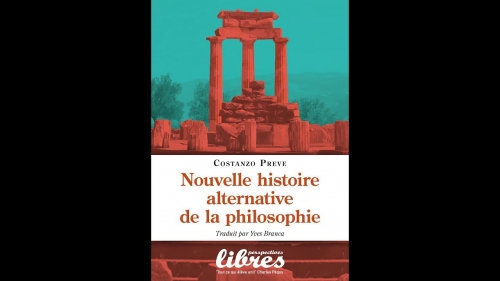
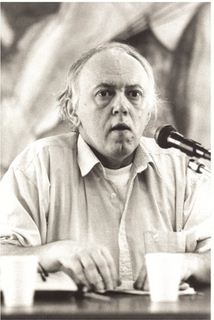
Grève n° 3
Ce qui nous amène à la troisième douleur produite par les coups de la pensée d'Erriguel. Les visages de dégoût face au populisme montrent que le dégoûté exquis est à côté de la plaque. Erriguel cite Chantal Delsol: "Le populisme est le surnom par lequel les démocraties perverties déguisent vertueusement leur mépris du pluralisme". Car la véritable lutte politique (la détermination de l'ennemi à la Carl Schmitt) se situe aujourd'hui irrémédiablement entre une élite délocalisée et sans soutien populaire réel, sécurisée dans ses quartiers chics et utilisant les migrants avec leurs salaires de misère comme chair à canon, et les classes populaires ou les anciennes classes moyennes nationales, en voie de disparition ou, à tout le moins, d'exclusion politique.
Citant Phillipe Muray et Christophe Guilluy, parmi beaucoup d'autres, Erriguel montre que les partis qui ne veulent pas sortir, même légèrement, du système actuel trahissent la grande majorité de leurs électeurs. Il existe "une complémentarité structurelle entre le libéralisme socioculturel (la gauche) et le libéralisme économique (la droite)", comme l'a affirmé Jean-Claude Michéa. Le livre débouche donc sur une défense très réfléchie des histrions de Trump, qui n'est pas un caprice, mais la seule issue d'une dynamique politique qui joue avec toutes les cartes marquées. "Le populisme est le parti des conservateurs qui n'ont pas de parti", comme l'a expliqué le philosophe Vincent Coussedière. Après avoir pensé là où ça fait le plus mal, on peut continuer à critiquer - bien sûr - le président américain, Bolsonaro, Viktor Orban et Santiago Abascal, mais on le fera en toute connaissance de cause.
Mais il n'y a pas que des coups
Est-ce que tout est douleur et pensées sur le sentier de la guerre ? Non. Erriguel, bien que son sujet et ses positions puissent paraître extrémistes au lecteur pressé, est un écrivain réfléchi, aux registres très variés, qui peut sembler désordonné, mais ne s'effondre jamais. Il ne perd pas le contact avec la réalité; au contraire, il prévient que "le talon d'Achille des libertaires réside dans leur fuite de la réalité". Il fait preuve d'un humour inattendu et sait faire la différence, par exemple, entre le libéralisme dogmatique (les "libertariens", qu'il appelle en concurrence étroite avec les "liberalios" de Hughes) et le libéralisme économique à base conservatrice d'un Smith. Il détecte que la grande menace vient des jeux de langage et défend un usage de la langue qui ne perd pas la référence à la cible, rejoignant le conservateur François-Xavier Bellamy dans Demeure. Il prend même une défense plutôt empathique de la pensée la plus utilisable de Karl Marx.
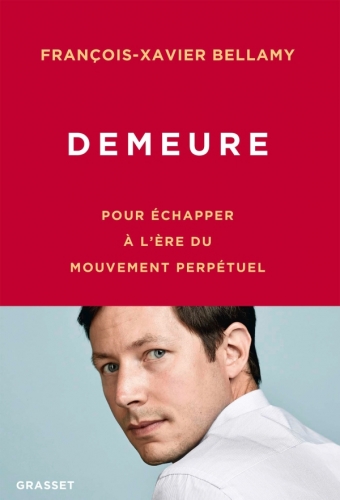
Enfin, le rôle qu'il accorde à l'Église catholique, à laquelle il consacre le dernier chapitre, est impressionnant. Malgré la crise provoquée par la démission de Benoît XVI, qu'il ne minimise pas du tout, la grande valeur du catholicisme ("Disons-le sans équivoque: au sein du christianisme, le catholicisme est l'aristocratie") est sa capacité à dire "non" au consensus pro-vert, s'il l'utilise. Erriguel fonde une grande partie de ses espoirs sur cette indépendance, qu'il veut encourager et soutenir. "Toute dissidence authentique consiste en une leçon sur la manière d'être dans le monde sans y appartenir", affirme-t-il, dans l'une des leçons les plus nécessaires de ses plus de cinq cents pages. Il termine ce volumineux essai par une image inoubliable d'espérance: une Église décomplexée prête à proclamer la vérité dans un monde indifférent ou hostile, comme le voyait Jean Varenne, le grand historien des religions: "Quand le lion rugit dans le désert, qui sait où et comment viendra l'écho? C'est un rugissement de victoire, et c'est ce qui compte".
Adriano Erriguel, Pensar lo que más lo que les más duele, HomoLegens, Madrid, 2020, 543 pages.
15:21 Publié dans Livre, Livre, Philosophie, Théorie politique | Lien permanent | Commentaires (0) | Tags : livre, adriano erriguel, philosophie, philosophie politique, actualité, théorie politique, politologie, sciences politiques |  |
|  del.icio.us |
del.icio.us |  |
|  Digg |
Digg | ![]() Facebook
Facebook
L'Indo-Pacifique, banc d'essai de l'axe Moscou-Pékin

L'Indo-Pacifique, banc d'essai de l'axe Moscou-Pékin
Emanuel Pietrobon
Ex: https://it.insideover.com/politica/indo-pacifico-il-banco-di-prova-dell-asse-mosca-pechino.html
La compétition entre les grandes puissances est entrée dans une nouvelle phase le 15 septembre, jour où les États-Unis, le Royaume-Uni et l'Australie ont dévoilé au monde la formation d'un pacte indo-pacifique, le fameux AUKUS. L'alliance, comme on le sait, a été froidement accueillie au sein de l'Union européenne, notamment par la France - qui, sauf compensation, a perdu une commande de 65 milliards de dollars - et a donné l'impulsion à un bouleversement dans les eaux de plus en plus agitées de l'ancien océan Pacifique dont l'issue ne sera compréhensible que dans un avenir proche.
La conviction de l'administration Biden est que les Aukus peuvent contribuer à la stratégie de "mise en cage" de la République populaire de Chine dans un statut exclusivement tellurocratique - car c'est là l'un des grands leitmotivs géopolitiques des États-Unis contemporains - tout en encourageant les alliés européens à sortir de leur léthargie post-historique et en magnétisant les forces et les ressources des collaborateurs asiatiques sur le terrain.
La question de savoir si et dans quelle mesure les États-Unis parviendront à limiter et/ou à empêcher la montée incontrôlable de la Chine dépendra d'un certain nombre de facteurs et d'événements, que les Aukus pourraient déclencher ou inhiber, concernant les principales puissances d'Asie du Sud-Est, le Japon, l'indosphère et la non moins importante Russie.
Les répercussions possibles de l'affaire Aukus
L'Aukus est l'une des expressions les plus puissantes de la vision américaine de l'Indo-Pacifique, un fruit cultivé et mûri dans une plantation historiquement fertilisée par la stratégie belliciste de la chaîne d'îles et l'héritage de la "géopolitique du détroit" de la Compagnie des Indes orientales. Ce fruit a un moyen, l'anglosphère, et une fin, la Chine, mais ceux qui ont surveillé chaque étape de sa maturation ont peut-être négligé, ou complètement ignoré, le poids du facteur inconnu qu'est la Russie.
Pour le moment, Moscou n'a qu'une présence limitée dans les deux océans qui unissent les destins de l'indosphère, de la sinosphère et de l'anglosphère, car ils sont loin de ses frontières et donc moins importants pour la protection de sa sécurité nationale que, par exemple, l'Arctique ou l'Asie centrale. Et jusqu'à présent, en tout cas, l'expansion russe dans la région avait été conçue davantage comme un encerclement préventif de la Chine que comme une confrontation avec les États-Unis. Les Aukus, cependant, pourraient tout changer.
Depuis 2014, la Russie et la Chine collaborent activement sur les théâtres qui comptent, en se soutenant mutuellement et en opérant de manière à ne pas laisser de "vides de pouvoir" susceptibles d'être utilisés par des tiers, c'est-à-dire en agissant au nom d'une complémentarité syntonique et parfaite. En termes pratiques, cela signifie qu'il existe une division du travail entre le Kremlin et Zhongnanhai, le premier offrant ce que le second ne peut pas et/ou ne possède pas (et vice versa). Un modus operandi qui, jusqu'à présent, avait été appliqué partout (et avec succès) à l'exception de deux arènes : l'Afrique et l'Indo-Pacifique.
Après une décennie d'interventions ciblées, qui ont été utiles à la Russie pour empêcher la chute d'alliés clés comme le Venezuela et une pénétration occidentale excessive dans des endroits comme l'Asie centrale, il n'est pas exclu que l'entrée en scène des Aukus puisse encourager la Chine à demander un retour de faveur. Un retour qui pourrait prendre des formes inhabituelles, c'est-à-dire aller au-delà du simple soutien verbal et diplomatique, comme des exercices navals en mer de Chine méridionale, des patrouilles conjointes, des demandes de courtage et, non moins important, un soutien pour contourner la course d'obstacles qu'est la route maritime du sud.
Pivot vers l'Arctique
Les Aukus pourraient inciter Moscou et Pékin à tenter d'appliquer leur format de coopération complémentaire dans la région indo-pacifique, mais les tensions croissantes dans cette zone - qui abrite 46 % du commerce de la planète - pourraient également produire une réaction géographiquement asymétrique, c'est-à-dire concernant l'Arctique.
En effet, la Russie préférerait ne pas s'impliquer dans l'infinie aire indo-pacifique en raison des risques liés à une extension impériale excessive et des effets négatifs d'une homologation excessive aux politiques chinoises - il ne faut pas oublier que les principaux collaborateurs du Kremlin dans la région sont l'Inde, les Philippines et le Vietnam, trois des grands rivaux de la Chine -, donc, en plus d'une monstration musculaire symbolique (adressé aux États-Unis), elle pourrait profiter de l'occasion pour relancer la route (plus sûre) de la mer au Nord.
Car ce qui est en jeu dans l'Indo-Pacifique, ce n'est pas seulement l'existence de Taïwan, l'hégémonisation de la mer de Chine méridionale et la sortie de l'Empire céleste de sa condition tellurique, mais aussi (et surtout) le contrôle des routes maritimes qui relient les deux côtés du supercontinent eurasien. Des routes pleines d'obstacles, comme les fameux goulets d'étranglement, les pirates et l'armée américaine. Des routes dangereuses et de plus en plus obsolètes, comme l'a montré le récent accident du canal de Suez, qui pourraient être contournées en contournant facilement l'Eurasie par le nord.
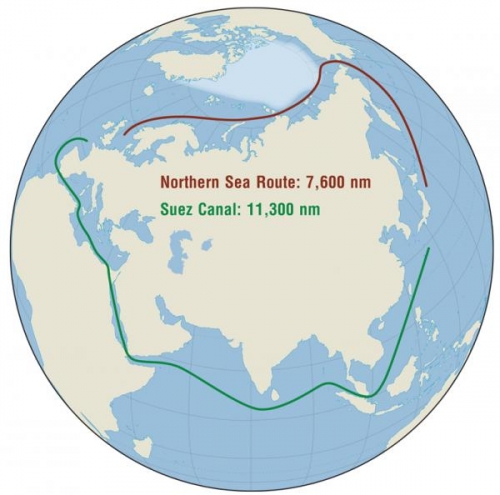
Certains événements semblent indiquer que la réaction géographiquement asymétrique pourrait être plus qu'une simple hypothèse. Dans l'ère post-Aukus, en fait, le Kremlin a montré profil bas dans l'Indo-Pacifique - parlant de l'alliance comme d'une menace pour la Chine - compensé par une publicité renouvelée pour la route arctique. Plus précisément, la Russie a dévoilé un paquet d'investissements supplémentaires pour le développement de cette route en devenir pour la période 2022-24 d'une valeur de plus de 250 millions de dollars. L'objectif déclaré de ce paquet est d'accélérer les travaux sur la route de 5.600 kilomètres, mais il pourrait y avoir plus que cela: le désir d'exploiter les turbulences de l'Indo-Pacifique au profit du passage du Nord-Est.
14:29 Publié dans Actualité, Géopolitique | Lien permanent | Commentaires (0) | Tags : actualité, politique internationale, aujus, géopolitique, chine, russie, états-unis, arctique, route arctique, eurasie |  |
|  del.icio.us |
del.icio.us |  |
|  Digg |
Digg | ![]() Facebook
Facebook
Le Pacte AUKUS et la guerre contre l'Eurasie
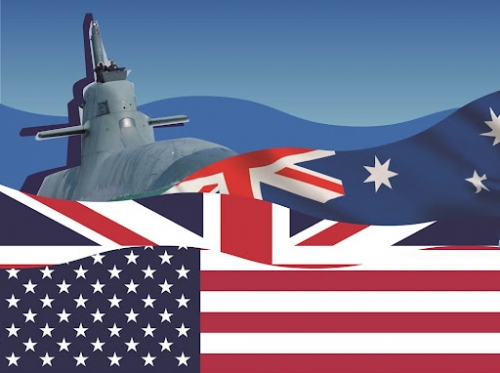
Le Pacte AUKUS et la guerre contre l'Eurasie
Daniele Perra
Ex: https://www.geopolitica.ru/it/article/il-patto-aukus-e-la-guerra-alleurasia
La géopolitique thalassocratique classique définit le "monde insulaire", la World Island, comme l'ensemble des masses continentales eurasiennes et africaines. Cette "sphère majeure" est entourée d'un certain nombre de "sphères mineures" qui agissent comme ses satellites et qui, d'une manière ou d'une autre, ont historiquement cherché à exercer une pression constante sur elle et à contenir tout effort de coopération possible en son sein. Ce rôle de "satellite" a été historiquement attribué au Japon à l'Est, d'abord à la Grande-Bretagne ("une île européenne mais pas en Europe") puis aux États-Unis à l'Ouest, et aujourd'hui à l'Océanie au Sud de l'Eurasie.
Si l'on exclut l'archipel japonais, dont les ambitions de puissance ont été anéanties par deux bombes nucléaires à la fin de la Seconde Guerre mondiale et dont les ambitions technologiques ont été freinées par la concurrence déloyale des États-Unis eux-mêmes dans les années 1980, le schéma géopolitique qui se dessine est celui d'un encerclement par l'"anglosphère" de l'Eurasie.
Déjà le stratège Nicholas Spykman, après avoir reconnu l'impossibilité pour une puissance thalassocratique d'accéder au coeur de la masse terrestre de l'Asie centrale, soutenait l'idée que l'affrontement (qui refait toujours surface) entre les puissances maritimes et les puissances terrestres (qui utilisent des expressions telluriques même lorsqu'elles se réfèrent à la mer) ne pouvait avoir lieu que dans le rimland: c'est-à-dire dans la zone des marges du continent eurasien. Cet affrontement, selon Spykman, est principalement dû à une forme de bipolarité permanente: celle entre le "Nouveau Monde" (l'"Occident" dirigé par l'Amérique du Nord) et l'"Ancien Monde" (l'Eurasie). Et le même géopoliticien nord-américain a reconnu la supériorité potentielle de l'"Ancien Monde" sur le "Nouveau Monde". En effet, les États-Unis ne pourraient jamais faire face à une coalition anti-hégémonique de deux ou plusieurs puissances eurasiennes (l'Eurasie a deux fois et demie la superficie et dix fois la population de l'hémisphère occidental). C'est pourquoi leur objectif ne peut être autre que de semer le chaos dans l'espace eurasiatique susmentionné, de contenir toute tentative d'expansion maritime de ses puissances et d'empêcher toute coalition de ses centres de pouvoir: il s'agit donc d'empêcher l'interconnexion entre les ressources naturelles du centre et la force industrielle de la périphérie.
Le récent pacte AUKUS, signé entre les Etats-Unis, le Royaume-Uni et l'Australie, doit être interprété avant tout à la lumière de ces considérations stratégiques et idéologiques. Et surtout, à la lumière du fait que les États-Unis, malgré les preuves répétées de soumission, continuent de percevoir l'Europe (au moins dans certaines de ses composantes) comme un rival plutôt que comme un allié/partenaire.
En fait, le pacte AUKUS représente simplement une évolution des accords militaires et stratégiques qui remontent à la fin de la Seconde Guerre mondiale. La surprise qu'elle a suscitée est plutôt déplacée. Déjà en 1946, un accord entre les États-Unis et le Royaume-Uni, connu sous le nom d'UKUSA, visait la coopération en matière de renseignement. C'est à cette époque qu'ont été élaborés les premiers plans anglo-américains d'attaque nucléaire contre l'Union soviétique (plans qui, en 1967, ont conduit à l'identification de 72 sites d'attaque atomique dans la seule région de Moscou).
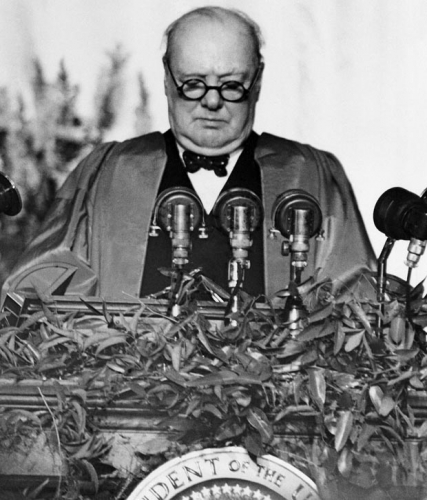
Winston Churchill, 5 mars 1946.
L'accord entre le Royaume-Uni et les États-Unis a été signé le 5 mars 1946, exactement le jour où Winston Churchill a utilisé l'expression "rideau de fer" dans son célèbre discours de Fulton. Le pacte a été élargi en 1948 au Canada et en 1956 à l'Australie et à la Nouvelle-Zélande, devenant ainsi l'infrastructure mondiale de surveillance et d'espionnage complète et semi-puissante connue aujourd'hui sous le nom de "Five Eyes", un système qui n'a été reconnu par les gouvernements respectifs qu'au cours de la première décennie du XXIe siècle. Le secret de cette alliance était (et est) tel que le bureau du Premier ministre australien n'en a eu connaissance qu'en 1973 [1].

L'accord secret prévoyait que chaque membre de l'alliance était responsable d'une zone géographique spécifique. Le Royaume-Uni était responsable de l'Europe, du Moyen-Orient, de la Russie occidentale et de Hong Kong (il convient de rappeler que les émeutes pro-chinoises de Hong Kong en 1967, contrairement aux manifestations séparatistes hétérodoxes d'aujourd'hui, ont été réprimées dans le sang par les forces de sécurité coloniales) [2]; les États-Unis étaient responsables du Moyen-Orient, de la Chine, de l'Afrique, de l'Amérique latine et de l'Union soviétique; l'Australie de l'Asie du Sud-Est; la Nouvelle-Zélande du Pacifique Sud; et le Canada de la Chine et de la Russie de l'intérieur.
Cette alliance secrète était d'ailleurs fondée sur des valeurs communes de démocratie libérale-capitaliste. Ce n'est pas un hasard si le père de la pensée géopolitique thalassocratique, l'amiral américain Alfred T. Mahan, a défini la "culture anglo-américaine" comme "une oasis de civilisation dans le désert de la barbarie". On retrouve des déclarations similaires à l'origine du mouvement sioniste, lorsque Theodor Herzl a présenté son projet de colonisation de la Palestine comme un avant-poste de la civilisation au milieu de la barbarie.
À vrai dire, le sionisme et l'anglosphère n'ont apporté que mort et destruction dans les espaces qu'ils ont occupés et dans lesquels ils ont tenté d'imposer leur influence. La Grande-Bretagne, par exemple, est également à l'origine de l'invention des camps d'internement pour la population civile, une pratique largement utilisée pendant les guerres anglo-boers au tournant des XIXe et XXe siècles. Les États-Unis, en revanche, outre le génocide des indigènes (également réalisé au moyen d'armes bactériologiques ante litteram, comme la propagation consciente de la variole), ont le mérite d'avoir perfectionné la "diplomatie alimentaire": la capacité de faire encore plus de victimes que la confrontation militaire par l'imposition de sanctions économiques, d'embargos et de blocus navals (l'actuel Ceasar Act étudié contre la Syrie est, en ce sens, l'un des exemples les plus récents et les plus criants).
Aujourd'hui, le rôle attribué aux "Five Eyes" est d'assurer la domination aérospatiale et maritime de l'Anglosphère vis-à-vis de l'Eurasie (dans ses deux composantes orientale et occidentale) afin de protéger les "valeurs partagées" susmentionnées. Ce point, à la lumière des événements récents, doit être analysé à plusieurs niveaux.
Tout d'abord, le pacte AUKUS utilise une fois de plus la rhétorique dépassée qui consiste à présenter des opérations ouvertement agressives comme soutenant la paix et la stabilité. En réalité, ce que l'on cherche à soutenir, c'est uniquement la stabilité de l'ordre mondial américano-centré par le partage de technologies militaires avancées (intelligence artificielle et propulsion nucléaire sous-marine) avec un allié central dans l'espace indo-pacifique (un terme à nouveau propre à la géopolitique thalassocratique).
Pour protéger cet ordre, l'US Navy déploiera des sous-marins nucléaires d'attaque de classe Virginia sur la base navale australienne de Perth ; de son côté, le Royaume-Uni fournira à l'Australie la technologie de propulsion nucléaire pour les sous-marins d'attaque de classe Astute afin de créer 8 sous-marins dans le chantier naval d'Adélaïde [3].

Avant de se concentrer sur le malaise français, deux faits ressortent: l'exclusion du Canada et de la Nouvelle-Zélande (les deux autres membres des Five Eyes) de l'accord; l'exclusion d'autres " alliés " régionaux comme le Japon, la Corée du Sud et l'Inde du projet de partage de la technologie militaire.
Il est un fait que le Canada et la Nouvelle-Zélande sont en quelque sorte considérés comme le "ventre mou" de l'alliance, même si le Canada a fait preuve d'une loyauté absolue avec l'arrestation de Meng Wangzou, cadre de Huawei. Le discours concernant les alliés régionaux est plus complexe. L'Inde et le Japon font déjà partie du système quadrilatéral avec les États-Unis et l'Australie. En outre, Washington a signé un accord avec New Delhi pour le partage de données satellitaires sensibles le long des frontières indiennes avec la Chine et le Pakistan. Mais le rôle de l'Inde, bien que central dans la région indo-pacifique, ne peut être directement projeté dans la zone de la mer de Chine méridionale: l'une des zones méditerranéennes de l'Eurasie où, avec l'Afghanistan, se jouera le jeu le plus important de la nouvelle guerre froide. Et l'Inde, comme le Japon et la Corée du Sud, ne fait pas partie de l'anglosphère, malgré son passé colonial. Le Japon et la Corée du Sud, pour leur part, sont également trop proches des menaces directes de la Chine et de la Corée du Nord. Il est donc peu pratique de déployer des armes et des technologies facilement accessibles à l'"ennemi"[4].
En conclusion, on ne peut faire l'impasse sur l'analyse de la réponse française qui, malgré quelques vagues références à une armée européenne (absolument dépourvue de sens lorsqu'elle est associée à l'OTAN), peut être attribuée à ce nationalisme mesquin que Jean Thiriart n'a cessé de définir comme "imbécile".
Paradoxalement, la création de l'AUKUS, pour l'instant, bien qu'elle ouvre la course aux sous-marins nucléaires d'attaque et la militarisation de l'Indo-Pacifique, a mis la France en colère plus que la Chine. En effet, d'une part, l'AUKUS met fin aux ambitions de l'Union européenne de pouvoir compter (à travers son premier pays militaire) sur un théâtre stratégique fondamental au niveau mondial. De l'autre, elle fait perdre à Paris une commande de plus de 56 milliards d'euros pour la construction de 12 sous-marins conventionnels (de type Barracuda) signée avec Canberra en 2016. Et elle liquide l'ambition française de devenir une puissance thalassocratique à part entière.
Historiquement, une telle ambition s'est heurtée au caractère géographique d'un Etat, la France, qui est certes baignée sur plusieurs côtés par la mer, mais qui a dû partager une partie de ses frontières avec l'Allemagne, qui tient le centre de la "péninsule européenne", tout en la reliant à la vaste extension continentale de l'Eurasie.
Pour être juste, il faut dire que l'accord franco-australien, entre hausses de coûts et retards, ne progressait pas dans le meilleur des mondes. Toutefois, on pourrait en dire autant de l'accord anglo-australien sur la fourniture de quelques frégates à la Royal Australian Navy. Un accord qui, à son tour, a été signé au détriment de Fincantieri, lorsque le gouvernement australien, n'écoutant pas l'avis contraire de la marine elle-même, a opté "politiquement" pour les frégates britanniques au lieu des Fremm, déjà valables et testées. À cette occasion, malgré la perte d'une commande de 23 milliards de lires, le gouvernement italien, à la différence du gouvernement français, ne s'est même pas permis un petit sursaut d'orgueil.
S'il en était encore besoin, l'AUKUS démontre le caractère inégalitaire des alliances occidentales. L'anglosphère devient, à toutes fins utiles, le moteur stratégique de l'"Occident", tandis que l'Europe n'est qu'un simple troupeau d'alliés secondaires, utile uniquement pour constituer un débouché pour le complexe militaro-industriel d'outre-mer. Il suffit de dire que la tentation de se ranger immédiatement du côté du nouveau pacte à trois est largement perçue dans de nombreux pays européens: non seulement en Europe orientale, mais aussi en Italie, ce qui est induit par le fait que la France s'est rarement comportée comme un allié (pensez au cas libyen). D'autre part, l'une des principales stratégies de la géopolitique anglo-américaine a toujours été de maintenir l'Europe dans une condition de division interne et d'insipidité au niveau international, afin de garantir son hégémonie sur l'extrémité occidentale de l'Eurasie.
NOTES:
[1] Les Cinq Yeux. L'alliance de l'intelligence de l'anglosphère, www.ukdefencejournal.org.uk.
[2] Voir J. Cooper, Colony in conflict : the Hong Kong disturbances May 1967- January 1968, Swindon Book Company, Hong Kong 1970.
[3] Voir AUKUS, Submarines for Australia and the Lesson for Europe, www.analisidifesa.it.
[4] Pourquoi fournir des sous-marins nucléaires à l'Australie, mais pas à la Corée du Sud ou au Japon?, www.thediplomat.com.
14:07 Publié dans Actualité, Géopolitique | Lien permanent | Commentaires (0) | Tags : actualité, politique internationale, australie, europe, zone indo-pacifique, géopolitique, five eyes, aukus, ukusa |  |
|  del.icio.us |
del.icio.us |  |
|  Digg |
Digg | ![]() Facebook
Facebook
Le Brésil adhèrera-t-il à l'OTAN ?
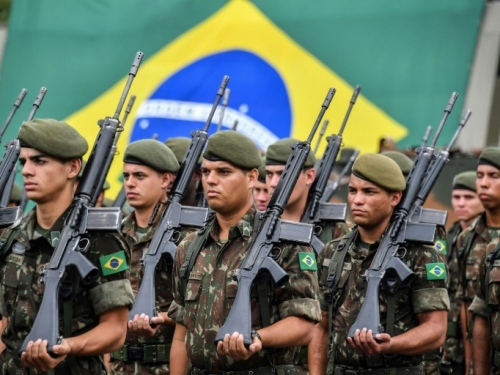
Raphael Machado:
Le Brésil adhèrera-t-il à l'OTAN ?
Ex: http://novaresistencia.org/2021/09/23/
Joe Biden a offert au Brésil la position de partenaire non membre de l'OTAN, l'alliance militaire atlantiste créée pendant la guerre froide pour faire face à l'URSS et qui sert aujourd'hui à affronter la Russie et la Chine. Mais quelles sont les conditions ? Et cela servirait-il l'intérêt national du Brésil ?
Il y a quelques jours, l'hémisphère occidental a été surpris par l'invitation faite au Brésil de devenir un "partenaire mondial" de l'OTAN. Le Brésil n'est pas le premier partenaire militaire ibéro-américain de l'OTAN et des États-Unis. Dans la pratique, il y a actuellement trois pays de notre continent qui sont dans l'orbite de l'OTAN : l'Argentine, la Colombie et le Brésil.
À titre d'introduction, les relations de l'Argentine avec l'OTAN ne datent pas d'hier. L'Argentine a participé activement à la guerre du Golfe, a pris part aux opérations militaires en Bosnie et au Kosovo, ainsi qu'à de nombreux exercices et accords dans les années 1990. Toute la géopolitique argentine de la période Menem est marquée par un rapprochement avec les États-Unis, par une vassalité vis-à-vis des puissances atlantiques et par une volonté d'intégrer l'OTAN, pour finalement obtenir le statut d'allié non membre. Curieusement, le gouvernement brésilien, à l'époque sous le commandement du libéral Fernando Henrique Cardoso, a même critiqué le rapprochement de l'Argentine avec l'OTAN, affirmant que cela introduirait des éléments externes complexes dans le contexte de la sécurité régionale et entraverait les débats sur la construction d'un système de défense commun pour le Mercosur, ce qui semble en fait s'être produit, puisque c'est un thème qui a été oublié jusqu'à ce qu'il soit relancé par l'UNASUR.
Cependant, dès le début du gouvernement Lula, le Brésil a entamé un processus de rapprochement avec l'OTAN, initialement dans les domaines économique, logistique et matériel, sous la justification de l'ouverture de marchés pour l'industrie brésilienne. Une chose qui, en soi, et si elle s'arrêtait là, ne serait pas si problématique. Mais le Brésil a continué à être courtisé. Rappelons même que le Brésil faisait déjà partie d'un pacte militaire atlantique, le traité de Rio, qui prévoit que les membres défendront militairement tout pays, membre du pacte, qui serait attaqué par une puissance extérieure. À première vue, ce sont des termes raisonnables, mais le seul pays américain susceptible d'être attaqué par un État étranger est les États-Unis, celui-là même qui provoque la plupart des guerres, ce qui rend le traité de Rio douteux du point de vue de l'intérêt national des États ibéro-américains.
En complément, en 2018, la Colombie est devenue un partenaire global de l'OTAN, un niveau de coopération supérieur à celui d'un allié non membre. Cette décision est également intervenue après des années de rapprochements et d'accords entre les pays. Dans le cas de la Colombie, elle est intervenue au moment le plus tendu des relations avec le Venezuela, à la suite de manœuvres militaires conjointes entre le Pérou, la Colombie et le Brésil avec le soutien du Pentagone.
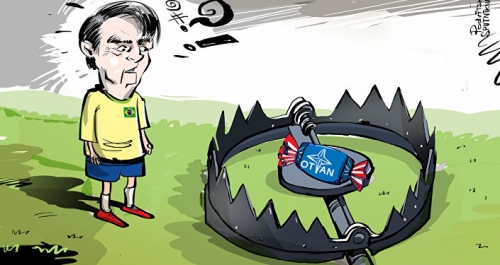
Or, le projet d'intensifier le rapprochement entre le Brésil et l'OTAN intervient juste après la victoire électorale de Bolsonaro. Le secteur des relations internationales du gouvernement brésilien compte plusieurs personnages aux tendances millénaristes olaviennes, qui croient en un caractère salvateur et moral de l'OTAN (en tant que rempart contre la "menace communiste") et considèrent donc qu'il est essentiel que le Brésil s'aligne sur l'OTAN pour lutter pour le salut de la "civilisation occidentale".
Il est important de se rappeler qu'une alliance militaire est toujours dirigée contre un ennemi spécifique. Il n'y a pas de pacte militaire dans l'abstrait, même si l'ennemi n'est pas ouvertement déclaré, il y a toujours un ennemi en tête dans le chef de toute alliance militaire. Dans le cas des relations militaires avec les pays d'Amérique du Sud, la cible régionale est évidemment le Venezuela. C'est pourquoi, au-delà des délires millénaristes olaviens, il n'y a aucun avantage à cette association toujours plus étroite avec l'OTAN. Ce sont les États-Unis qui ont besoin de nous et qui veulent nous instrumentaliser contre une nation insoumise. Nous n'avons pas besoin des États-Unis pour les questions de sécurité régionale, car le Brésil n'a pas de problèmes majeurs de sécurité d'urgence impliquant des menaces émanant d'États étrangers, à l'exception de la menace américaine elle-même.
C'est donc dans ce contexte qu'intervient la décision de Trump de désigner le Brésil comme un allié non membre de l'OTAN en 2019. Notons que la liste des pays ayant ce statut est précisément la liste des pays non européens classiquement reconnus comme vassaux des États-Unis. Certains essaient de lire ce rapprochement comme ayant une importance purement commerciale, mais nous ne pouvons pas être d'accord avec ce point de vue. Elle a ouvert la possibilité de partenariats qui pourraient rendre le Brésil dépendant des systèmes de défense américains. Il s'agit d'une question fondamentale qui transcende le simple commerce, car celui qui vend de la technologie militaire possède également les moyens de faire face à cette technologie militaire. Ainsi, dans un scénario où une bonne partie des armes et des systèmes de défense brésiliens proviendraient des États-Unis, ils seraient pratiquement inutiles contre les États-Unis, précisément le pays du monde le plus susceptible de nous envahir ou de nous bombarder (comme ils ont déjà menacé de le faire à plusieurs reprises par le passé).
À titre d'exemple de la déviation de la tradition diplomatique brésilienne, il y a quelques mois, le Brésil a participé à un exercice militaire dans la mer Noire ukrainienne, un exercice dirigé contre la Russie, évidemment. De quelle manière la participation à cet exercice aurait-elle servi les intérêts du Brésil? L'inclusion du Brésil dans l'OTAN va à l'encontre de la politique de défense nationale brésilienne, qui souligne l'importance de l'Atlantique Sud (le concept d'"Amazonie bleue") et la construction de partenariats militaires avec d'autres pays de l'Atlantique Sud, notamment africains, pour protéger les ressources de la région. Cependant, cette politique va précisément à l'encontre des intérêts des pays de l'Atlantique Nord qui ont encore des possessions dans l'Atlantique Sud ou convoitent les ressources régionales.

Nous en arrivons donc au développement le plus récent, avec l'invitation de Joe Biden. L'idée est d'élever le Brésil au rang de partenaire mondial, au même titre que la Colombie. Cela impliquerait même la possibilité d'une participation active du Brésil aux actions militaires de l'OTAN dans le monde. En échange, les États-Unis veulent que le Brésil empêche Huawei d'entrer sur le marché de la 5G au Brésil.
Maintenant, ni le blocage de Huawei n'intéresse le Brésil, ni l'entrée dans l'OTAN ne nous intéresse. Les États-Unis utilisent l'argument selon lequel la Chine peut utiliser cette technologie pour espionner les pays, mais le Brésil est victime de l'espionnage américain depuis des décennies, les récents scandales étant encore frais dans la mémoire. Pour Bolsonaro, il est important de plaire aux États-Unis en ce moment pour obtenir le soutien international dont il a tant besoin en cette période de crise intérieure maximale. D'autre part, la Chine est actuellement le principal partenaire économique du Brésil. En d'autres termes, en pratique, le Brésil perd avec cette approche, mais Bolsonaro peut avoir une petite victoire et les États-Unis une grande victoire.
Dans le contexte général, il s'agit donc, de la part des États-Unis, de faire face à l'expansion du projet Belt & Road (et de la Chine en général) à travers l'Atlantique Sud, ce qui, à l'heure du repli dans plusieurs autres zones géostratégiques de la planète, est fondamental pour les États-Unis. Après tout, nous sommes son "arrière-cour", comme il est devenu populairement connu.
Mais l'OTAN, relique de la guerre froide et incompatible avec un monde qui évolue vers la multipolarité, est une alliance qui a de moins en moins de prestige. Le retrait inattendu des États-Unis d'Afghanistan, faute de coordination avec leurs alliés, abandonnant ces derniers pour faire cavalier seul, a fait baisser le prestige militaire américain et terni l'image de Biden. Aujourd'hui, les dirigeants européens réfléchissent à nouveau à l'autonomie stratégico-militaire, mais tout dépendra des résultats des élections en Allemagne et en France.
La conclusion est donc qu'il n'est pas dans l'intérêt du Brésil de se rapprocher encore plus de l'OTAN. Nous perdrions plus que nous gagnerions. Ce sont les États-Unis qui ont besoin de nous. Il en va de même pour l'Argentine et la Colombie. Ce qui nous intéresse, c'est de recommencer à discuter, entre voisins, des questions fondamentales de la défense et de la sécurité ibéro-américaines, et de la manière de les résoudre de façon coordonnée.
Source : Diario La Verdad
12:40 Publié dans Actualité, Géopolitique | Lien permanent | Commentaires (0) | Tags : brésil, amérique du sud, amérique ibérique, amérique latine, atlantisme, otan, amazonie bleue, géopolitique, politique internationale |  |
|  del.icio.us |
del.icio.us |  |
|  Digg |
Digg | ![]() Facebook
Facebook
vendredi, 24 septembre 2021
Diego Fusaro: une gauche de droite?
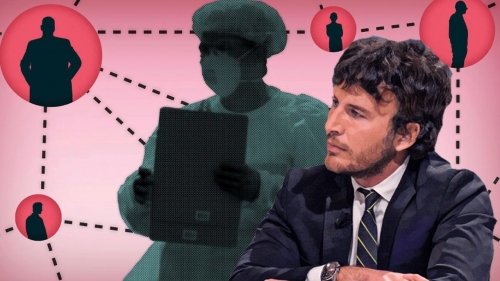
Diego Fusaro: une gauche de droite?
Par Jaime Revès
Ex: https://revistacentinela.es/diego-fusaro-una-izquierda-de-derechas/
Comme le dirait Obi-Wan Kenobi, il y a une agitation dans l'air culturel ambiant. Pour l'instant, ce n'est que le battement d'ailes d'un papillon. Le temps nous dira si ce battement deviendra un ouragan. Au-delà des cris des tribunes du Congrès et des titres des journaux, quelque chose est en train de changer dans le débat de fond. Il y a un certain désenchantement à gauche aujourd'hui, provoqué par la fin du cycle du 15-M, l'épuisement de Podemos et l'énorme écart entre l'agenda progressiste et les besoins réels des classes moyennes. La gauche se perd dans des débats sur l'euthanasie et promeut les lois sur les transsexuels, tandis que le commun des mortels voit son salaire diminuer, son emploi devenir de plus en plus précaire et sa facture d'électricité augmenter de façon inexplicable.
Ce sentiment de malaise que l'on peut ressentir dans le camp de la gauche est ce qui explique le succès de la Feria en Espagne. La figure de proue de ce nouveau mouvement de gauche réaliste, Ana Iris Simón, a touché les bonnes touches du piano. Dans son livre, cette femme de lettres réfléchit (comme si cela allait de soi) aux problèmes inexplicables auxquels la gauche se heurte dans des questions qui, pour la plupart des mortels, sont parfaitement naturelles. Le mépris de la gauche pour la famille, son allergie aux symboles nationaux ou son obsession à répandre un faux féminisme qui comprend l'émancipation des femmes comme leur capacité à rentrer chez elles seules et ivres.
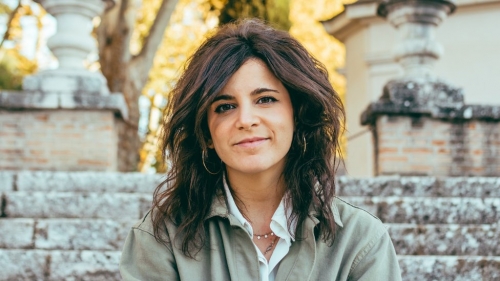
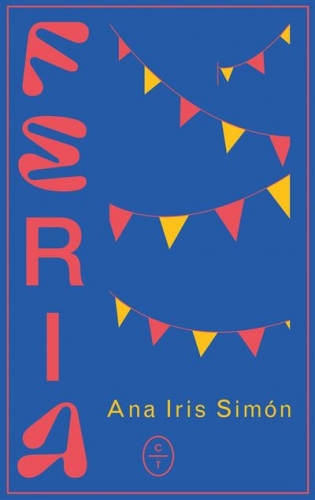
La controverse de la saison
Dans les milieux culturels, Diego Fusaro est l'un des noms qui commence à être entendu, à devenir une boussole possible pour surmonter la désorientation de la gauche. Fusaro (né à Turin en 1983) se présente sur Twitter comme un "disciple indépendant de Hegel et de Marx" et prétend se positionner "au-delà de la droite et de la gauche, contre le turbo-capitalisme".
Il y a quelques années, Esteban Hernández a publié une interview de Fusaro dans El Confidencial. Le penseur italien y dénonce le fait que "de nombreux imbéciles qui se disent "de gauche" luttent contre le fascisme, qui n'existe plus, pour accepter le totalitarisme du marché". Et il a ajouté que la gauche a trahi les travailleurs. "La gauche n'est plus rouge mais fuchsia, elle n'arbore plus le marteau et la faucille mais l'arc-en-ciel". Fusaro encourage le renforcement des liens sociaux et communautaires susceptibles de contenir l'expansion du capitalisme mondialisé et cosmopolite: la famille, le syndicat, l'école, l'université et l'État-nation. L'ancien député de Unidas Podemos, Manolo Monereo (photo, ci-dessous), a invité tout le monde sur les réseaux sociaux à connaître les idées de Fusaro. Bien sûr, ses détracteurs l'ont attaqué à la jugulaire.
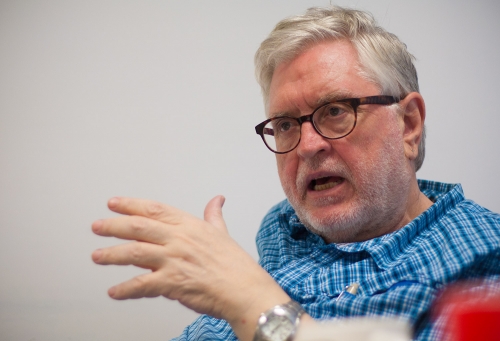
Le mois suivant, Steven Forti a qualifié Fusaro de "cheval de Troie de l'extrême droite" sur CTXT et a critiqué la gauche "encore minoritaire" qui est fascinée par les idées de l'Italien. Alberto Garzón a affirmé avoir lu Fusaro et ne pas avoir trouvé une seule idée de gauche dans ses pages.
Hasel París Álvarez a publié un article dans la revue marxiste El Viejo Topo intitulé "Íñigo Errejón, le Fusaro espagnol?" Dans cet article, l'auteur se lance dans "la polémique intellectuelle de la saison" et défend Fusaro, "le penseur de gauche accusé d'avoir diverses idées de droite". Cet article règle ses comptes avec cette gauche hégémonique dont l'agenda social s'emploie à démolir l'État, l'identité nationale et la famille, entraînant l'atomisation et la précarisation de la société et facilitant ainsi la domination des élites ploutocratiques internationales.

Le sismographe du secteur de l'édition a dû sentir les vibrations du sous-sol car, au printemps dernier, Alianza a décidé de publier Historia y conciencia del precariado, livre traitant des serviteurs et des seigneurs de la mondialisation. C'est important, car jusqu'à présent, Fusaro avait été publié en espagnol par El Viejo Topo (marxiste) et Fides (post-fasciste).
Enfin, en juin dernier, Victor Lenore a réalisé une interview complète de Fusaro dans les pages de Vozpopuli. L'Italien, de plus en plus provocateur et politiquement incorrect, a soutenu que la montée de la droite comme Le Pen était due à la trahison de la gauche. "Ils ont trahi Gramsci, Marx et la classe ouvrière pour devenir les gardiens arc-en-ciel du grand capital: ce que la gauche défend de l'habitude est identique à ce que la droite veut de l'argent".
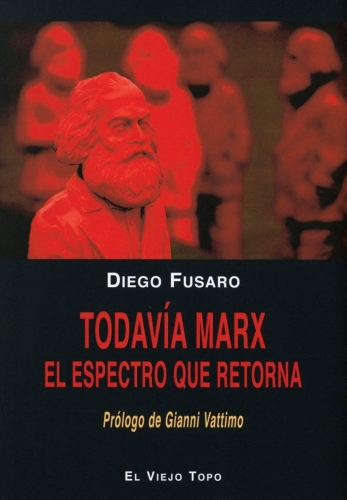
Mais il ne s'est pas arrêté là. Le philosophe affirme que "que la droite bleu turquoise gagne ou que la gauche fuchsia gagne, dans tous les cas le gagnant est le capital, qui a justement une aile droite et une aile gauche". Et il a ajouté quelque chose qui résume bien sa pensée communautaire et nationale-populaire: "La géographie politique a changé: il n'y a plus de droite et de gauche, mais un haut et un bas: le "haut" de l'élite turbo-financière exige l'ouverture à ses activités, la dérégulation économique et anthropologique, le mondialisme et la flexibilité dans tous les domaines, du travail au genre; en revanche, le "bas" doit se battre pour un État national souverain démocratique et pour l'éthicité (la Sittlichkeit) au sens hégélien, c'est-à-dire les "racines éthiques" de la communauté, de l'éducation aux syndicats."
La puissance de ce discours commence à taper sur les nerfs de la classe politique et de l'intelligentsia de gauche. Ils lui en veulent de n'avoir jamais été membre d'une organisation de gauche ou d'avoir partagé des manifestations et des sit-in avec eux. Fusaro a été traité de toutes sortes de choses: égocentrique, plouc, beauf ou carrément de néo-fasciste.
Mais qu'y a-t-il chez ce marxiste dont les idées effraient la gauche plus que la droite ?
La synthèse de la pensée de Fusaro offre des résultats surprenants. Fusaro défend la nation, la famille et les traditions populaires. Mais sa réponse ne vient pas "de la droite", mais de Marx et Gramsci, de Hegel et des Grecs.
Défense de la nation
Fusaro comprend que la seule façon de protéger les intérêts réels du "précariat" (compris comme la classe des vaincus de la mondialisation) est la défense de l'intérêt national en tant qu'union solidaire et industrieuse des travailleurs et des petits entrepreneurs locaux contre le "parasitisme du capital financier et l'aristocratie financière apatride". Quiconque remet en question l'idée de nation s'attaque aux intérêts des travailleurs, qu'il s'agisse de la gauche fuchsia ou des ONG bien-pensantes opérant avec des subventions internationales.
Valeurs de droite, idées de gauche
Si le "Seigneur mondialiste" au sommet est de gauche dans ses valeurs (globalisme, libertinage, radicalisme libertaire, élimination des frontières) et de droite dans ses idées (compétitivité, déréglementation, privatisation, dépolitisation), le Serviteur national-populaire, celui d'en bas, devrait être le contraire. Il devrait assumer les valeurs de droite (enracinement, patrie, honneur, loyauté, transcendance, famille, éthique) et les idées de gauche (émancipation, droits sociaux, égalité de liberté matérielle et formelle, dignité du travail, socialisme démocratique dans la production et la distribution). Cette approche n'est pas si différente de celle de certaines formations de droite identitaires ou souverainistes, comme le Front national, qui prône "la droite des valeurs et la gauche du travail".
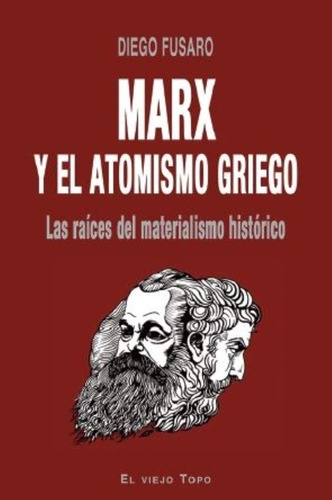
Protéger la famille
Pour l'Italien, la famille est une communauté qui s'oppose au capitalisme absolu car "elle impose un altruisme particulier, imperméable à la logique utilitaire et à l'individualisme acquisitif". Au cas où il y aurait un doute, Fusaro précise que, pour lui, la famille est la communauté immédiate basée sur l'amour, la confiance, la différence naturelle entre les sexes et l'éducation des enfants.
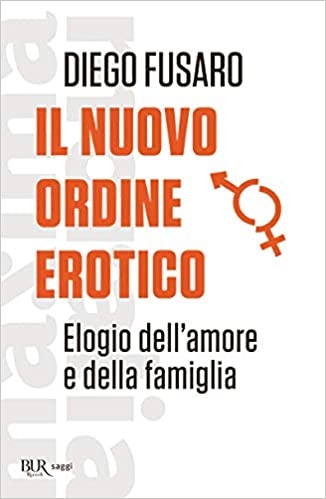
Dans Le nouvel ordre érotique. Éloge de l'amour et de la famille, Fusaro dénonce la promiscuité et le manque d'engagement comme étant le reflet du consumérisme capitaliste appliqué aux relations affectives. Fusaro cite Chesterton qui estime que le capitalisme serait la véritable force qui détruirait ou tenterait de détruire la famille. Fusaro soutient qu'aujourd'hui "se marier est un acte révolutionnaire" et va jusqu'à affirmer que "tant qu'il y a une famille, il y a de l'espoir".
Dans un article sur Don Juan, il déclare ce qui suit: "Suivant le mythe du nouveau, Don Juan, comme ses successeurs postmodernes actuels, ne fait que répéter toujours la même expérience de jouissance acéphale et autiste, qui n'est jamais stabilisée dans des formes éthiques et durables (...) Le hic et nunc (ici et maintenant) du plus-jouir sans interdits et avec un désintérêt constant pour l'autre constitue l'essence du solipsisme érotique propre au néo-libertinisme cohérent avec l'accumulation flexible."
Contre l'euthanasie
Pour Fusaro, la maternité de substitution est l'expression ultime du capitalisme, qui va jusqu'à la commercialisation de la vie et la transformation du corps de la mère en un autre bien de consommation. En même temps, il s'oppose à la "thanatopolitique de l'euthanasie en tant que fourniture gratuite de la mort".
Préservation des traditions religieuses populaires
Dans sa logique d'opposition frontale au turbo-capitalisme, Fusaro mettait en cause dans un article le consumérisme qui détruisait les fêtes de Noël italiennes. "Avec une euphorie obtuse et un enthousiasme superficiel, nous célébrons le Black Friday - l'apogée de l'aliénation - et nous nous irritons là où se trouve encore la crèche".
Une nouvelle voie ?
L'émergence d'une voix comme celle de Diego Fusaro est peut-être le signe que le débat sur le sens de la politique, de l'économie et de la culture doit être entièrement repensé. Nous ne savons pas si les idées de Fusaro seront développées en Espagne. Tout cela peut rester le battement d'un papillon ou, au contraire, prendre la force d'un ouragan. Nous ne savons pas si, à l'avenir, il y aura une alliance de patriotes de droite et de patriotes de gauche pour faire face aux problèmes du XXIe siècle. Mais le simple fait d'imaginer une issue à la confrontation de la guerre civile est rafraîchissant. N'ayez crainte : lisez Diego Fusaro.
19:30 | Lien permanent | Commentaires (1) |  |
|  del.icio.us |
del.icio.us |  |
|  Digg |
Digg | ![]() Facebook
Facebook
Les "gauchistes communistes" et les "ultra-gauchistes" sont des réactionnaires

Les "gauchistes communistes" et les "ultra-gauchistes" sont des réactionnaires
He Zhao
5 novembre 2018
Ex: http://aurorasito.altervista.org/?p=19812
La position dégradée et débilitante des gauchistes communistes et des ultra-gauchistes doit être fermement rejetée. En adhérant de manière rigide à une vision inflexible du marxisme et à une définition très étroite du socialisme, en suivant aveuglément des interprétations sélectives et littérales de textes du 19ème siècle, les communistes de gauche et les ultra-gauchistes d'aujourd'hui se protègent de l'engagement ou du soutien de luttes socialistes réelles dans le monde réel d'aujourd'hui. En qualifiant ces types de "réactionnaires", je ne veux pas dire qu'ils sont de droite, mais qu'ils réagissent contre l'avancée de l'histoire, contre les nouvelles voies que le socialisme révolutionnaire a ouvertes, en se repliant dans le confort et la sécurité du dogme. Les communistes de gauche et les ultra-gauchistes constituent l'aile conservatrice et réactionnaire de la gauche et ont construit une vision du monde basée sur un récit véhiculé et téléguidé par le département d'État de Washington: ils ne sont rien de plus que les outils de l'impérialisme contre les véritables pays socialistes existants.
Le marxisme lui-même n'est ni fixe ni immuable, mais malléable et s'adapte constamment aux circonstances, l'exact opposé du dogmatisme. Mais le fondamentalisme doctrinaire, résolu et sans nuances des partis de gauche et des ultras ne peut pas voir l'inévitabilité de certaines contradictions dans la procédure révolutionnaire, dénonçant les véritables luttes de libération sous prétexte qu'elles commettraient de petites violations du dogme. En outre, leur myopie constitutive et implacable refuse de reconnaître le processus historique révolutionnaire et la durée temporelle que le changement social exige, ignorant que leur prétention à la satisfaction immédiate est entièrement fondée sur le consumérisme.
Les ultras et les communistes de gauche sont exactement comme les pro-vie: il est techniquement vrai que les avortements ne sont pas appréciés, et que le travail salarié n'est pas le communisme. Mais ce qu'ils ne considèrent pas dans leur analyse idéaliste, superficielle et à courte vue, c'est la myriade de conditions matérielles et de situations de la vie réelle qui non seulement compliquent, mais rendent leurs positions intenables, comme celles auxquelles sont confrontées les femmes enceintes dans le contexte du patriarcat, et celles auxquelles sont confrontés les États socialistes en transition dans le contexte du capital mondial.
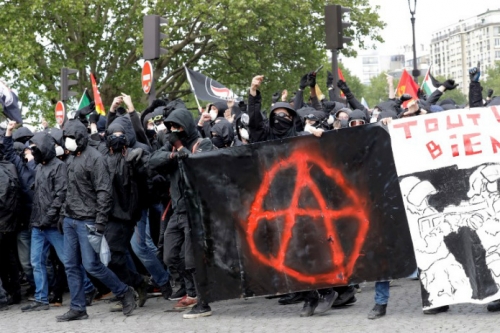
Selon eux, à moins que la production de valeur abstraite et le travail salarié ne soient immédiatement et complètement abolis, il n'y a pas de véritable socialisme. Ainsi, aucun socialisme n'a jamais existé (pendant plus de trois heures), et il n'existera jamais dans le monde dominé par la logique du capital, alors asseyez-vous, profitez du cercle théorique idiot et sentez-vous bien dans votre peau. De plus, la géopolitique peut être ignorée, la diplomatie internationale n'a aucune conséquence et le sort des vies humaines importe peu si la pureté idéologique est maintenue.
Par exemple, les gauchistes et les ultras soutiennent qu'un milliard de Chinois devraient rester dans une pauvreté extrême, vivant avec moins de deux dollars par jour, dans une nation faible et vulnérable, pour répondre à leurs critères de "vrai socialisme". Ils affirment que les réformes du marché et le plan de développement économique de Zhou En Lai et Deng Xiao Ping, qui incluaient le commerce avec l'Occident capitaliste, ont trahi l'héritage de Lénine et Mao. Mais ce n'est tout simplement pas vrai: "Le capitalisme est un fléau comparé au socialisme. Le capitalisme est un avantage sur le médiévalisme, la production à petite échelle et les maux de la bureaucratie qui découlent de la dispersion des petits producteurs. Puisque nous ne pouvons pas passer directement de la petite production au socialisme, un certain capitalisme est inévitable en tant que produit élémentaire de la petite production et de l'échange; de sorte que nous devons utiliser le capitalisme (notamment en le dirigeant dans les canaux du capitalisme d'État) comme un lien intermédiaire entre la petite production et le socialisme, comme un moyen, une voie et une méthode pour accroître les forces productives" (Vladimir Lénine, "L'impôt en nature", 1921).
"Nous voulons faire des affaires. Bien, et les affaires seront faites. Nous ne sommes contre personne, sauf contre les réactionnaires, chez nous et à l'étranger, qui nous empêchent de faire des affaires..... Lorsque nous aurons vaincu les réactionnaires nationaux et étrangers en unissant toutes les forces nationales et internationales, nous pourrons faire des affaires avec tous les pays sur la base de l'égalité, des avantages mutuels et du respect mutuel de l'intégrité territoriale et de la souveraineté" (Mao Ze Dong, "Sur la dictature démocratique du peuple", 1949).
La nécessité historique et les conditions objectives n'empêchent pas ces pétulants de fustiger les actions concrètes des socialistes qui luttent et construisent un changement réel, sous prétexte qu'ils utiliseraient des "méthodes impures", qu'ils ne feraient pas les choses exactement selon les voies ordonnées par les penseurs du XIXe siècle. Pour eux, l'ordre économique néolibéral mondial ne doit pas être remis en question, et un milliard de personnes vivant avec moins de deux dollars par jour il y a seulement trente ans peuvent être ignorées, et si une société a actuellement un travail salarié, indépendamment de la structure organisationnelle ou de la direction politique, elle est posée comme l'ennemi. La critique est certes importante. Nous devons être constamment vigilants et exiger de nos collègues de gauche une conduite irréprochable, surtout lorsqu'ils sont à la tête de nations. Mais les haïr et les fustiger comme des "traîtres" sur la base de motifs fallacieux et fondamentalistes, dictés subrepticement par la propagande impérialiste, et avec un soupçon de deux poids deux mesures racistes, est au mieux une position réactionnaire, et au pire un travail de sape anticommuniste tel celui préconisé par de véritables agents de la CIA.
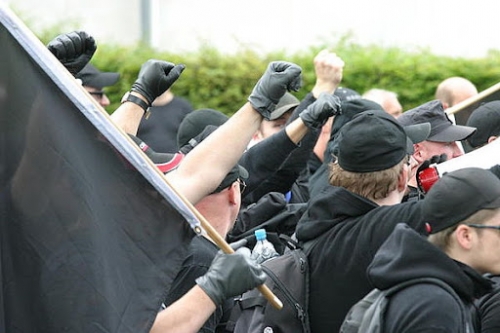
Avec tous les échecs des "vrais mouvements de gauche", les seuls qui réussissent étant les "révisionnistes", les "faux" et les "social-impérialistes" (lol), il ne reste plus rien à faire pour les "vrais mouvements de gauche". Ainsi, d'une part, ils sombrent dans la rêverie de la révolution mondiale totale qui se produira miraculeusement et détruira immédiatement le capitalisme une fois pour toutes, aussi réaliste que Jésus arrivant sur une flotte d'ovnis le jour du Jugement dernier, et d'autre part, ils se replient dans un fatalisme pathétique, le nihilisme et la misanthropie (sans la merveilleuse imagination et la bonne humeur des posadistes). C'est pourquoi certains discours de gauche sont attirés par les formes les plus régressives du primitivisme (par opposition aux courants progressistes), dans lequel 95% de l'humanité doit être purgée pour que le communisme pur soit possible.
Les ultras réagissent à la myriade de problèmes terribles auxquels l'humanité est confrontée aujourd'hui en abandonnant les conditions matérielles objectives, en se repliant sur l'idéalisme, en s'adonnant à des fantaisies enfantines et en se livrant à une pensée magique rétrograde, ainsi qu'à une exaltation solipsiste, en recueillant le crédit d'intellos gauchistes en ligne. Ils méprisent et détestent les communistes qui participent et soutiennent les luttes de la vie réelle, parce que nous les dérangeons dans le confort et la sécurité de leur tour d'ivoire narcissique. Ils n'ont aucun argument réel autre que de répéter les mêmes vieux dogmes, de battre sans cesse un cheval mort, puis de se cacher comme d'habitude derrière une ironie hypocrite. Après avoir semé la confusion et la désorientation dans la gauche occidentale pendant 100 ans, nous devrions nous méfier de ces tendances réactionnaires en nous-mêmes. Nous devons résister au nombrilisme mesquin, à la fermeture d'esprit et à la dégénérescence hargneuse du "communisme de gauche" et de l'"ultra-gauchisme", au fondamentalisme égocentrique de la gauche qui rivalise avec les réductionnistes identitaires libéraux et au détachement total de la réalité similaire à celui de la droite chrétienne.
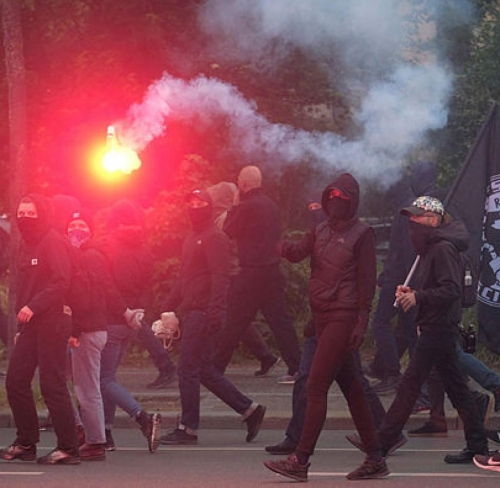
La résurgence actuelle de ces régressifs est due en fin de compte à l'absence d'espoir à l'horizon occidental pour la gauche, dans cette période anxieuse et super déprimante, conduisant à un repli sur un chauvinisme eurocentrique fondamentaliste, trouvant un réconfort dans la lecture sélective et l'interprétation littérale de textes vieux de 150 ans. La seule chose que ces tristes sacs savent faire pour atténuer temporairement les sentiments accablants de terreur, d'impuissance et de haine de soi est de regarder avec condescendance le socialisme réellement existant dans le Sud et à l'Est.
Traduction par Alessandro Lattanzio
18:59 Publié dans Actualité, Théorie politique | Lien permanent | Commentaires (0) | Tags : ultra-gauche, gauchisme, gauchistes, communisme, actualité, idéologie, théorie politique, politologie, sciences politiques |  |
|  del.icio.us |
del.icio.us |  |
|  Digg |
Digg | ![]() Facebook
Facebook
Les Jeux olympiques. Histoire et alternatives
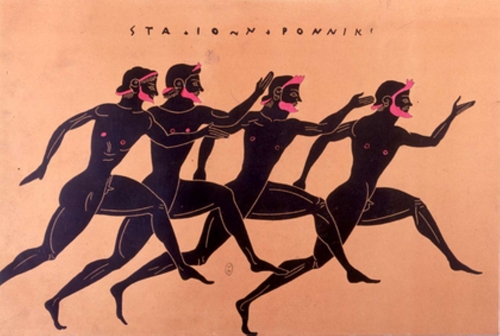
Les Jeux olympiques. Histoire et alternatives
Konstantin Stepanov
Ex: https://www.geopolitica.ru/article/olimpiyskie-igry-istoriya-i-alternativy
Antiquité
Pour commencer à parler de la situation actuelle du mouvement olympique, il n'est pas superflu de rappeler où tout a commencé.
L'établissement des jeux dans l'ancienne Olympie remonte aux dactyles, des êtres chthoniens qui ont poussé dans le sol sous les doigts de Rhéa, qui a donné naissance à Zeus. Voici ce que Pausanias écrit à ce sujet dans sa "Description de l'Hellas" (livre V, chapitre VII).
"En ce qui concerne les concours olympiques, les experts aéliens de l'Antiquité racontent qu'au début, Kronos régnait dans le ciel et qu'à Olympie, un temple à Kronos fut construit par les gens de l'époque qu'on appelait la génération dorée. Lorsque Zeus naquit, Rhéa confia l'enfant à la garde des Dactyles de l'Ida, qui étaient aussi appelés Kuretes (Curètes); ils venaient de l'Ida crétoise et se nommaient Héraclès (note 1), Peoneus, Epimedes, Jasius et Idas. Au cours des plaisanteries et des jeux, Héraclès, qui était le plus âgé d'entre eux, les défia dans une course et couronna le vainqueur d'une branche d'olivier sauvage; ils avaient tant d'olives sauvages qu'ils dormaient dessus, utilisant comme tapis les branches vertes sous eux. On dit qu'Héraclès a apporté le rameau d'olivier sauvage aux Hellènes depuis le pays des Hyperboréens, et que ceux-ci étaient le peuple qui vivait au-delà du vent <nord> de Borée. <...> Ainsi, Héraclès l'Idéen fut le premier à instituer ces jeux, et il fut le premier à leur donner le nom d'olympiques. Il a été établi qu'elles devaient se tenir tous les cinq ans, car leurs frères étaient au nombre de cinq. Certains disent que Zeus s'est disputé le pouvoir avec Cronos lui-même; d'autres disent qu'il a fondé les jeux après l'avoir vaincu. D'autres <dieux> sont également appelés vainqueurs, comme Apollon, qui a vaincu Hermès dans une course, et Arès qui l'a vaincu dans un combat à mains nues. C'est pour cette raison que le jeu des flûtes pythiques aurait été introduit lors du concours de saut au pentatl (note 2), car la flûte était dédiée à Apollon et Apollon lui-même était le vainqueur des Jeux Olympiques".
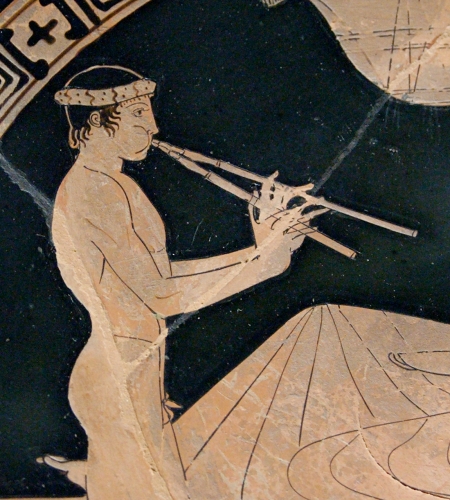
Aucune information historique précise sur les premiers jeux d'Olympie n'a été conservée. On sait seulement qu'au VIIIe siècle avant J.-C., les jeux olympiques ont été repris par le législateur spartiate Lycurgue et le roi Iphitheus d'Alyde. Ce sont ces compétitions, organisées comme les Jeux olympiques modernes une fois tous les quatre ans, que nous connaissons sous le nom de "Jeux olympiques antiques" ou "Jeux olympiques de l'Antiquité".
Il convient de noter que les compétitions à Olympie n'étaient pas les seules en Grèce à cette époque. Les Jeux pythiques à Delphes, les Jeux isthmiques à Corinthe, les Jeux néméens à Argos et les Jeux panathénaïques à Athènes. Dans certaines régions, il s'agissait de compétitions purement athlétiques (agonie au sens moderne du terme) ; d'autres étaient des concours de chanteurs, de poètes et de musiciens (comme les Jeux pythiques) ; d'autres encore combinaient à parts égales agonie athlétique et agonie musicale, comme les Jeux panathénaïques.
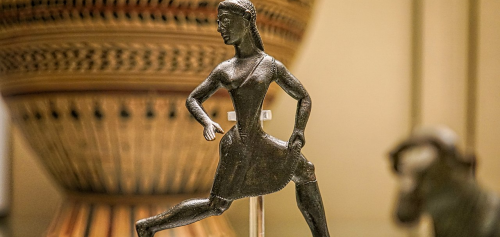
Il convient également de mentionner les Jeux héréens, qui se sont également tenus à Olympie un mois après les Jeux olympiques, et auxquels seules les filles ont participé (contrairement aux autres jeux, où traditionnellement seuls les hommes participaient et étaient présents en tant que spectateurs).
Cependant, si l'on se rappelle les intrigues de la mythologie antique, les compétitions de course, de lutte, de lancer de javelot, de disque ou de tir à l'arc sont constamment utilisées par les dieux et les hommes pour résoudre certaines situations litigieuses, étant un substitut à un conflit / une guerre entre deux ou plusieurs héros.
Des morceaux tels que :
- La compétition de course à pied entre Apollon et Hermès et la compétition de lutte entre Apollon et Arès mentionnées par Pausanias ;
- La compétition entre les prétendants de Pénélope, remportée par le jeune Ulysse ;
- Hercule rivalise dans le pentathlon avec le roi de Sicile, Erix, dans la course de chars il bat Cicna, fils d'Arès, il rivalise avec Eurytes au tir à l'arc, avec Persée au lancer du disque, avec Jason à la rame ;
- Thésée, Jason et Hercule sont devenus célèbres en tant que grands lutteurs; Achille était connu comme un coureur invincible.
Il n'est pas surprenant que les Hellènes aient vu dans les vainqueurs des concours l'incarnation de héros tels qu'Hercule, Thésée ou Achille. Les poètes helléniques glorifiaient les Olympiens en vers, les dirigeants de la polis les couvraient d'honneurs et recherchaient leur faveur, et les victoires de leurs concitoyens aux Jeux étaient considérées comme la faveur des dieux pour leurs villes et leurs pays. Les Olympiens eux-mêmes sont devenus des stratèges, des législateurs, des tyrans et des fondateurs d'écoles et d'enseignements philosophiques - on sait, par exemple, que Pythagore (à Olympie) et Platon (à Corinthe) ont remporté les jeux.
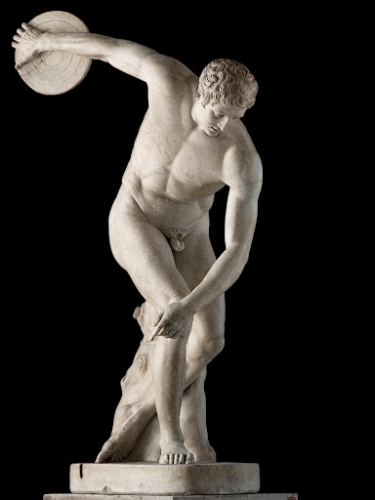
Selon Jakob Burckhardt, les jeux sportifs étaient une expression de l'esprit de compétition (agonistique) inhérent à la civilisation hellénique. Cette qualité était la base de la vision de chaque citoyen de la polis et du monde grec dans son ensemble. On peut dire que c'est ce qui distingue fondamentalement la culture hellénique de toutes les autres cultures modernes. Cela est peut-être dû au fait que le monde grec était fragmenté en petites polis-états et leurs colonies éloignées associées, lorsque la "guerre de tous contre tous" était une norme d'existence, tant pour un individu que pour la société dans son ensemble, et que la recherche constante de la perfection et de la victoire était une garantie de survie (réf. 3).
Mais il est important de garder à l'esprit que les Jeux Olympiques (ainsi que les autres) de l'époque n'étaient pas seulement et pas tellement des compétitions sportives ou artistiques, mais plutôt des actions sacrées, des mystères consacrés à des divinités panhelléniques ou locales (Note 4) complétés par des agonies de certains types de concours, qui ressemblaient à leur tour au théâtre hellénique.
Cependant, avec le temps, non seulement les représentants de l'aristocratie et les citoyens libres, mais aussi les "athlètes professionnels", très proches des sportifs modernes, dont le but n'était que la perfection dans un certain type de compétitions au détriment de la perfection intellectuelle et spirituelle, dont Platon parle avec beaucoup de regret dans son dialogue "État".
Notes de la première partie:
Note 1 - Il s'agit d'Héraclès l'Ancien ou Héraclès des Idées, qu'il ne faut pas confondre avec Héraclès de Thèbes, fils de Zeus et d'Alkmena. Cependant, la version donnée par Pausanias n'est pas la seule - divers héros helléniques, dont Héraclès de Thèbes, sont mentionnés parmi les fondateurs des Jeux, mais un dénominateur commun est que les Jeux d'Olympie ont été établis en relation avec les mythes sur la victoire de Zeus sur son père Kronos et la transition de l'âge d'or à l'âge d'argent.
Note 2 - Il s'agit d'un pentathlon (pentathlon, grec πενταθλον) qui comprenait la course à pied, le lancer du disque, le lancer du javelot, le saut en longueur et la lutte.
Note 3 - Au passage, on peut noter que ce type de compétition n'avait pas d'équivalent, ni d'adaptation similaire, dans la Rome antique. Les Romains préféraient d'autres types de divertissements (spectacles) - combats de gladiateurs, mises à mort d'animaux par les hommes (héritées de Carthage et conservées sous la forme des corridas espagnoles). Bien que les courses de chars aient été adoptées par les Romains à l'imitation des Grecs à l'époque philhellène, elles sont restées un passe-temps favori des habitants des villes romaines et, après l'interdiction des Jeux olympiques par l'empereur Théodose au Ve siècle après J.-C., jusqu'à l'époque de la Byzance tardive.
Note 4 - Outre les jeux organisés régulièrement tous les deux ou quatre ans, les jeux pouvaient également être associés à d'autres événements spécifiques - la victoire dans une bataille ou la mort d'un héros (l'exemple typique est celui des jeux organisés par Achille sous les murs de Troie en mémoire de son ami Patrocle).
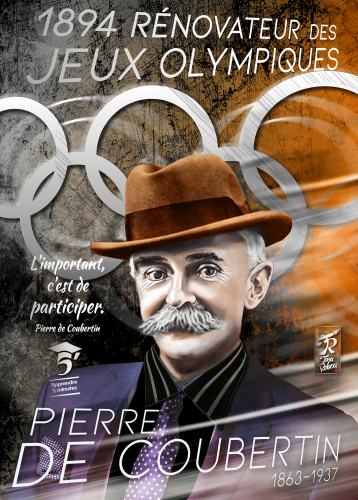
Époque moderne (fin du XIXe siècle et première moitié du XXe siècle)
L'histoire des Jeux olympiques modernes remonte au congrès de 1894 qui s'est tenu à la Sorbonne sous la présidence du baron Pierre de Coubertin, lorsqu'il a été décidé de créer le Comité international olympique (CIO) et d'organiser les premiers Jeux olympiques actuels à Athènes en 1986.
Il convient de noter qu'avant cela, des festivals sportifs de grande envergure, marquant le début de la nouvelle ère, ont été organisés dans différents pays d'Europe : des compétitions appelées "Jeux olympiques" ont eu lieu en Angleterre au XVIIe siècle; les "Olympiades de la République", organisées dans les premières années qui ont suivi la victoire de la Révolution en France; au milieu du XIXe siècle, des "Olympiades" de différentes envergures ont été organisées en Grèce, en Grande-Bretagne et en Suède.
Il est important de noter que pour de Coubertin et ses associés (en premier lieu les Français), la renaissance des Jeux Olympiques n'était pas seulement la réalisation d'aspirations romantiques visant à faire revivre les Olympiades antiques (dans leur composante sportive, bien sûr). Selon de Coubertin, c'est la mauvaise préparation physique des soldats français qui est l'une des causes de la défaite française lors de la guerre franco-prussienne de 1870-1871. Il a cherché à changer la situation en améliorant la culture physique des Français. En même temps, il voulait surmonter les égoïsmes nationaux et contribuer à la lutte pour la paix et la compréhension internationale. La "jeunesse du monde" devait être mesurée dans les événements sportifs, et non sur le champ de bataille. La renaissance des Jeux olympiques lui semble être la meilleure solution pour atteindre ces deux objectifs.
Un autre modèle pour de Coubertin était le haut niveau de forme physique et l'intérêt pour le sport qui faisait partie intégrante du style de vie du "gentleman anglais".
Les organisateurs des Jeux modernes ont pris en considération les problèmes rencontrés par leurs prédécesseurs antiques et, conformément aux règles établies depuis les Jeux olympiques d'Athènes, seuls les athlètes amateurs, pour lesquels les performances sportives n'étaient pas censées constituer une source de revenus importante, étaient autorisés à participer aux épreuves.
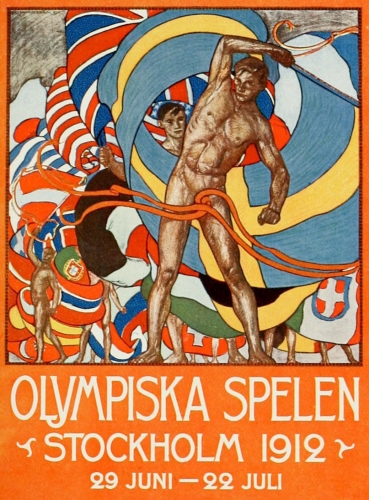
Bien que les Jeux olympiques d'Athènes aient été un grand succès et que les Jeux suivants aient été organisés régulièrement tous les quatre ans, leur sort a longtemps été remis en question en raison de la longueur de la compétition (les calendriers des Jeux de Paris en 1900, de Saint-Louis en 1904 et de Londres en 1908 duraient 5 à 6 mois chacun), Le faible intérêt des spectateurs, l'instabilité de l'ensemble des sports, le caractère secondaire des jeux par rapport à d'autres événements (les jeux de Paris et de Saint-Louis étaient liés à l'Exposition universelle, tandis que les jeux de Londres étaient liés à une grande foire franco-britannique), le manque de formation des participants. Il faut attendre la Première Guerre mondiale pour que les Jeux olympiques acquièrent un format plus ou moins familier.
Si, dans un premier temps, les Jeux olympiques ont réussi à rester en dehors du grand jeu politique dans les années 20, tout a changé au milieu des années 30.
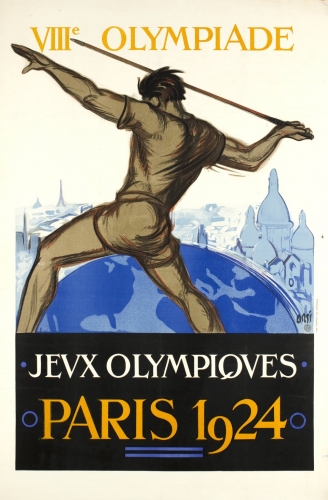
La décision d'organiser les Jeux de 1936 à Berlin a été prise des années avant l'arrivée au pouvoir du NSDAP en Allemagne. Et bien que les idées d'un éventuel déplacement des Jeux dans un autre pays circulent depuis 1934, personne n'a osé s'engager dans le premier conflit majeur du mouvement olympique international.
Pour les nationaux-socialistes, les Jeux ne sont pas seulement l'occasion de démontrer la supériorité physique de la race aryenne (les athlètes allemands remportent confortablement la première place au classement par équipe), mais aussi de montrer le "national-socialisme à visage humain" à des ennemis potentiels - les pogroms anti-juifs disparaissent des rues de Berlin et les panneaux "Juifs non désirés" sont temporairement retirés des lieux publics. Pendant les préparatifs des Jeux, le baron de Coubertin est invité à Berlin. Il est si enthousiaste devant l'ampleur des préparatifs du Troisième Reich pour les Jeux olympiques que, dans une allocution à la radio d'État allemande, il décrit Hitler comme "l'un des plus beaux représentants des âmes créatrices de notre époque".
Les Jeux olympiques de Berlin ont laissé en héritage le relais de la flamme olympique, toujours organisé avant le début des Jeux, depuis une oliveraie sacrée de l'ancienne Olympie (la paternité de cette idée est souvent attribuée à tort à Goebbels, son véritable auteur était le chef du secrétariat des Jeux - Karl Diem) et un film documentaire exceptionnel de Leni Riefenstahl, "Olympia", qui est devenu un classique absolu de la cinématographie sportive.
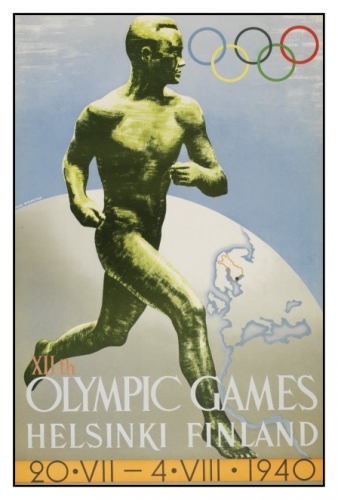
Il est important de noter que 1936 est la première tentative d'organiser des Jeux olympiques "alternatifs" - en juillet de cette année-là, il était prévu d'organiser à Barcelone les "Jeux olympiques du peuple", qui incluaient la participation d'athlètes de l'Union soviétique, mais la guerre civile espagnole a commencé, et ces jeux n'ont pas eu lieu.
L'Alternative rouge (années 1920-30 et années 1960)
Il est évident que les Jeux olympiques, lancés par de Coubertin, avec leur idéal d'un "gentleman apolitique aimant le sport", étaient considérés par les mouvements de gauche de l'époque (communistes et sociaux-démocrates) comme "bourgeois" et étrangers à l'esprit de la lutte de la classe ouvrière pour ses droits. En outre, les Jeux olympiques organisés par le CIO mettent l'accent sur la concurrence entre les pays, ce que les communistes et les sociaux-démocrates considèrent comme une manifestation de chauvinisme.
Dès la fin du XIXe siècle, des unions sportives ouvrières ont commencé à se former en Allemagne et, au début de la Première Guerre mondiale, le mouvement sportif prolétarien allemand comptait plusieurs centaines de milliers de membres actifs.

En 1920, l'Internationale socialiste des travailleurs (Sozialistische Arbeitersport Internationale, SASI), également connue sous le nom d'Internationale de Lucerne, se tient à Lucerne. L'organisation, fondée par des représentants des partis sociaux-démocrates européens (France, Belgique, Allemagne, Autriche et autres) a maintenu une politique de neutralité vis-à-vis des organisations de partis, une politique héritée du mouvement sportif ouvrier allemand (qui cherchait à rester en dehors des conflits de factions entre les socialistes allemands). Toutefois, cette politique a été contestée par les communistes, qui ont fait valoir que le mouvement sportif ouvrier ne pouvait s'abstenir de s'engager dans la lutte révolutionnaire.
Les activités de l'Internationale de Lucerne ont conduit à l'organisation de trois "Olympiades internationales des travailleurs" d'été et de deux d'hiver entre 1925 et 1937. De plus, durant cette période, les Jeux olympiques des travailleurs n'ont pas été moins bons que les Jeux olympiques organisés par le CIO en termes de nombre de spectateurs, de nombre de participants et de qualité réelle des athlètes qui y ont participé.

En 1921, le troisième congrès de l'Internationale communiste a décidé de créer une internationale parallèle des sports ouvriers (Note 5). En août 1921, le Sportintern (à l'origine l'Association internationale des associations de sports et de gymnastique rouges) a été fondé.
L'idée de créer le Sportintern a été suggérée par Nikolai Ilyich Podvoisky qui, lors du 2e congrès mondial du Comintern à l'été 1920, a discuté avec un certain nombre de délégués du monde entier de l'idée de créer une organisation sportive internationale pour les jeunes travailleurs. Podvoisky, un expert militaire chargé d'organiser la formation militaire en Russie soviétique, estimait que l'entraînement physique systématique était utile pour les besoins de l'Armée rouge et la formation de jeunes gens en bonne santé dans ses rangs (Note 6).
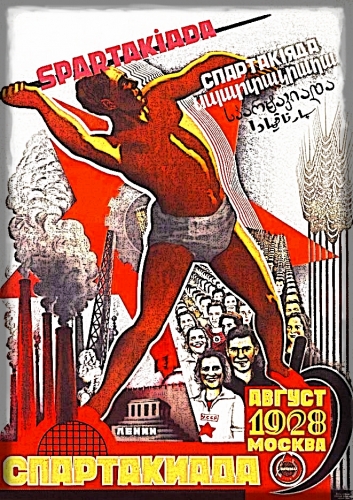
Le travail de Sportintern a débouché sur la Spartakiade internationale des travailleurs organisée en 1928 (l'été à Moscou et l'hiver à Oslo). En 1931, une spartakiade est prévue à Berlin, mais elle est finalement perturbée par les représentants de la République de Weimar, qui craignent les manifestations de masse des partisans du parti communiste. L'Olympiade des travailleurs de 1937 à Anvers a été organisée conjointement par l'Internationale de Lucerne et le Sportintern, avec la participation active et réussie de représentants sportifs soviétiques. Ces événements sont les derniers de l'histoire des Olympiades/Spartakiades des travailleurs (Note 7).
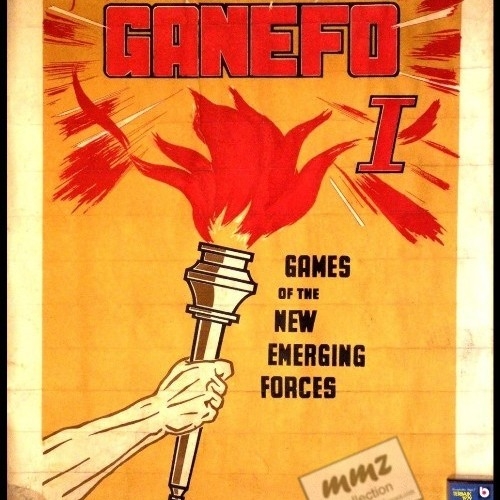 Dans ce contexte, on peut également mentionner les Jeux des nouvelles forces émergentes (GANEFO) qui se sont tenus à Djakarta, en Indonésie, en 1963. En substance, il s'agissait de créer une sorte de "Comité international olympique anti-impérialiste" pour les pays du tiers monde dont les dirigeants cherchaient à créer un nouveau pôle géopolitique, les pays non alignés qui n'étaient ni des partisans de l'Union soviétique ni des satellites des États-Unis.
Dans ce contexte, on peut également mentionner les Jeux des nouvelles forces émergentes (GANEFO) qui se sont tenus à Djakarta, en Indonésie, en 1963. En substance, il s'agissait de créer une sorte de "Comité international olympique anti-impérialiste" pour les pays du tiers monde dont les dirigeants cherchaient à créer un nouveau pôle géopolitique, les pays non alignés qui n'étaient ni des partisans de l'Union soviétique ni des satellites des États-Unis.
L'idée d'organiser ces Jeux avait été suggérée par le président indonésien Suharto lui-même, qui s'était auparavant heurté aux représentants du CIO pour la non-délivrance de visas aux athlètes d'Israël et de Taïwan qui devaient participer aux Jeux asiatiques organisés en Indonésie l'année précédente. L'initiative a été soutenue par le leader chinois Mao Zedong. Les jeux de Jakarta sont soutenus par l'URSS et les pays du bloc socialiste, qui n'ont pas envoyé leurs équipes les plus fortes aux Jeux (par crainte d'un conflit avec le CIO), mais elles sont assez compétitives.
Cependant, les Jeux GANEFO ne se sont pas développés davantage.
Notes de la deuxième partie:
Note 5 - Il est curieux qu'en 1920, avant les Jeux d'Anvers, le CIO ait ignoré une demande de la direction générale de la RSFSR pour Vsevobuch visant à autoriser huit athlètes de la RSFSR à participer aux Jeux. La raison officielle de l'absence de réponse officielle à la demande soviétique était que la RSFSR ne reconnaissait pas les obligations financières de l'ancien régime, ce qui signifiait logiquement qu'il n'y avait pas de continuité. Et jusqu'au milieu des années 1930, le CIO a considéré des figures du mouvement des émigrés - notamment le prince Lev Urusov - comme ses représentants russes. Les mémoires de Coubertin nous apprennent que dans les années 1920, Urusov a développé un projet de participation parallèle et égale aux Jeux Olympiques de deux équipes nationales de Russie - une équipe soviétique et une équipe d'émigrés. Malgré l'attitude favorable de Coubertin à cette idée, le CIO ne l'approuve pas.
Note 6 - Extrait d'un discours prononcé par N. I. Podvoisky en 1925 au Plénum du Comintern : "Faire du sport et de la gymnastique une arme de la lutte révolutionnaire de classe, concentrer l'attention des ouvriers et des paysans sur le sport et la gymnastique comme l'un des meilleurs instruments, méthodes et outils de leur organisation et de leur lutte de classe". Les parallèles avec les idées de Coubertin sur la réhabilitation de la nation française et la formation de recrues prêtes au combat pour l'armée par le biais de sports de masse sont ici tout à fait évidents.
Note 7 - De 1956 à 1991, la Spartakiada des Peuples de l'URSS, bien qu'elle ait parfois accueilli des athlètes étrangers, n'était alors considérée que comme une compétition syndicale interne, qui ne cherchait pas à être considérée comme une alternative aux Jeux Olympiques organisés par le CIO.
Jeux olympiques de la guerre froide (années 1950 à 1980)
Un dégel temporaire des relations entre l'Union soviétique et le monde occidental pendant la Seconde Guerre mondiale a permis, entre autres, l'inclusion officielle des sports soviétiques dans le Mouvement olympique international. Le Comité olympique de l'URSS a été créé en 1951 dans le but de participer aux Jeux olympiques d'été de 1952 à Helsinki, bien qu'une invitation à participer aux jeux ait déjà été adressée aux dirigeants soviétiques avant les Jeux de Londres de 1948.
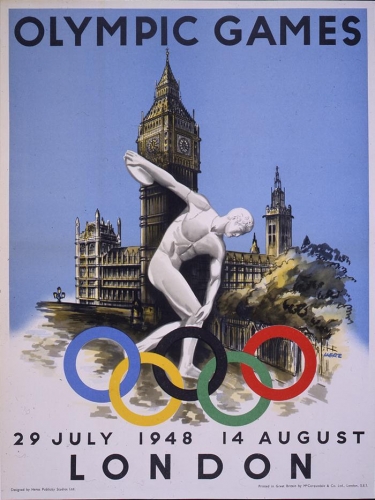
C'est le début de la confrontation entre les athlètes soviétiques et américains (ou, plus largement, entre les pays soviétiques et ceux de l'OTAN) aux Jeux olympiques (Note 8).
Si les débuts des athlètes soviétiques en 1952 ne peuvent être reconnus que comme relativement réussis face à la domination des athlètes américains (22 médailles d'or ont été remportées par les athlètes soviétiques contre 40 par les Américains), les athlètes soviétiques ont ensuite perdu la tête du classement des médailles aux Jeux olympiques d'été au profit des Américains, Lors des jeux d'été, les athlètes soviétiques ont devancé les Américains à deux reprises, d'abord à Tokyo en 1964, puis à Mexico en 1968 (les jeux de Los Angeles en 1984 ont été boycottés par l'Union soviétique et la plupart des autres pays du bloc socialiste).
Cependant, la composante politique des Jeux ne s'est pas limitée à ces confrontations.
Les Jeux olympiques de 1952, par exemple, ont vu se dérouler des matchs de football entre l'URSS et la Yougoslavie. À cette époque, les relations entre Staline et Tito avaient été irrémédiablement endommagées, et la défaite de l'équipe nationale d'URSS en deux matchs (le match aller s'est terminé sur un score de 5-5, alors que les joueurs soviétiques ont réussi à revenir de 1-5 et le match retour s'est terminé par une victoire 3-1 de la Yougoslavie) est passée inaperçue des hauts responsables soviétiques, après quoi l'équipe de football CDKA (ancêtre du CSKA actuel), dont les joueurs formaient le noyau de l'équipe nationale d'URSS, a tout simplement été dissoute.
Ces mêmes Jeux olympiques ont également vu naître la "question chinoise". Tout comme l'ONU et de nombreuses autres organisations internationales n'ont pas reconnu pendant longtemps la victoire des communistes de Mao en Chine, les représentants de Taïwan étaient membres à part entière du CIO sous la bannière de la "République de Chine". Jusqu'aux Jeux d'hiver de 1980 et aux Jeux d'été de 1984, les représentants de la RPC ont boycotté la participation aux Jeux olympiques pour quelque raison politique que ce soit.
La "question allemande" remonte à 1956 : à l'origine, le CIO ne reconnaissait que le Comité olympique allemand et les athlètes de la République démocratique allemande étaient obligés de concourir uniquement dans le cadre de l'équipe d'Allemagne unie, qui comprenait, outre la RDA et la RFA, des athlètes de Berlin-Ouest et de la Sarre. Cette situation perdure jusqu'en 1968, lorsque les athlètes de la RDA et de l'Allemagne de l'Ouest concourent pour la première fois en tant qu'équipes distinctes sous leur propre drapeau.
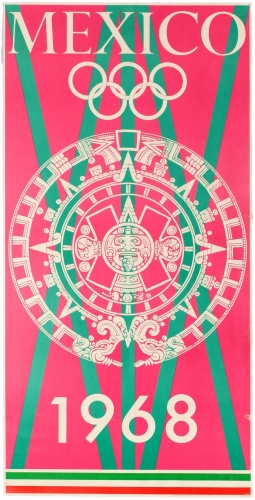
En 1968 (Jeux olympiques de Mexico), le discours politique des athlètes aux Jeux olympiques le plus connu à ce jour concerne la lutte des Noirs américains pour leurs droits, prononcé par les athlètes américains Tommie Smith et John Carlos lors de la cérémonie de remise des prix.
Bien entendu, on ne peut passer sous silence un chapitre tragique de l'histoire du mouvement olympique, les jeux de Munich de 1972, au cours desquels des membres de l'équipe olympique israélienne ont été enlevés et assassinés par des terroristes palestiniens.
Le boycott des Jeux olympiques par les équipes nationales pour des raisons politiques remonte à 1956 :
- 1956 : l'Espagne, la Suisse et les Pays-Bas n'ont pas envoyé leur délégation aux Jeux en Australie pour protester contre la répression par les troupes soviétiques du soulèvement hongrois. L'Égypte, l'Irak et le Liban ignorent à leur tour les Jeux en raison de la crise de Suez.
- 1976 : 27 pays africains plus l'Irak et la Guyane se joignent à eux pour boycotter les Jeux olympiques de Montréal, en raison de la participation de représentants de la Nouvelle-Zélande accusés d'avoir des liens sportifs avec l'Afrique du Sud. Les représentants de la RPC, du Vietnam et de l'Albanie n'ont pas non plus participé aux Jeux.

- 1980 : Le boycott des Jeux olympiques de Moscou par un bloc de pays occidentaux, dirigé par les États-Unis, pour protester contre l'invasion soviétique de l'Afghanistan. Certains pays européens qui se sont joints au boycott (Grande-Bretagne, France, Italie et autres) ont néanmoins permis à leurs athlètes de participer aux Jeux de Moscou en représentant les comités olympiques de leurs pays. En outre, pour diverses raisons politiques, les Jeux olympiques de 1980 ont été ignorés par la Chine, l'Iran, Israël et le Chili. Au total, plus de 50 pays ont refusé de participer aux Jeux de Moscou.
- 1984 : Boycott des Jeux olympiques de Los Angeles par les pays socialistes menés par l'URSS. Seule la Roumanie (en tant qu'équipe du comité olympique du pays) a représenté les pays du bloc de l'Est aux Jeux olympiques de 1984. La raison officielle du boycott était le refus des organisateurs des Jeux olympiques de satisfaire la demande de garanties de sécurité pour les délégations de l'URSS et des autres pays du Pacte de Varsovie. Bien que le motif évident derrière les actions des dirigeants soviétiques était une "réaction symétrique" au boycott des Jeux olympiques de Moscou par les États-Unis et leurs satellites. Des représentants de la Libye, de l'Iran et de l'Albanie ont également boycotté les Jeux de Los Angeles (ces deux derniers pays ont boycotté les Jeux olympiques pour des raisons politiques tant en URSS qu'aux États-Unis). Pour la première fois, la République populaire de Chine était représentée aux Jeux olympiques d'été.
- 1988 : les Jeux de Séoul sont, comme prévu, boycottés par les représentants de la RPDC, ainsi que de Cuba, du Nicaragua, de l'Éthiopie et à nouveau de l'Albanie (pour la quatrième fois consécutive).
Note de la troisième partie:
Note 8 - Les Jeux olympiques d'Helsinki sont souvent décrits comme "les derniers vrais Jeux olympiques", lorsque le sport et l'esprit de compétition étaient encore primordiaux, les composantes médiatiques, commerciales et politiques restant à l'arrière-plan.
L'alternative commerciale (années 1980-90)
Les boycotts généralisés des Jeux olympiques ont évidemment conduit à la recherche de formats alternatifs pour les événements sportifs internationaux.
En 1980, après la tentative ratée de perturber les Jeux olympiques de Moscou et l'échec d'un projet alternatif en Côte d'Ivoire, une compétition internationale de deux jours dans les principales épreuves du programme olympique d'athlétisme a été organisée à Philadelphie, qui n'était pas susceptible de présenter une alternative valable aux Jeux officiels.

En 1984, les pays du bloc socialiste, menés par l'URSS, ont organisé une série de concours intitulée Druzhba-84. Contrairement aux Jeux olympiques, les compétitions ne se sont pas déroulées dans une seule ville ni même dans un seul pays (URSS, Bulgarie, Hongrie, RDA, RPDC, Cuba, Mongolie, Pologne et Tchécoslovaquie). Néanmoins, en termes de sports inclus dans le programme des événements, les jeux de Druzhba-84 étaient absolument comparables aux Jeux olympiques officiels, et en termes de résultats montrés par les athlètes, ils ont même surpassé les Jeux olympiques de Los Angeles.
En 1986, dans le contexte de la confrontation entre l'URSS et les États-Unis, qui empêchait les athlètes les plus forts des deux pays de s'affronter aux Jeux olympiques du CIO, le magnat américain des médias Ted Turner a eu l'initiative d'organiser une compétition à laquelle tous les athlètes les plus forts du monde, représentant à la fois l'URSS (et les pays du bloc socialiste) et les États-Unis (et ses satellites européens), pourraient participer simultanément.
Turner a décrit la situation et son rôle dans celle-ci comme suit : "Imaginez qu'il y ait deux boxeurs exceptionnels qui revendiquent un titre mondial, mais que leurs promoteurs se détestent et ne les laissent pas organiser un match. Je suis l'homme qui peut aider à organiser le match".
L'idée de Turner a trouvé un écho auprès des nouveaux dirigeants soviétiques et, à l'été 1986, Moscou a accueilli les premiers Jeux de la bonne volonté, auxquels ont participé des athlètes de premier plan du monde entier, bien que le programme soit plus court que celui des Jeux olympiques officiels.
"Les Jeux de la bonne volonté étaient à l'origine positionnés comme un événement commercial, mais tant les premiers jeux de Moscou que ceux qui ont suivi en 1990 à Seattle et en 1994 à Saint-Pétersbourg se sont soldés par des pertes de plusieurs millions pour Turner (note 9).
Bien que Turner se soit désintéressé de son projet après 1994, l'inertie a conduit aux Jeux de la bonne volonté de New York (1998) et de Brisbane (2001), à l'issue desquels le projet a cessé d'exister.
Note de la quatrième partie:
Note 9 - Selon des informations officielles non confirmées, Sergei Kuryokhin avait été initialement proposé comme réalisateur de la cérémonie d'ouverture des Jeux de la bonne volonté à Saint-Pétersbourg, mais le projet d'événement proposé par Kuryokhin n'a pas été accepté par les organisateurs russes des Jeux et la proposition a été retirée en raison de "contraintes budgétaires du côté russe". On ne peut que regretter qu'un projet d'une telle envergure n'ait jamais été réalisé. Au minimum, il aurait été intéressant de voir comment Kuryokhin aurait pu intégrer un discours du président russe Boris Eltsine et d'autres officiels dans l'événement.
La réalité commerciale (des années 1990 à aujourd'hui)
Depuis les premiers Jeux olympiques de l'ère moderne, les organisateurs de l'événement ont strictement limité (ou plutôt découragé) la participation des athlètes professionnels aux Jeux.
Les concurrents des Jeux devaient répondre aux critères suivants
- Ne pas concourir pour des prix en espèces et des enjeux ;
- Ne pas être récompensé par de l'argent pour sa participation au concours ;
- Ne pas être indemnisé pour un congé de compétition ;
- Ne pas être un entraîneur professionnel.
Sur la base de ces exigences, non seulement les athlètes professionnels ont été exclus des Jeux olympiques, mais même certains sports comme le tennis ou le rugby ont été complètement exclus.
Ces critères n'ont pas été remis en question avant le début des années 1950. Elles n'ont pas non plus été soulevées par la suite, bien que le statut ambigu des athlètes de l'URSS et des pays socialistes, officiellement répertoriés comme entraîneurs sportifs, étudiants ou militaires, mais qui ne pratiquaient en fait que le sport d'élite, ait suscité des critiques de la part des représentants des pays occidentaux.
Avec l'augmentation de la commercialisation du sport dans les années 1980, les conflits liés au refus d'autoriser certains athlètes connus à participer aux jeux sont devenus de plus en plus fréquents. Par exemple, le célèbre skieur suédois Ingemar Stenmark s'est vu refuser l'accès aux Jeux d'hiver de 1984 au seul motif qu'il avait reçu l'argent des contrats publicitaires directement des annonceurs, et non de la Fédération suédoise de ski, comme l'exige le règlement.
Et bien qu'en 1980, le président du CIO, Michael Killanin, ait soutenu littéralement ce qui suit: le danger du professionnalisme du sport est qu'il transforme le sport en "show business". L'athlète perd sa liberté et devient un outil entre les mains d'un agent commercial qui détermine où il doit se produire et contre qui, en accordant une attention particulière aux revenus provenant de la vente de billets et de droits télévisés. Personnellement, je n'ai rien contre le sport professionnel. Mais si l'on admettait des professionnels aux Jeux olympiques, le mouvement olympique tomberait entre les mains de gestionnaires et d'imprésarios". Un tel rigorisme était de plus en plus en contradiction avec l'essence des Jeux olympiques modernes, qui s'éloignaient de plus en plus des principes formulés par le baron de Coubertin et se transformaient de plus en plus clairement d'un festival international du sport en "The Greatest Show on Earth".
En 1988, la décision finale a été prise d'admettre les athlètes professionnels aux Jeux olympiques, ouvrant ainsi la porte aux représentants des ligues étrangères (la NBA pour le basket-ball et la NHL pour le hockey sur glace) comme hégémonies de facto de leurs sports respectifs.
Il convient toutefois de mentionner qu'aujourd'hui encore, on trouve parmi les médaillés olympiques des athlètes pour qui le sport n'est pas l'activité principale, comme Anna Kiesenhöfer, docteur en mathématiques originaire d'Autriche, qui a remporté la médaille d'or olympique en cyclisme sur route à Tokyo.

La réalité du dopage (des années 1990 à aujourd'hui)
La "question du dopage" trouve son origine dans les Jeux olympiques de 1960. Elle a été déclenchée par la mort du cycliste danois Knud Jensen, survenue directement sur la piste olympique. Selon l'enquête, la consommation de stimulants forts est l'une des raisons de sa mort. Les conséquences de cet événement tragique ont été la création de la commission médicale du CIO (le précurseur de l'actuelle Association mondiale antidopage, l'AMA) et la pratique de contrôles réguliers des concurrents olympiques pour la consommation de médicaments, de stimulants et de substances narcotiques interdits.
Bien que, jusqu'au début du XXIe siècle, les Jeux olympiques n'aient pas connu d'incidents majeurs de dopage en grande quantité. La seule exception a été le cas de Ben Johnson, le vainqueur canadien et détenteur du record du monde du 100 mètres, qui a été disqualifié et s'est vu retirer sa médaille d'or lors des Jeux olympiques de Séoul.
Alors que les années précédentes, depuis la fin des années 60, un maximum de 3-4 incidents avec des substances interdites étaient enregistrés pendant les Jeux, depuis 2000 (c'est-à-dire depuis la création de l'Association mondiale antidopage - AMA) le nombre d'incidents se compte en dizaines. Et les principales victimes de l'AMA ont toujours été les représentants de la Russie et des autres anciennes républiques soviétiques.
La liste des pertes de médailles pour la Russie depuis 2002
- Jeux d'hiver 2002 à Salt Lake City : 3 ors et 2 bronzes ;
- Jeux d'été 2004 à Athènes : 1 or et 2 bronze ;
- Jeux d'hiver 2006 à Turin : 1 argent ;
- Jeux d'été de Pékin 2008 : 1 or, 6 argent et 7 bronze ;
- Jeux d'été de Londres 2012 : 5 or, 8 argent et 2 bronze ;
- Jeux d'hiver 2014 à Sotchi : 3 or et 1 argent ;
- Jeux d'été de Rio de Janeiro 2016 : 1 argent ;
- Jeux d'hiver de Pyeongchang 2018 : 1 bronze.
L'apothéose de la campagne "antidopage" contre les athlètes russes a été le procès initié par Grigory Rodchenkov, l'ancien chef du laboratoire antidopage de Moscou, qui a fui aux États-Unis en 2016. Selon le témoignage de Rodchenkov dans le rapport Richard McLaren, avant les Jeux d'été 2012 et les Jeux d'hiver 2014, Rodchenkov a lui-même supervisé le développement d'agents dopants à base de stéroïdes anabolisants utilisés par les athlètes russes, ainsi qu'une falsification massive des programmes de dopage. Au terme d'un processus qui a duré des années et qui a donné lieu à de nouvelles allégations de falsification des tests de dopage du côté russe, les athlètes russes se sont vu interdire pendant quatre ans de se produire sous le drapeau de l'État aux Jeux olympiques et aux championnats du monde.
Un autre résultat de l'"affaire Rodchenkov" a été l'adoption de la loi dite Rodchenkov Anti-Doping Act (RADA) par le Congrès américain en 2019, selon laquelle les autorités américaines peuvent poursuivre toute personne, même non citoyenne américaine, pour implication dans une conspiration de dopage. La loi s'applique aux manifestations admissibles à l'AMA auxquelles participent des athlètes américains. Les infractions sont passibles d'une peine de prison pouvant aller jusqu'à 10 ans et d'une amende pouvant atteindre un million de dollars.
Une nouvelle alternative ?
Une véritable alternative aux Jeux olympiques sous les auspices du CIO est-elle possible à l'heure actuelle ?
Pour répondre à cette question par oui ou par non, il faut répondre à la série de questions suivantes :
- Qui participera à ces Jeux : professionnels ou amateurs ?
- Quels sports seront représentés aux Jeux ?
- L'ensemble traditionnel des sports adoptés aux Jeux olympiques par le CIO ?
- Cybersport ?
- Les sports de l'esprit ?
- Les sports locaux qui sont traditionnels pour les différents pays et régions ?
- Quels sont les pays qui participeront aux jeux ?
- Ou bien la participation des athlètes aux jeux sera-t-elle organisée sur une base différente de celle de la représentation de leurs nations ?
- Qui s'intéressera aux jeux du point de vue du spectateur ?
- Qui sera intéressé par les jeux du point de vue des annonceurs ?
Il convient de noter d'emblée que le nombre de compétitions alternatives au format des Jeux olympiques proprement dits, ou sans chevauchement avec celui-ci, est assez important.
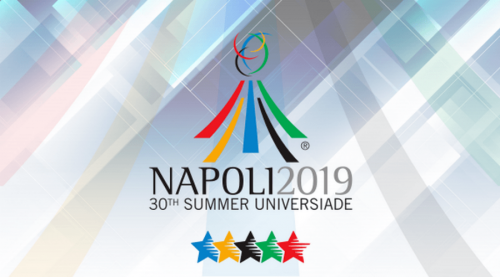
Il existe des événements bien connus tels que les Jeux paralympiques (pour les athlètes handicapés) ou les Universiades (pour les étudiants athlètes). Festivals internationaux pour les sports "non-olympiques". Les compétitions régionales - Jeux asiatiques, africains et panaméricains ainsi que les Jeux du Commonwealth. Maccabiades - compétitions pour les athlètes juifs du monde entier. Les jeux "professionnels" hautement spécialisés - militaires, marins ou pompiers. Par ailleurs, il existe des compétitions de "nations non reconnues" auxquelles participent des athlètes représentant à la fois des pays et territoires non reconnus par le CIO et des mouvements luttant pour l'indépendance de certaines régions.
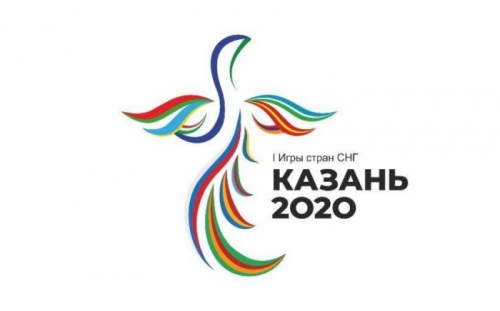
Les Jeux de la CEI qui ont eu lieu à Kazan en septembre de cette année peuvent également être mentionnés parmi les jeux régionaux, mais force est de constater que ces jeux n'ont pas réussi à susciter un quelconque intérêt sportif ou médiatique.
Contrairement à 1984, lorsque l'Union soviétique a pu mobiliser ses alliés socialistes et organiser une compétition Druzhba '84 comparable aux Jeux olympiques de Los Angeles, la Russie n'est pas prête, à l'heure actuelle, à organiser et à mettre en œuvre de telles compétitions par elle-même. La raison en est qu'à l'heure actuelle, le statut de l'URSS en tant que l'une des deux principales puissances sportives du monde est hors de portée de la Russie. Au mieux, une compétition alternative sous l'égide de la Russie pourrait prendre la forme d'un "championnat ouvert de la CEI". Pour l'instant, on ne pourrait parler d'une véritable alternative aux Jeux olympiques que si la Chine - seul pays en termes de médailles remportées aux Jeux olympiques d'été - était l'initiateur et l'organisateur de tels jeux, prêt à défier les États-Unis ainsi que le CIO et l'AMA. Toutefois, la mesure dans laquelle la Chine, à la fois en tant que participant, en tant que plus grand consommateur de contenu médiatique et en tant que l'un des plus grands annonceurs (au total), est prête à lancer un tel projet est largement hypothétique.
Des compétitions mondiales dans des sports qui ne figurent pas et n'ont jamais figuré au programme des Jeux olympiques, ou des versions "reconstituées" de sports traditionnels (par exemple, le "punkration" du programme des Jeux olympiques de l'Antiquité) pourraient, d'une part, stimuler l'intérêt des gens du monde entier pour leurs racines civilisationnelles et, si possible, les rapprocher de l'esprit des anciens Jeux olympiques, mais on ne peut que spéculer sur la popularité de masse de telles compétitions à l'heure actuelle.
Une alternative curieuse, mais plutôt effrayante, aux Jeux olympiques traditionnels pourrait être des jeux exempts non seulement de contrôles antidopage (tous les stimulants possibles sont autorisés, et les athlètes les utilisent à leurs risques et périls), mais aussi de contrôles sur l'"humanité" des participants - utilisation d'implants de membres, à long terme - muscles artificiels, organes artificiels et intelligence artificielle (à l'extrême). Pour l'instant, il ne s'agit que d'un terrain de discussion pour divers concepts intelligents (ou moins intelligents), mais nous pouvons supposer avec un haut degré de probabilité que dans les prochaines décennies, certaines de ces idées pourront être réalisées dans le cadre des Olympiades officielles.

Selon les experts, les cyber-olympiades de sports informatiques (avec éventuellement l'intégration de "sports de l'esprit", par exemple les échecs) ne sont pas loin. Les tournois mondiaux de Counter Strike, StarCraft, DOTA rassemblent des dizaines de milliers de spectateurs dans l'espace réel et des millions de vues dans l'espace virtuel. La question de la reconnaissance de l'eSport par le CIO ou de la création d'une organisation mondiale distincte regroupant les organisations nationales d'eSport reste ouverte.
En résumant les brèves spéculations sur les perspectives des compétitions sportives de niveau mondial alternatives aux Jeux Olympiques sous l'égide du CIO, on peut seulement affirmer que dans les prochaines décennies :
- La confrontation entre les athlètes américains et chinois aux Jeux olympiques va persister ;
- Les athlètes russes, avec un soutien approprié de l'État, tant en termes de fourniture matérielle de sports professionnels que de sélection de personnel d'encadrement adéquat, pourront rester parmi les leaders du sport mondial (parmi les trois ou cinq premières puissances sportives) ;
- La création d'une véritable alternative aux Jeux olympiques sous les auspices du CIO est irréaliste pour le moment, et un boycott indicatif des Jeux par la Russie a peu de chances d'aboutir à des résultats significatifs, que ce soit au niveau national ou international ;
- La vulnérabilité du sport russe face aux attaques du CIO, de l'AMA, de la législation américaine et d'autres organismes qui pensent, à juste titre, que les attaques réussies contre le sport russe entraînent de réelles pertes d'image pour la Russie, dans le pays et à l'étranger, subsistera tant que la Russie sera en mesure de maintenir et de réaffirmer son statut de superpuissance, et tant qu'elle pourra consolider sa position dans le mouvement sportif mondial - une tâche de plus en plus problématique à l'heure actuelle ;
- Dans les années à venir, la popularité mondiale des cybersports va croître rapidement, ce qui conduira à terme soit à l'inclusion de disciplines cybernétiques dans les Jeux olympiques classiques, soit à la création de "Cyber Olympiques".
14:12 Publié dans Actualité, Sport | Lien permanent | Commentaires (0) | Tags : sport, jeux olympiques, compétitions sportives |  |
|  del.icio.us |
del.icio.us |  |
|  Digg |
Digg | ![]() Facebook
Facebook
Société contradictoire

Société contradictoire
par Georges FELTIN-TRACOL
Pour écouter: https://radiomz.org/vigie-dun-monde-en-ebullition-2-socie...
Amis de Radio Méridien Zéro,
L’actuel cirque covidien présente l’avantage de révéler les contradictions inhérentes à la société française et aux impasses qui en résultent. L’obligation du passeport sanitaire pour entrer au restaurant, dans les transports en commun sur de longues distances, au cinéma, au musée et dans les centres de loisirs avalise une ségrégation implicite entre les vaccinés et les non-vaccinés avec des cas personnels parfois absurdes pour les expatriés de retour en France traités par des vaccins chinois et russe non reconnus par les instances mafieuses dites pharmaceutiques occidentales. Or, au début de la crise sanitaire, le virus ignorait les frontières. En revanche, avec l’Ausweis vaccinal, il choisit les terrasses plutôt que les rames bondées du métro.
La hantise répétée des prescripteurs d’opinion reste néanmoins le refus officiel de la moindre différenciation. Or distinguer par le QR-code une personne vaccinée d’une autre qui ne l’est pas constitue une incontestable discrimination sérologique ou médicale. Ainsi, comme il existe de bons et de mauvais chasseurs ou de bons et de mauvais chanteurs de hard rock, il existerait sous nos cieux laïques, tolérants et bien-pensants d’horribles discriminations à combattre et d’autres, hautement citoyennes, à valoriser de manière bien sûr républicaine.

Ainsi a-t-on vu du 1er décembre 2020 au printemps 2021 une campagne d’affichage financée par Santé publique France autour des malades du VIH qui propage le même message : « Aujourd’hui, avec les traitements, une personne séropositive peut vivre pleinement et en bonne santé sans transmettre le VIH. Vivre avec le VIH, c’est d’abord vivre. »
Décrivons rapidement chacune des cinq affiches. La première montre de dos une femme et un homme enlacés sur le toit d’une métropole au Soleil couchant. Outre le slogan principal, on lit aussi en gros caractères: « Séropoétique ». La deuxième montre un couple hétérosexuel qui s’enlace dans une pièce et balance : « Séropolissons ». La troisième présente deux hommes heureux au lit. Leur comportement ne peut être que «Séropossessif ». La quatrième met en scène deux teufeurs des banlieues visiblement ravis de s’éclater, d’où le slogan : « Séropopulaire ». La cinquième, enfin, expose un couple africain et leur jeune fille, tous enthousiasmés, parce que « Séropopstars ». Remarquons qu’aucune de ces affiches n’applique les fameux gestes-barrières et le port du masque. Cette campagne officielle donne le vertige d’y voir un monde parallèle. Elle valorise la normalité des personnes atteintes du sida à l’heure où les non-vaccinés et les malades du covid mis en isolement avec en prime visite domiciliaire de la police sont accusés d’irresponsabilité pathologique.
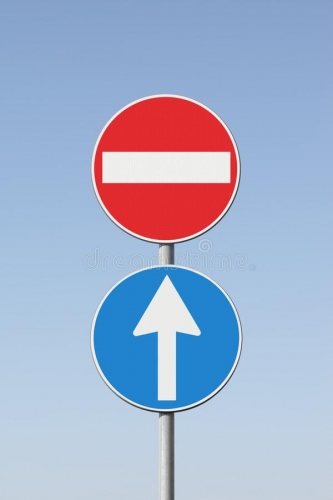
La focalisation des autorités de santé sur le sida exprime toute l’importance qu’elles accordent aux comportements sexuels et à la toxicomanie, synonymes dans leur esprit pervers d’activités festives, ludiques et joyeuses. En effet, à part le cas des transfusés sanguins et des enfants contaminés dès leur naissance par leurs mères séropositives, les autres malades du sida sont, au contraire des patients du covid-19, victimes de leurs propres turpitudes.
C’est par ailleurs au nom de la lutte contre le sida que la mairie de Paris entend ouvrir de nouveaux centres de shoot avec le léger inconvénient d’exporter hors de la gare du Nord et du quartier de « Stalincrack » quelques désagréments dans les autres arrondissements. Un pognon de dingue est ainsi gaspillé pour aider des zombies irrécupérables.
On ne peut en outre que se scandaliser du double discours officiel. Se vacciner serait un acte civique. Pourquoi alors ne pas étendre le « pass sanitaire » aux sidéens d’autant qu’il n’existe aucun vaccin ? On oublie que dans les années 1990 – 2000, la communauté gay se déchirait à propos du barebacking. Ce terme désigne des rapports sexuels volontairement sans préservatif. Des écrivains tels Érik Rémès ou le défunt Guillaume Dustan se vantent dans leurs écrits de pratiquer dans les backrooms cette conduite dangereuse. Afin de ne pas éveiller les soupçons, certains barebackers n’hésitent pas à percer leurs capotes au préalable.
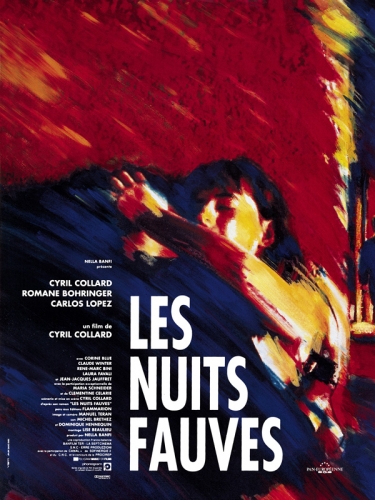
Magnifié par un cinéma hexagonal déjà à bout de souffle, le film de Cyril Collard, Les nuits fauves sorti en 1992, reçoit en mars 1993 les Césars du meilleur film, de la meilleure première œuvre, du meilleur espoir féminin et du meilleur montage, trois jours après le décès de son réalisateur – scénariste touché par le sida. Ce film autobiographique raconte la vie vers 1986 de Jean, interprété par Cyril Collard lui-même, bisexuel assumé, qui a une relation avec Laura jouée par Romane Bohringer. Cette dernière peut-elle par amour se faire contaminer ? On frise ici l’interrogation métaphysique.
À la même époque, Act Up - Paris mène des actions médiatiques violentes. Ses militants balancent du liquide rouge, symbole du sang, sur des personnalités publiques. Ils envahissent l’accueil des entreprises pharmaceutiques au cri de « Des molécules pour qu’on s’encule ! » Jamais les gouvernements successifs n’ont osé dissoudre ce groupe perturbateur de l’ordre public. Quelques années auparavant, quand Jean-Marie Le Pen suggéra lors de « L’Heure de vérité », l’émission politique-phare d’Antenne 2, d’isoler ce qu’il nommait les « sidaïques », médecins, experts et journalistes s’élevèrent contre ses propos. De nos jours, des politiciens avancent des mesures semblables à propos du coronavirus. Rappelons que l’acquisition du sida provient à 99 % d’actes lubriques ou toxicomaniques.
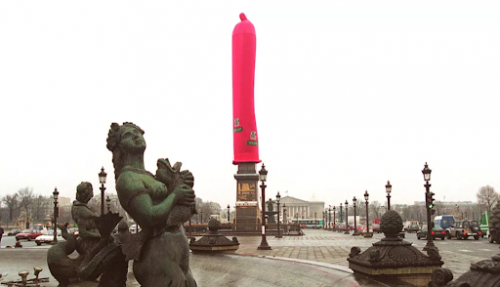
Dans Libération du 16 août 2021, la rubrique éphémère « Sexe, l’été sera chaud » s’intéresse à un certain Florent Benoît. Le journaliste Matthieu Écoiffier raconte que ce « modèle, aquarelliste et égérie de la communauté gay » est pris – je cite - « pour un vieux con car il ne prend pas de drogue, hormis de la bière. Et qu’il est le dernier à utiliser des capotes quand tous ses potes sont sous Prep, le traitement préventif anti-VIH ». Les potes en question paient-ils cette médication de leur poche ou bien est-ce la collectivité nationale qui régale ? Mais on accuse les tests PCR et antigéniques de creuser le déficit de la Sécurité sociale… De même, œuvrant à la Fondation Jean-Jaurès, proche du PS, Chloé Morin fustige « ces “ héros ” [qui] ne défendent rien d’autre, au fond, qu’un nouveau droit, celui de mettre en danger, voire potentiellement de tuer, au nom de leur bon plaisir ». Qu’on se rassure ! Chloé Morin ne vise pas ici les minets du Marais. Sa chronique, intitulée « Démocratie et antipasse » parue dans L’Express du 19 août 2021, dénonce les manifestants anti-pass. Il est si facile de critiquer le covidoscepticisme !
Qu’attend donc Santé publique France pour affronter la « covidophobie » ambiante ? Ne peut-on pas être en 2021 « covidopopstars », « covidopopulaire », « covidopossessifs », « covidopolissons » ou bien « covidopoétique » ? Pourquoi n’y lirait-on pas : « Aujourd’hui, avec les traitements comme l’hydroxychloroquine, une personne positive à la covid-19 peut vivre pleinement et en bonne santé. Vivre avec la covid-19, c’est d’abord vivre » ? À croire que l’épidémie coronavirale ne serait qu’un sordide prétexte pour mieux mâter les peuples...
Salutations flibustières !
- « Vigie d’un monde en ébullition », n° 2, mise en ligne sur Radio Méridien Zéro le 21 septembre 2021.
11:23 Publié dans Actualité | Lien permanent | Commentaires (0) | Tags : actualité, france, europe, problèmes contemporains, affaires européennes |  |
|  del.icio.us |
del.icio.us |  |
|  Digg |
Digg | ![]() Facebook
Facebook



